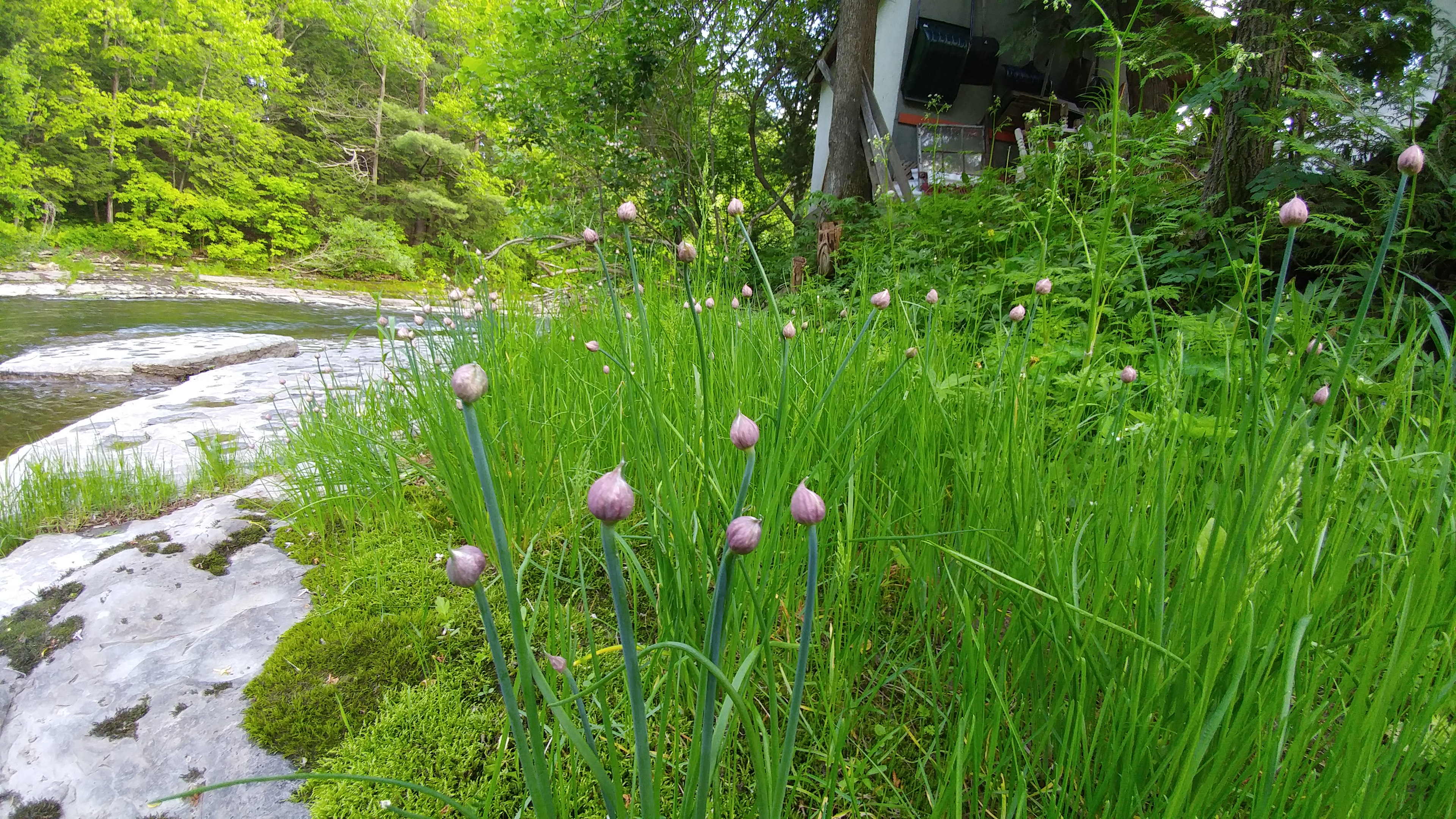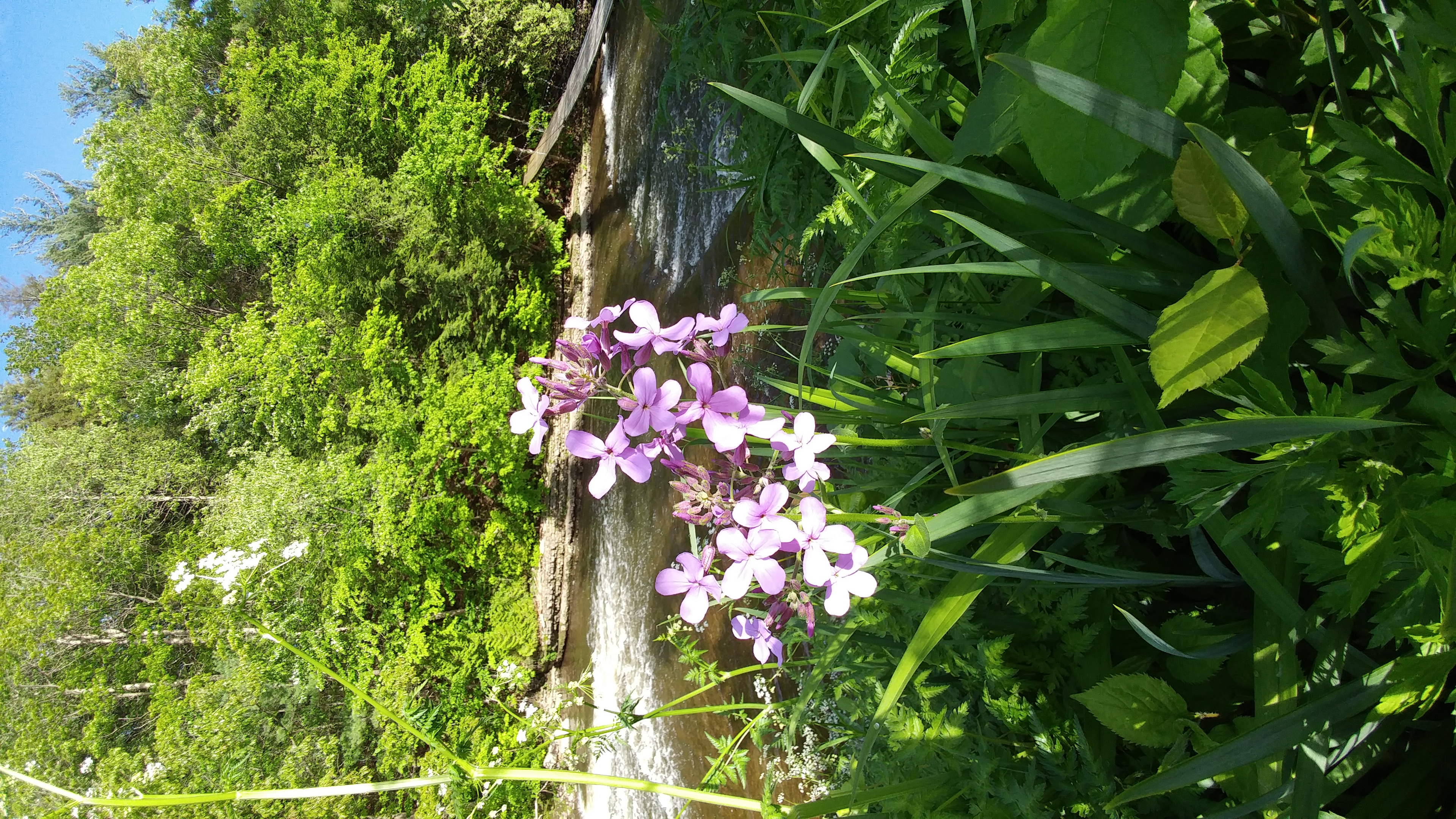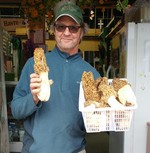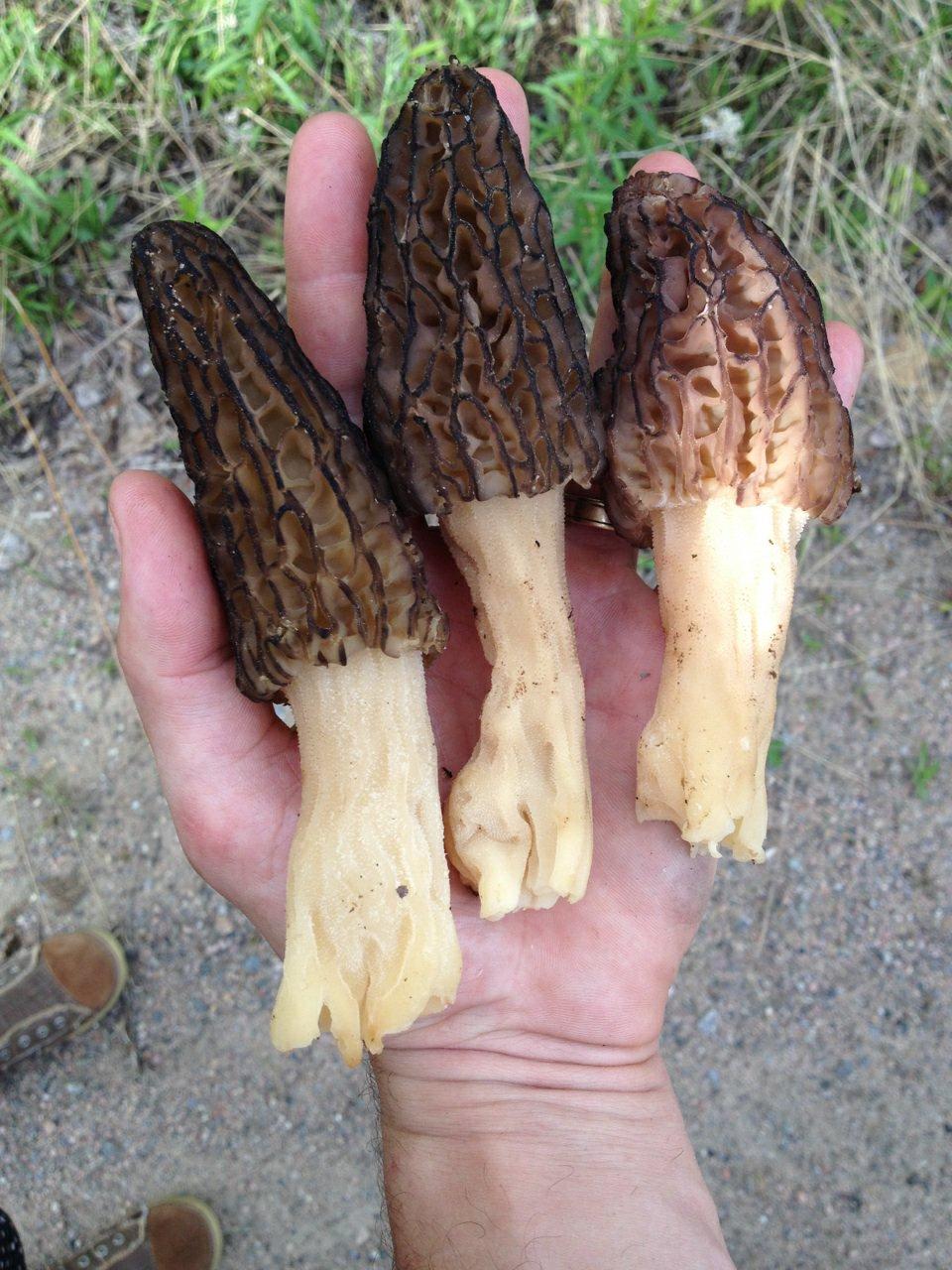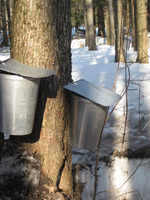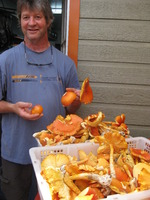Entries in ingredients (72)
Aphrodisiac food & drink
Aphrodisiac foods - Why not?
As I work on my upcoming Valentine’s menu, for inspiration beyond the local & wild ingredients, I like to delve into the world of supposedly ‘aphrodisiac’ foods for fun... It’s such an amusing exercise - a delicious mix of history, romantic lore and impossibly complicated (not to mention incomplete) science.
We as a race have been interested in supplements that spice up our sex-life forever. There are foods that historically have been deemed to enhance fertility or sexual performance over the ages, for mythological, anecdotal, or culturally symbolic reasons. Sometimes who knows how they acquired their sexy status - because they resemble genitalia in some form, say phallic in design like a carrot or because directly associated with reproduction ex. eggs, caviar, seeds. All it took for the strawberry to be linked to love was to be red, heart shaped and dippable in chocolate.
More scientifically based are those foods considered aphrodisiac due to an important source of specific chemical compound(s) that promote or are involved in the production of sex hormones, that increase estrogen or testosterone levels (fenugreek) or because they have useful building blocks for the cause – the right fats, high in iron, vitB and K like (oysters, avocado, red meat). Even celery contains the plant equivalent of testosterone and increases pheromones!
The ancient Greeks worshiped the fig for all things sexual perhaps because of its organlike shape or that it is symbolically full of seeds. Turns out that the little fruit was a good choice – quite sensual thanks to its high concentration of anti-oxidants, flavonoids and polyphenols and iron - all conducive to getting it on.
Some foods can boost libido by being super nutritious, high in Zinc, packed with electrolytes, vitamins and minerals. Like oysters, okra and coconut.
Others like coffee, garlic and chili pepper can rev up sex drive because they increase blood flow, energy, or simply make you feel good by spiking dopamine levels thus improving mood, and stamina. The Romans considered rocket (spicy greens) to be ‘hot’, maybe because they are full of vitamins and minerals? Some chemical compounds directly trigger dopamine release, but so does overall deliciousness, right?
Seems like anything that induces pleasure upping the endorphins, or that is super healthy and stimulating and/or that relaxes the body’s inhibition while stimulating the senses could do the trick!
Oysters really do top the list (and all bivalve mollusks) as they are high in Zinc which helps regulate sex hormones and increases dopamine, not to mention that an oyster is one of nature’s most complete, nourishing, energizing bites.
Almonds have long been a symbol of fertility in many cultures; pistachios contain 2% L-arginine, an amino acid involved in the regulation of vascular function and blood flow, and like all nuts and seeds, both are highly nutritious and full of the good fats used by the body for sex.
Infamously, red wine(resveratrol) and chocolate (phenethylamine) are favourites, packing powerful anti-oxidants that are anti-inflammatory and increase blood flow, on top of providing much pleasure to most people.
The Asian darling, a fruit called maca, is the most scientifically documented edible aphrodisiac, but there are other more common (to us) fruits & veggies that are surprisingly good candidates too!
Watermelon contains citrulline, which is like ‘Nature’s Viagra’, relaxing vessels that control sex drive.
Pomegranate, aka ‘the love apple’ is so high in antioxidants, increases testosterone, and stimulates appetite and mood.
Coconut is packed with the same electrolytes found in our blood, minerals like Ca, Mg, K among other minerals, providing an energy boost.
Avocado is full of Vit B6 and good fats important in sex hormone production.
Asparagus, not only phallic in design, but high in Vit.E, also does increase blood flow and oxygen.
Okra appears to be a real winner being rich in Mg (relaxant), iron, folate, zinc, vit B and nutrients.
The list of potential players goes on with many herbs and spices chemically offering up some kind of ambrosial hit such as basil, ginger, saffron, coriander, artichokes,..
And then of course, there’s that most natural of elixirs -honey, which was Hippocrates’ favourite prescription, and actually does increase testosterone levels on top of being sweet, energy and nutrient rich.
The neat thing is that science does back up many claims to a certain extent in theory, at least. In reality, the effects of any bite of food are miniscule in the big picture, as in you would have to eat so much chocolate or asparagus to register a significant difference.
However, there is an elephant in the room, and you guessed it, it is ... The placebo effect! Which is REAL and has more of an influence than any other physiological effect due to the chemical composition of the food.
In other words, some foods are technically better than others for a steamy dinner date, but basically, if you find a certain food or drink sexy, it can be!
That doesn’t mean we can’t crack the bubbly and play around with our food on Valentine’s Day, or anytime for that matter...
My cooking remains primarily about deliciousness and the quality of the ingredients - mostly local and wild, yet for this menu theme in winter, I do exceptionally bring in a few more exotic ingredients, so I have packed my menu with these said aphrodisiacs especially since they happen to be tasty too. Besides, I like to think that my guests with have all chances on their side for a sumptuous evening, and maybe even get lucky, haha..
Chaga Mushroom
Chaga
The local medicinal mushroom! There are many shrooms with medicinal properties, but let’s just say this one is having a moment.. Finally, after a few thousand years of use! It has recently exploded in popularity in the west thanks to the wide array of purported health benefits from boosting the immune system, stopping tumours, stomach trouble and allergies to anti-aging.. Inonotus Obliquus, it is a parasitic mushroom that feeds on mature birch trees in northern climes. It is hard as a rock, so not a mushroom to sauté up for dinner, more like a tonic, generally consumed as an infusion or in powder form...
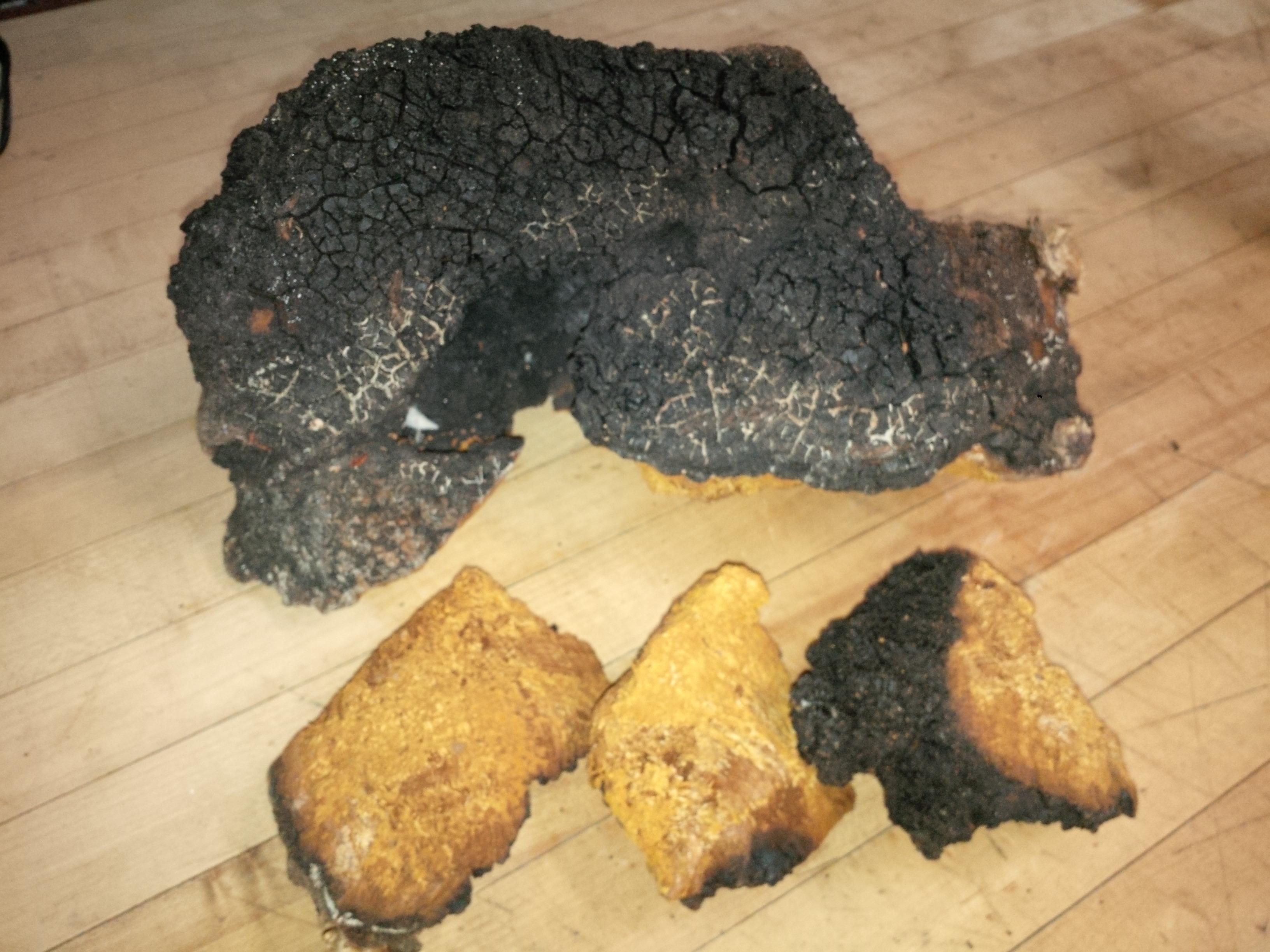
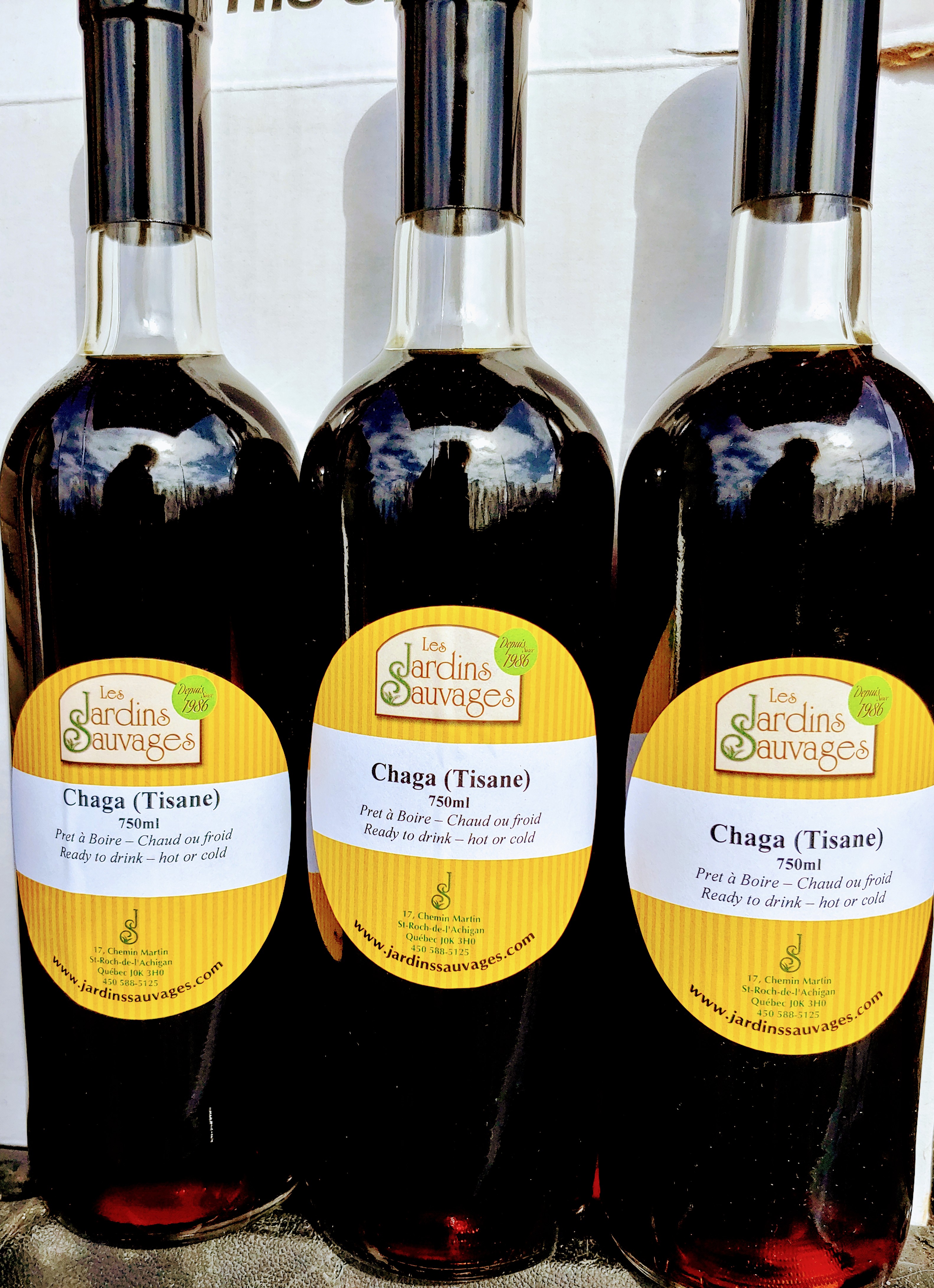
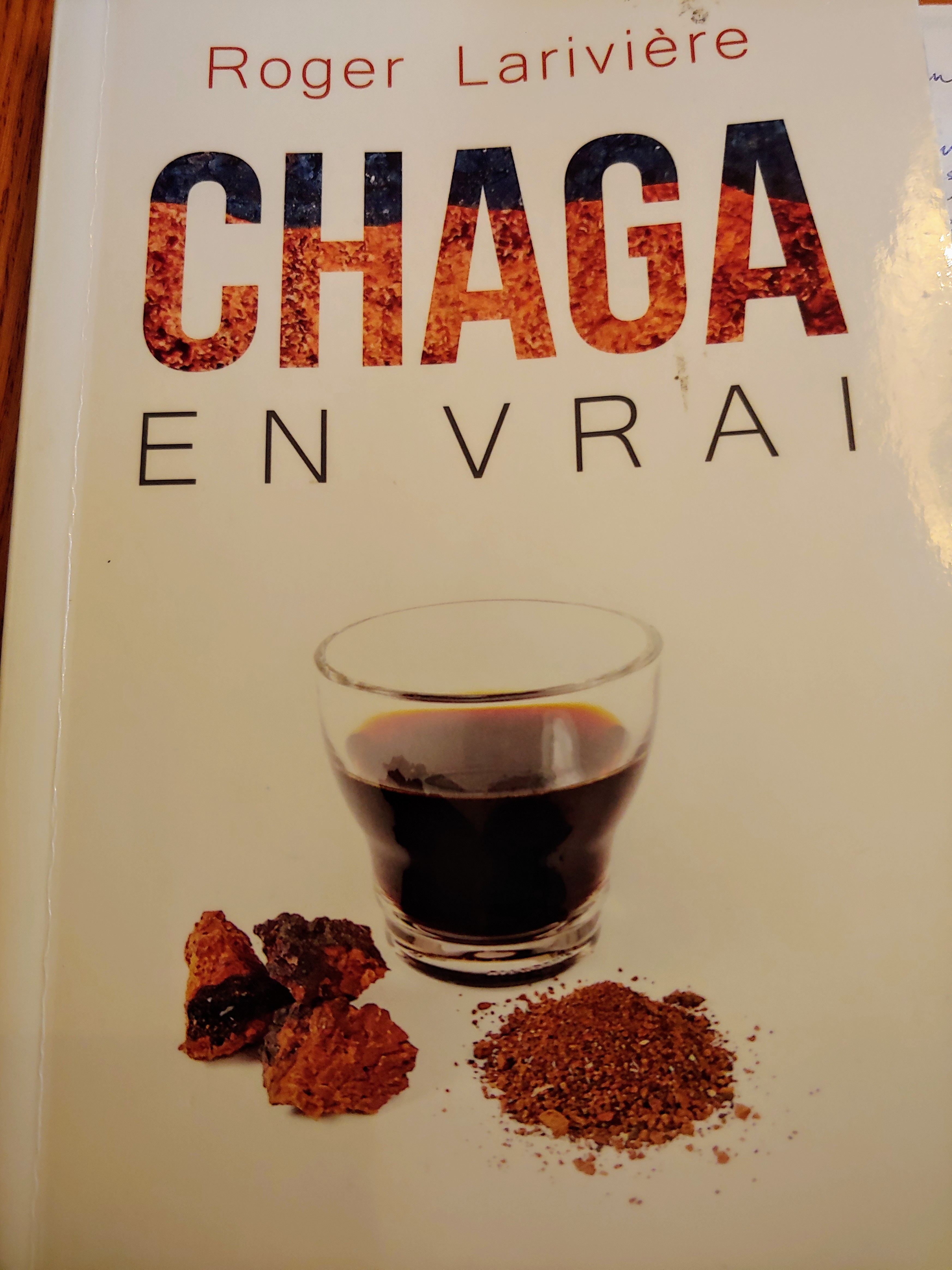
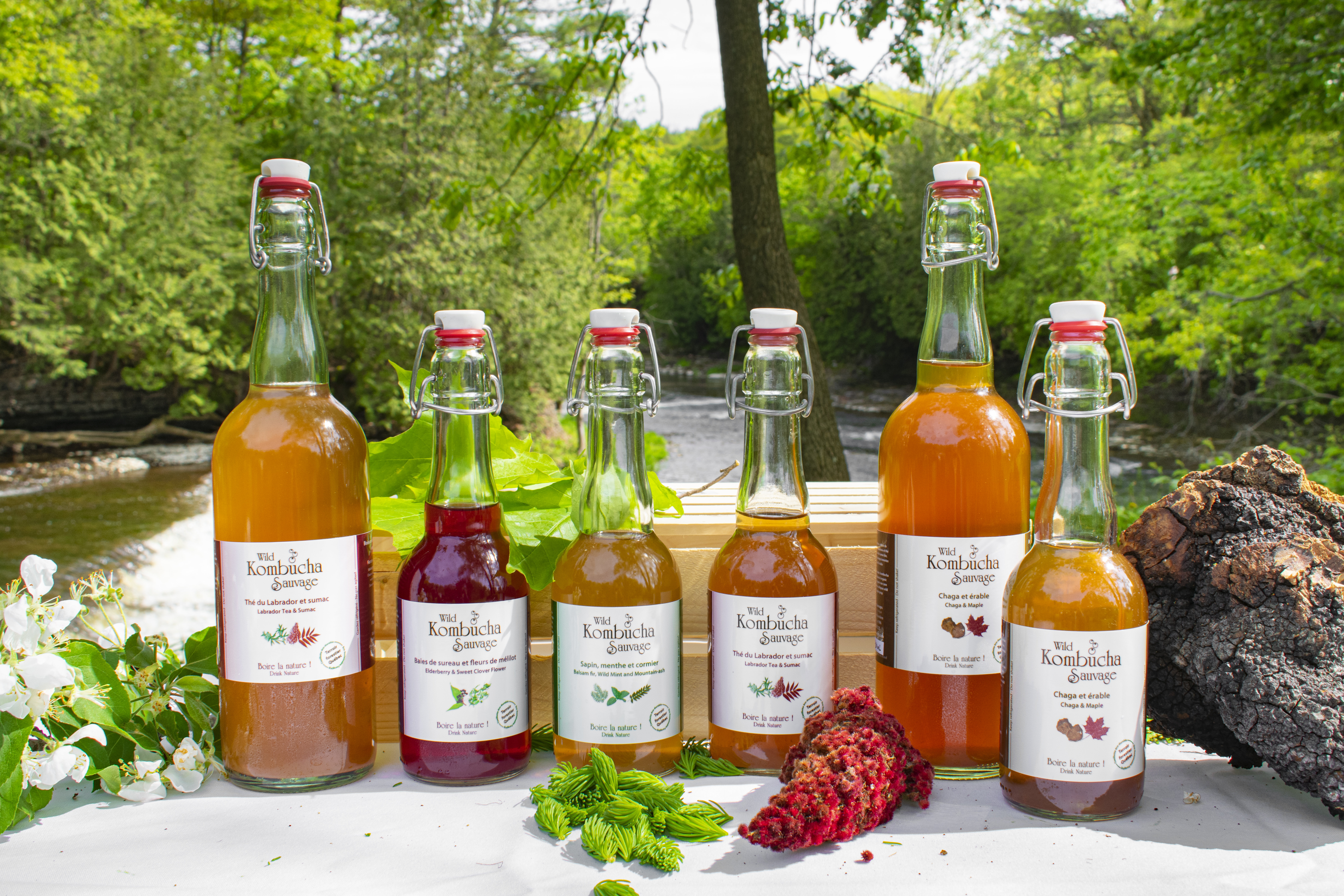
I was skeptical initially, when it came onto our radar like 10 yrs ago. Due to my ‘science background’, I am typically slow to jump on that kind of bandwagon. I do appreciate nature’s alternative ‘medicine douce’ to be used in parallel with conventional practice, but am cautious about miracle claims, equally annoyed with greedy pharmaceutical companies as with loopy charlatans who wreck it for the rest of us..
And at Jardins Sauvages, we were always about gastronomy first, and we still are.
Francois does love the stuff though, he drinks it every day. I find it kind of boring, so I don’t much. Funnily, many think I’m a passionate advocate of nutrition and wellness, when I’ve only ever been a gourmand(e), more like a hedonist. However with ethics and respect for the environment. So the local, seasonal, wild thing just fits, because besides being wholesome and making sense allround - for the soil, community too.. , it often is what tastes best.
We like to eat and cook delicious things period, mostly from the field and forest, small local farms, etc. The healthy or medicinal aspect was always bonus. When we would do tastings to introduce our wild greens /mushrooms/products to people, often they would ask ‘what are the properties?’ François would smartly respond, ‘Le bonheur, c’est délicieux’, (Pleasure, it’s delicious), first and foremost, and then add any other info as secondary. Because its true that yes, stinging nettle, dandelion, many wild greens and mushrooms, wild herbs and spices have documented properties, but we don't shout about it, focusing on instructing people how to prepare them properly for a satisfying meal.
When Chaga and Mushroom teas started to become marginally trendy, we decided to add it to our offer. Mainly because it grows in Quebec, can be harvested sustainably, and people want it.
So naturally, I was inspired to make a Mushroom tisane that was tastier – with other healthy but more flavourful mushrooms in the mix.. It has its fans, but I’ve realized that these are two different clienteles with little overlap. Those who want Chaga don’t care much about taste, they are seeking the medicine.. Those who are eating or cooking want the fresh mushrooms or other products, they aren’t necessarily interested in mushroom tea, haha. Meanwhile I was kind of wasting my time fussing because I found it so important that my mushroom tea be delicious.
Chaga has a light, woodsy aroma. I can appreciate it as is, if it lacks pizzazz. With a little maple syrup, the flavour is enhanced. I see increased complexity and apple notes in my Chaga Kombucha or in recipes with some fat/milk or alcohol/acidity.
As for the medicinal properties....
If you Google it, you will see that there is dizzying amount of info out there, from sketchy to scientific. There is work being done here at the University of Quebec in Trois Rivìeres. I bought this book by Roger Lariviière for François and upon reading it, I find it pretty convincing. Having long known about the anecdotal evidence from cultures like Siberia to Scandinavia, China, Korea and Japan, where it has been used for millennia as the secret to longevity and to treat tuberculosis, ulcers, and all kinds of ailments, it is only in the last couple of decades that research is quickly progressing globally. Now, science is catching up, which is pretty interesting.
In the fifties, when cancer started to take hold of medical journals and diagnoses started increasing worldwide, a Russian doctor noticed that there were no cases in areas where they had a custom of drinking chaga tea daily (a practice adopted when too poor to have imported tea!)
It is a mild stimulant, increasing concentration, which is why some people like to drink it like tea/coffee. But its most winner attribute/what most people are after are - is the overall immune system boosting effects, and anti-inflammatory, anti-viral properties. It has been shown to stop tumours in early stages, and to diminish the secondary effects of chemotherapy/ radiotherapy. It is high in anti-oxidants and enzymes that slow aging of the skin, hair, organ cells and aiding skin conditions like psoriasis.
It supposedly helps stabilize cholesterol and glucose levels, good for heart and blood pressure, slows allergic reactions by breaking the cytokine response, aids digestive tract issues with its anti-ulcer properties as well as the cellulose and chitins providing fibre. Oh and its spermicidal. These bio-molecules are all proven to be there, how bio-available they are upon ingestion depends on how it is prepared and on your microbiome.
Health Canada has it listed as a ‘aliment naturel’ (natural food/ supplement) and recommends not exceeding 3.6g/day (dried), safe except caution for those with penicillin allergies, on anticoagulant medication, with organ transplants and heart tremors.
The medicinal value/potential health benefits depend on how it is extracted and consumed. The active ingredients are either fat soluble or water soluble, so to get lipids like erosterol, inotodiol and polysaccharides like betulin, BTA (anti-cancer/anti-viral), and A, E, D, K vitamins, you need an alcohol extraction like a tincture.
But there is still lots of good stuff in the aqueous tea like the betaglycans, most of the anti-oxidants, melanin and polyphenols, SOD enzyme (also anti-viral/anti-inflammatory, allergies, skin etc), and protein (animo acids), as well as the B vitamins (B2, B3, B5 ) and minerals (Si, Cu, Fe, Al, Mg Na, zn, K). What an impressive cocktail!
But no, it is not a quick fix for anything. Like many medicinal plants and ‘adaptogens’, it is only with regular consumption over time that reveals healing and protection. Like with a varied healthy diet! Which only tends to be sustainable if routine, comforting and/or delicious...
I now find myself taking a glass here and there, and introducing it in my cooking more.
I always used it in tisanes, coffee, and some infusions (sauces, desserts), but often half heartedly; it felt more like a gimmick, whereas now I pick it up to layer it in with intention, and a shot of extra love.
We sell it at the market (and our online store) in dried chunks or powder, and upon demand, we have added 750ml bottles of prepared Chaga beverage that keeps in the refrigerator for a month or so.
When making your own, you want to keep in mind: In order to benefit from the multiple properties, you want a slow and long extraction, but should be careful to not heat it higher than 80C. I heat it in water to cover and turn off, leave overnight (in the fridge ideally), and do that 3x.
You can add drink it hot or cold straight up or mix it into coffee, hot chocolate, tisanes, broth, soups and sauces, smoothies or just about any recipe savoury or sweet at the end.
Fall Mushrooms and Puffballs
Finally, the local wild mushrooms are out in full force!
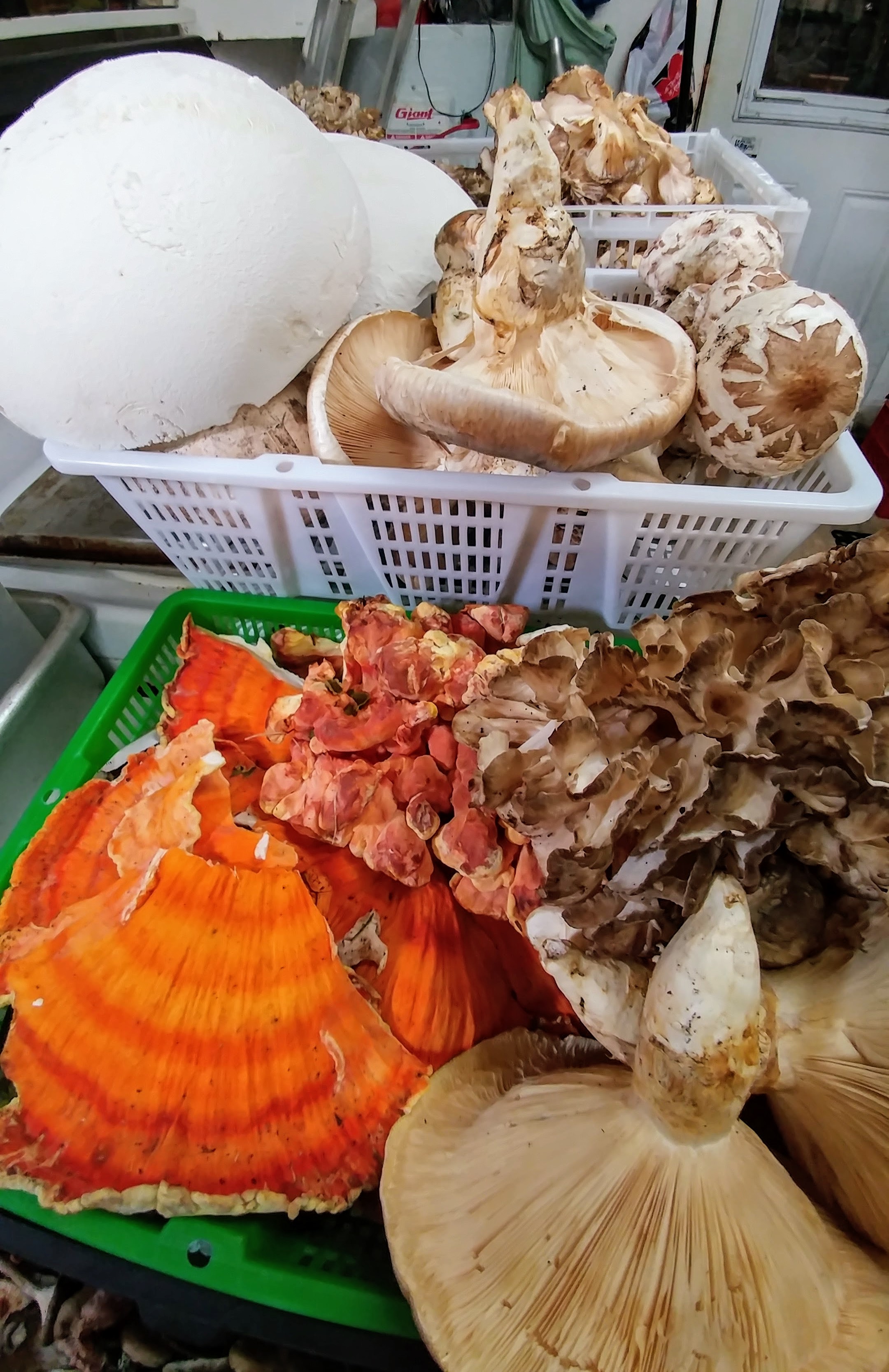 An autumn day harvest
An autumn day harvest 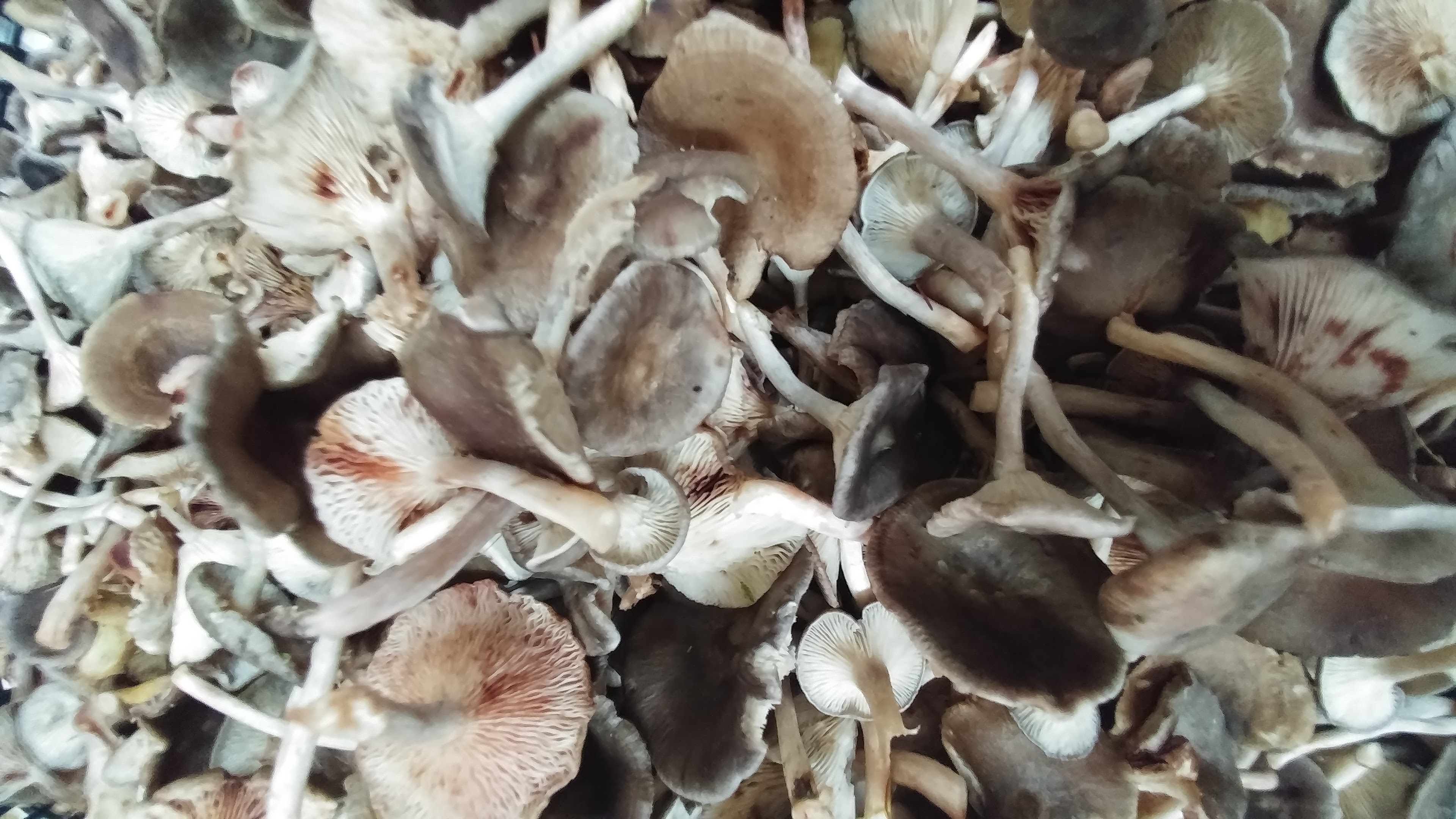 graylings - a rare treat in the chanterelle family
graylings - a rare treat in the chanterelle family
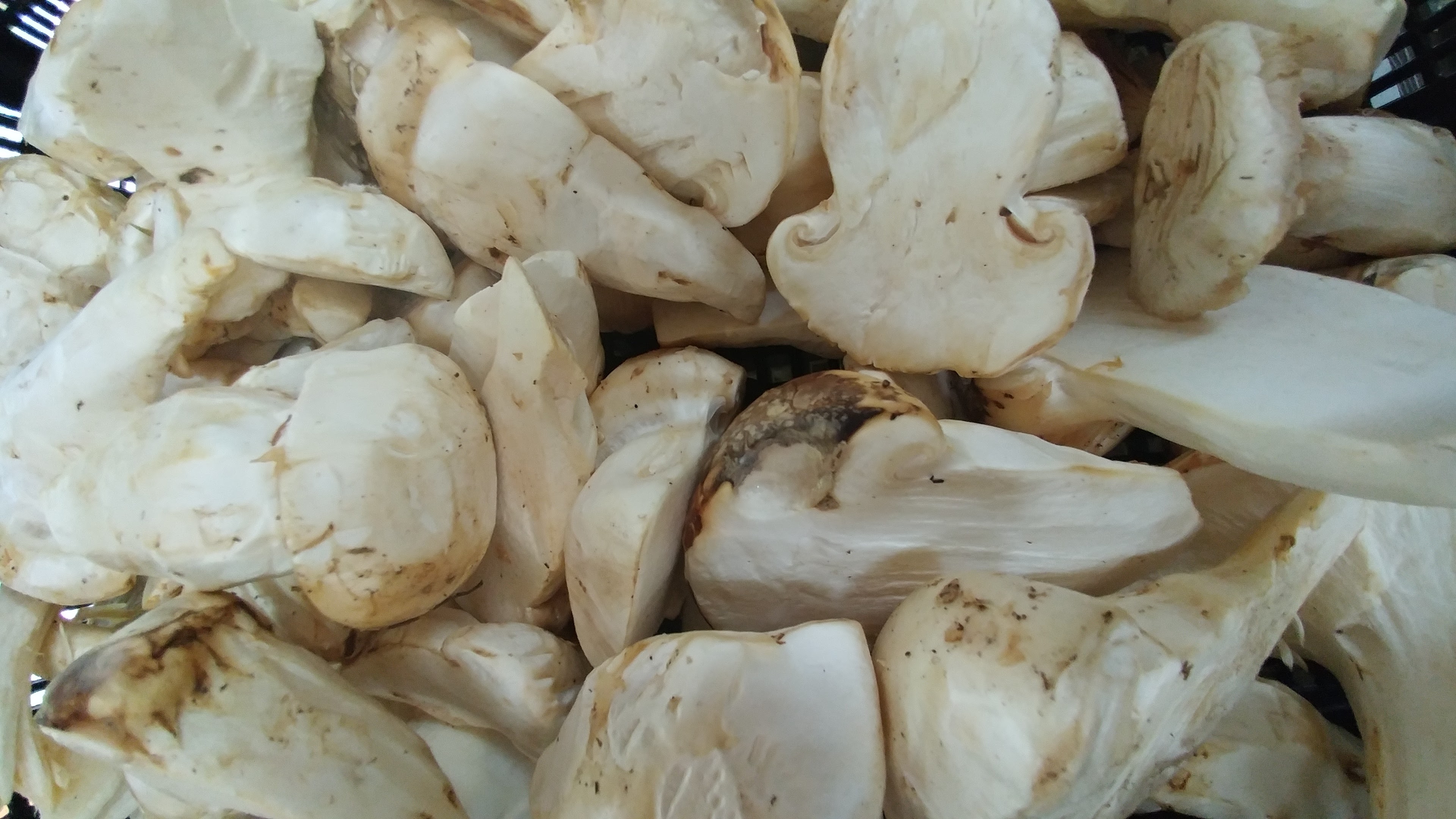 Armillaire pesant; Swollen Stalked Cat
Armillaire pesant; Swollen Stalked Cat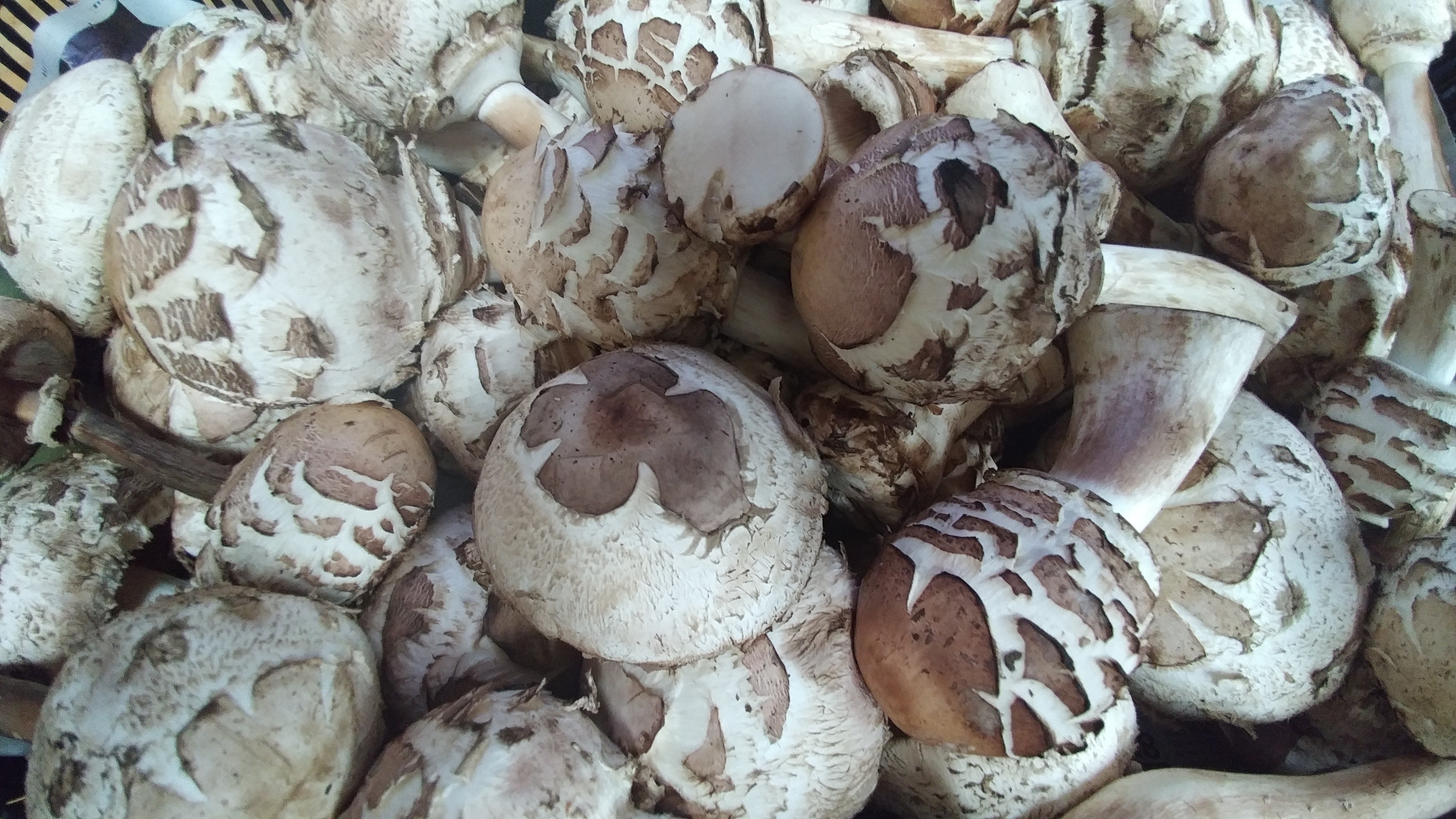 Parasol
Parasol
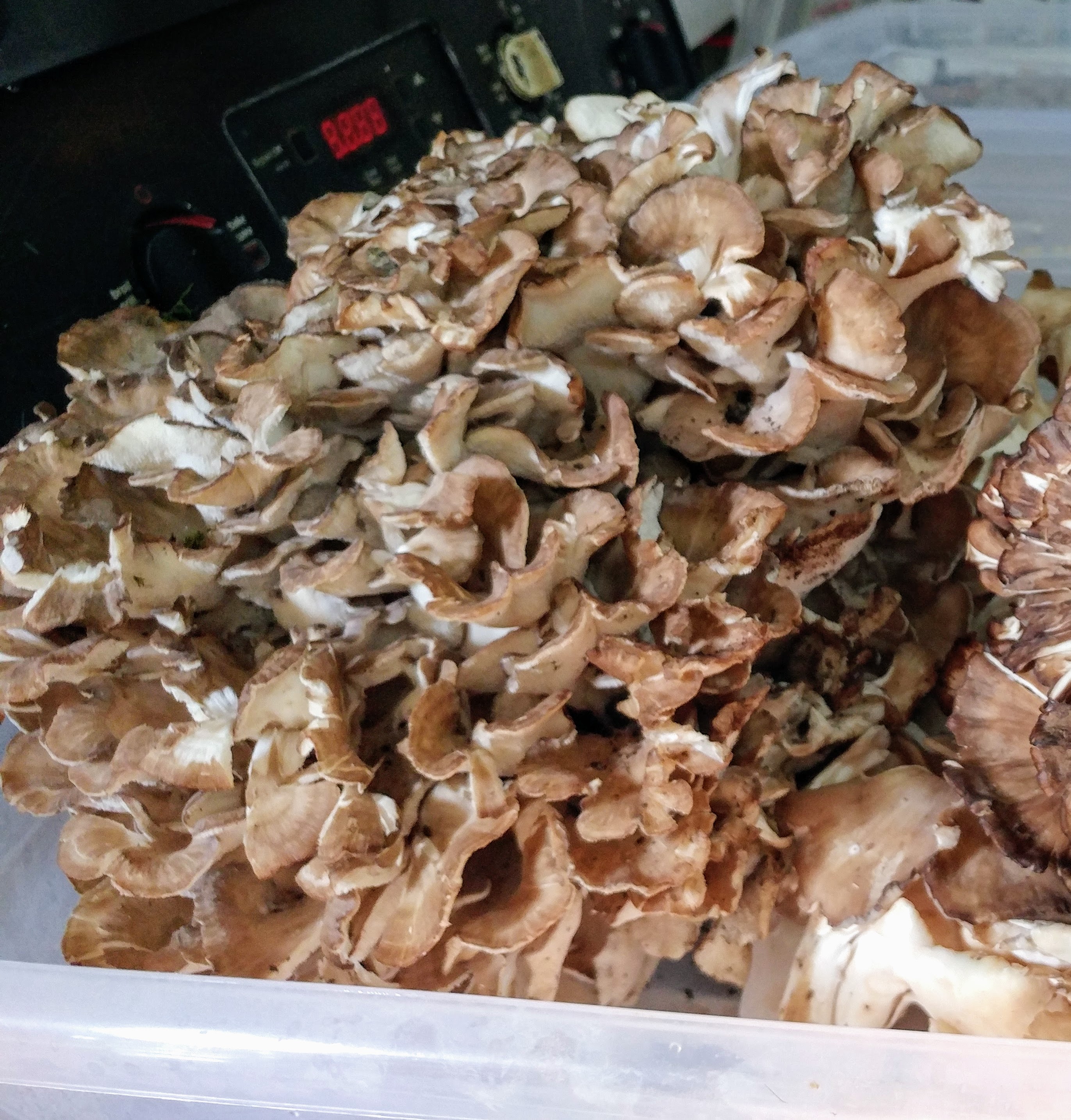 Hen of the Woods
Hen of the Woods
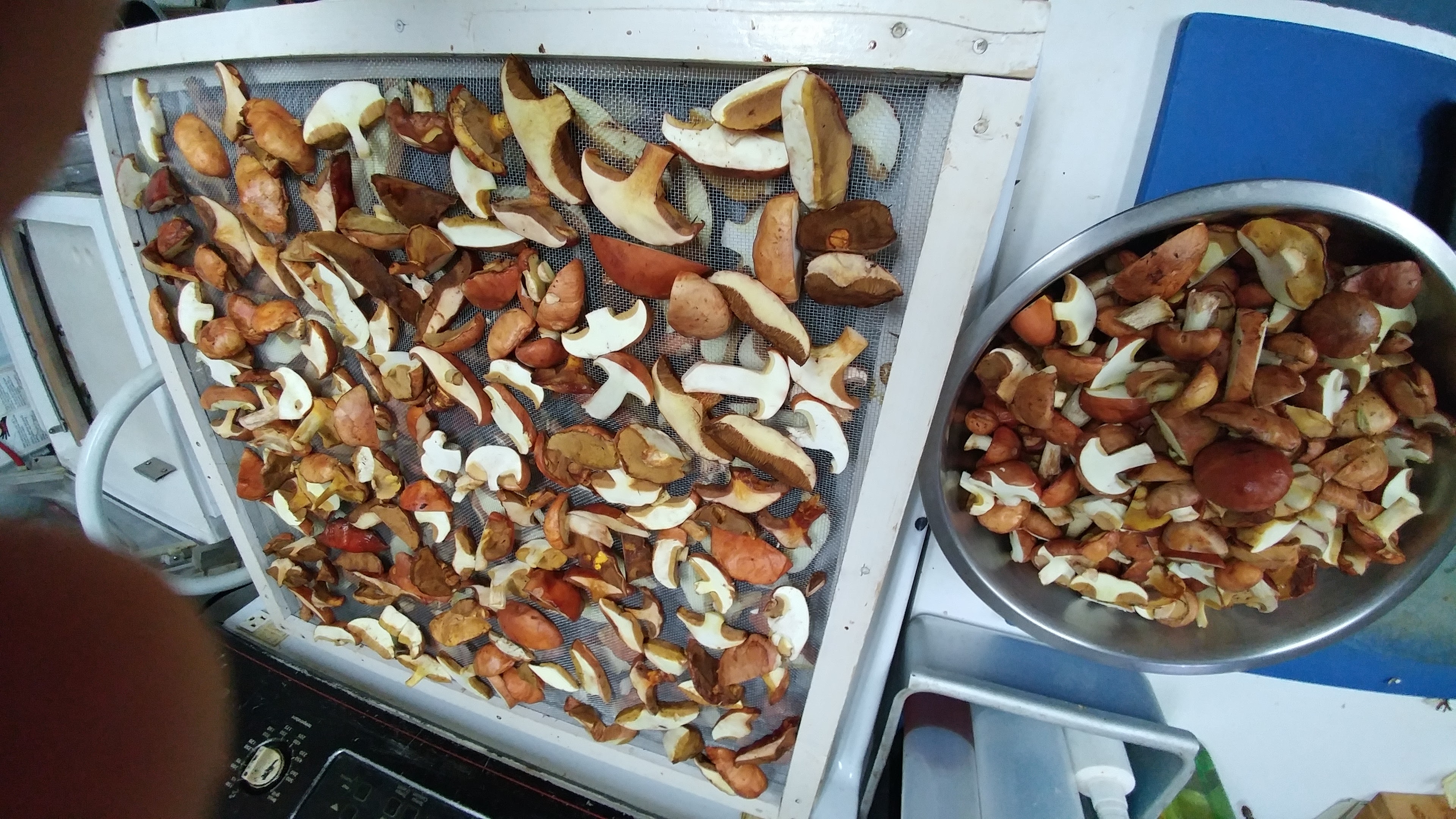 Slippery Jack - a yellow bolete that is especially good dehydrated.
Slippery Jack - a yellow bolete that is especially good dehydrated.
 Poule des bois/Hen of the Woods haul
Poule des bois/Hen of the Woods haul
Besides the Hen of the Woods (our favourite), the most spectacular is always the giant puffball, in season now.
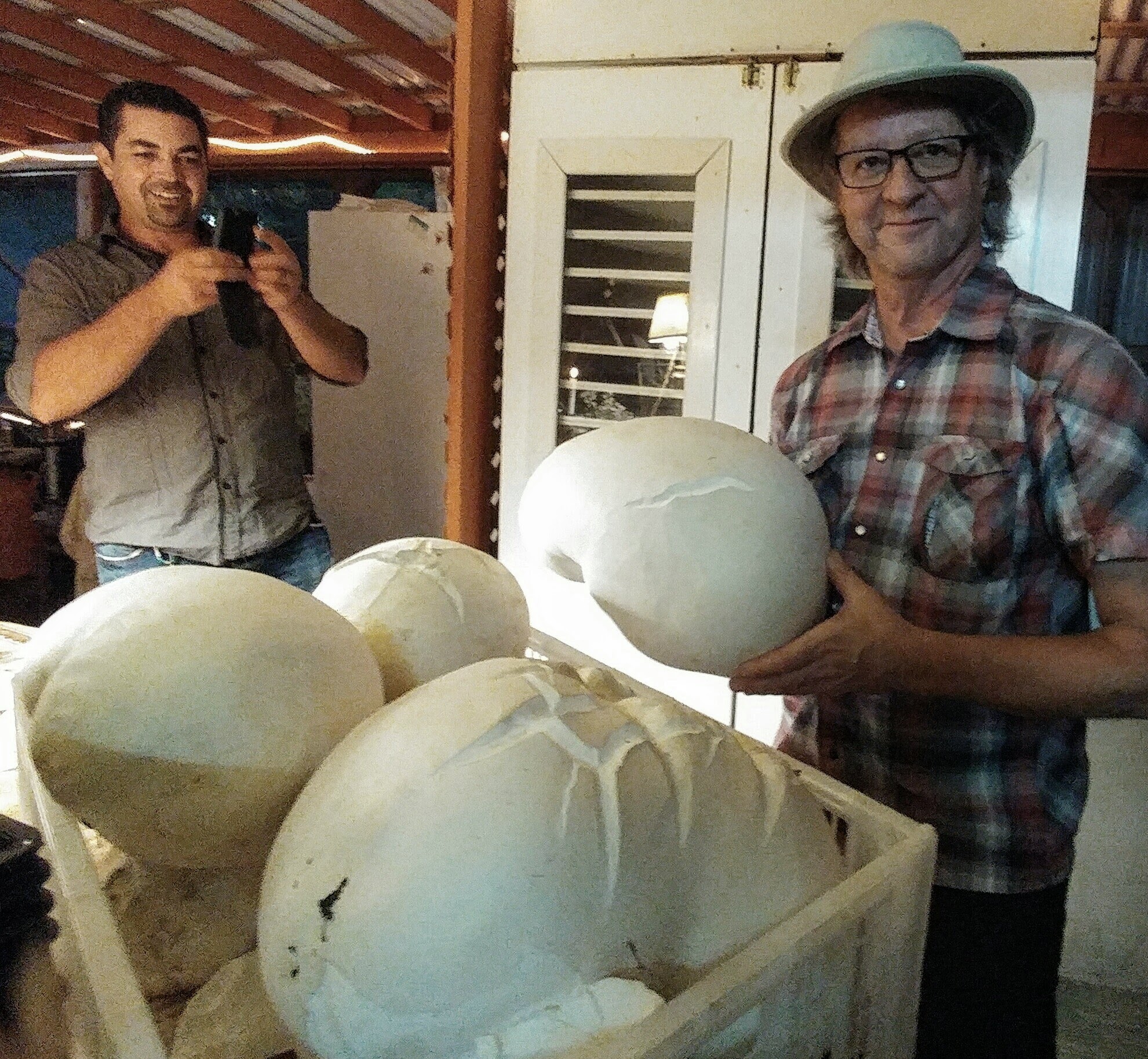
I have had multiple inquiries on how to cook it.
So, here’s the deal. It is easy enough to identify; if it is still firm and pristine white throughout when you slice it, it is good to eat. They go yellow and soft (not to mention) pungent smelling as they age past their prime.
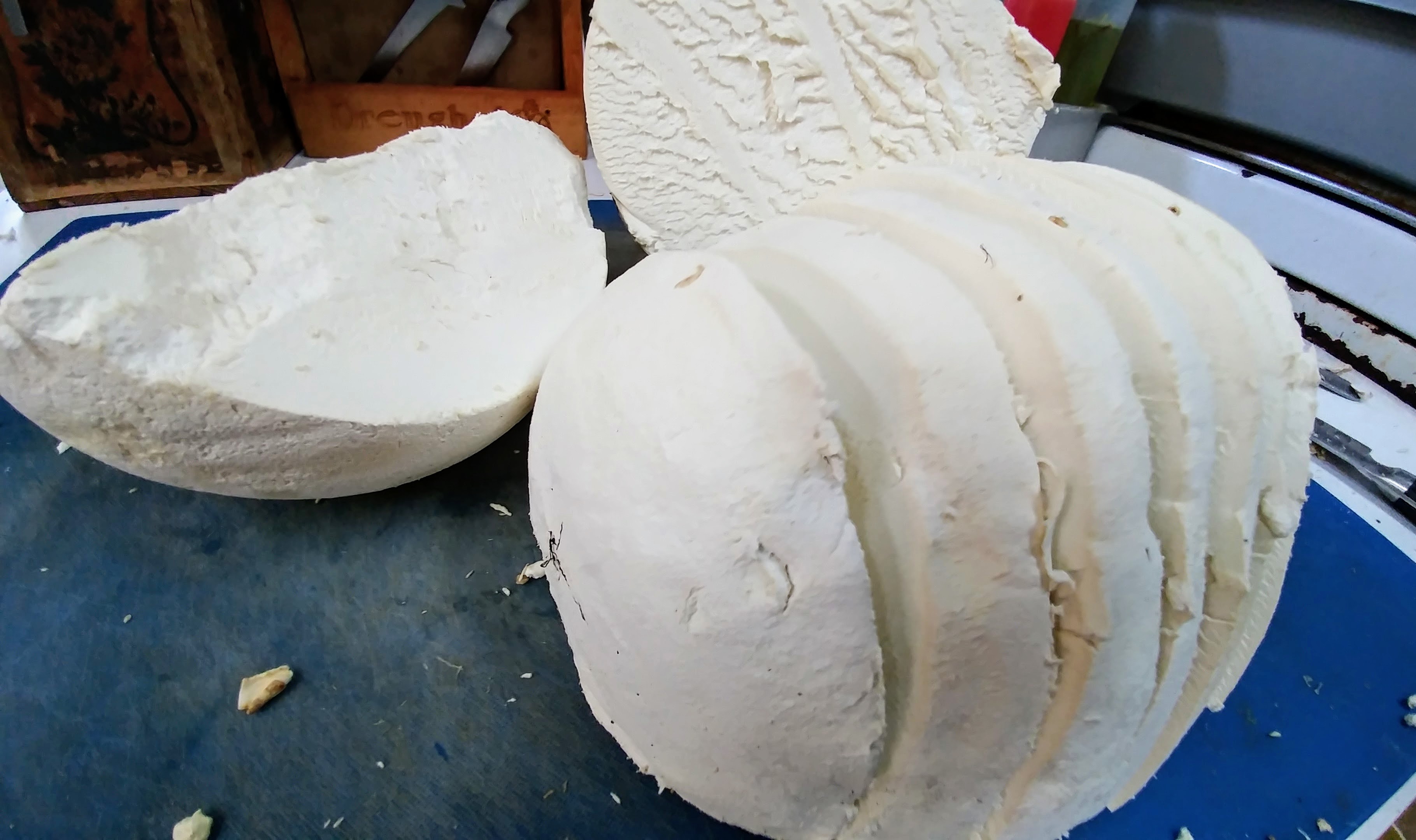
The best way to cook a giant puffball:
Peel and slice. Pan-fry or bake on parchment with a good amount of fat (I start with oil and finish with butter), flipping half way through. You want to gently brown it, on medium heat as opposed to high.
With its sponge-like texture, I find that it cooks up quite like eggplant. Best eaten straight out of the pan, it gets soft and loses volume as it sits, although it will taste good no matter.
It has a strong (ish) mushroom flavour, so I like to layer it with other flavours like tomato, cheese or root vegetables in a lasagne or gratin for example. It makes good soup too. You could dice it up and make spaghetti sauce, the options are endless.
It's not all about the puffball, especially with Matsutake season starting. I'm busy putting up the fall boletes for our dried mixes and butter etc, as well as yellowfoot chanterelles and hedgehogs, hundreds of pounds a week. We are still waiting on the autumn oysters and another half dozen varieties to complete my upcoming annual mushroom fest menu.. http://soupnancy.squarespace.com/wild-mushroom-event-october/
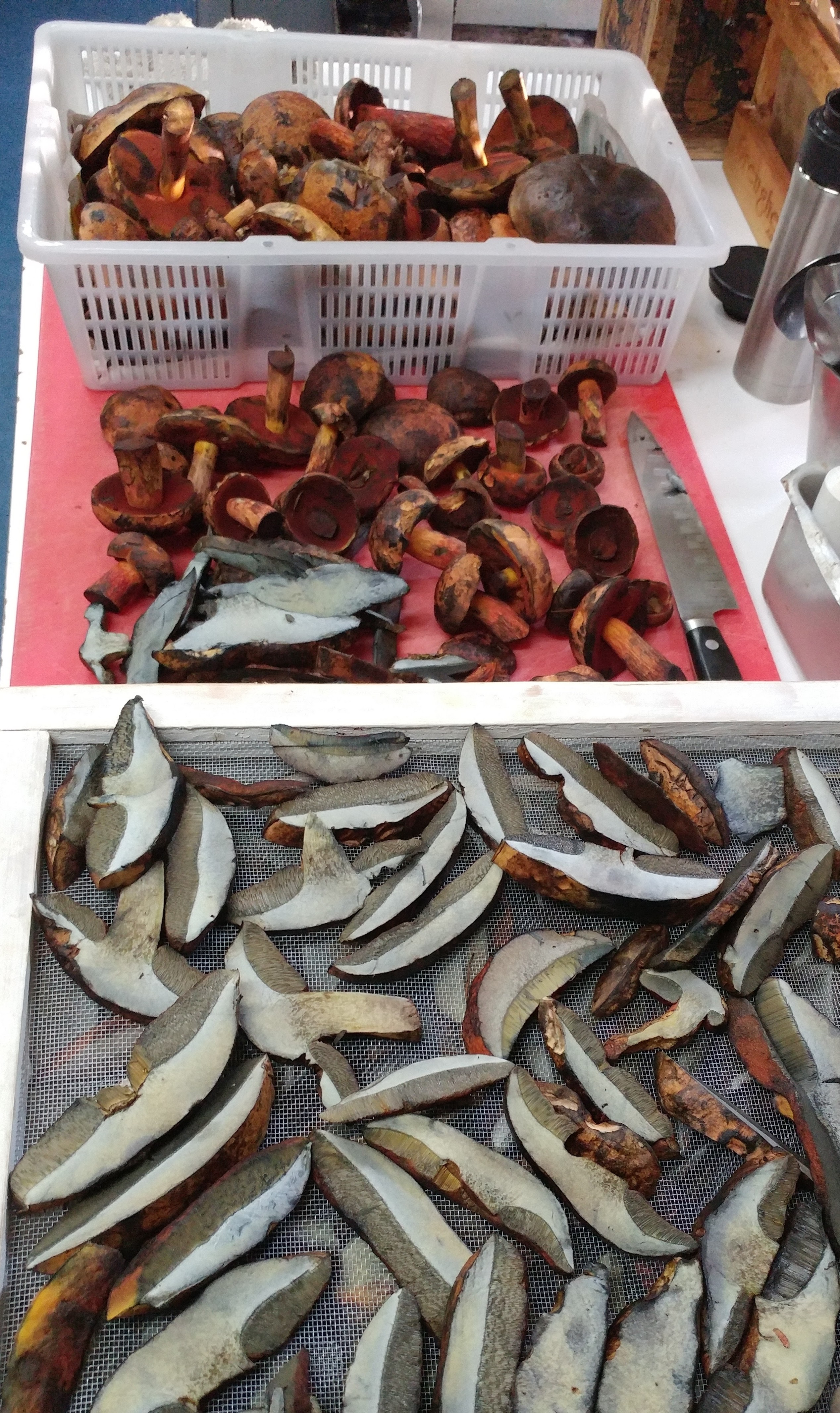
Red Mouthed Bolete, a dessert fave
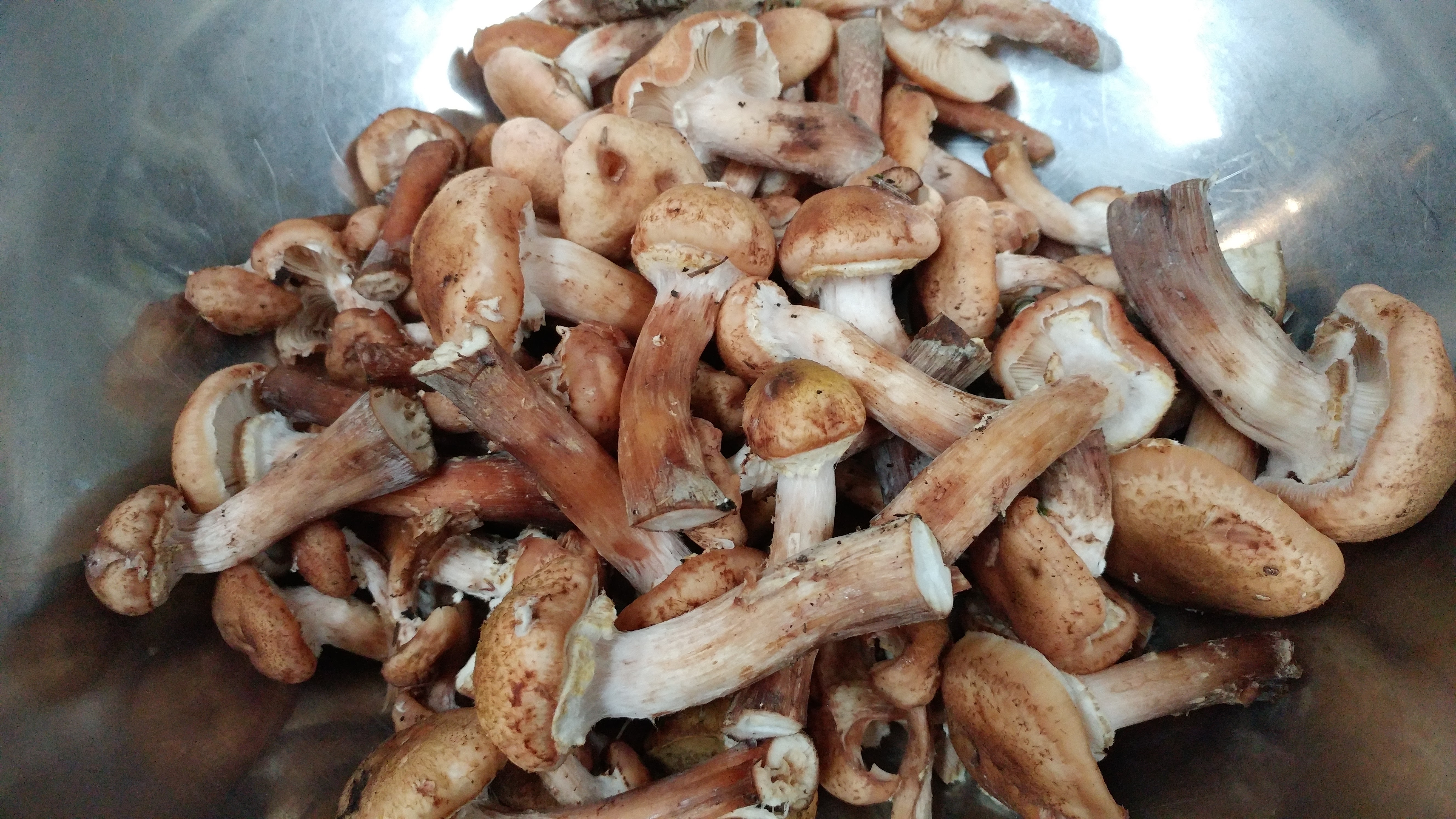 Armillaires Couleur de Miel; Wild Honey Mushroom
Armillaires Couleur de Miel; Wild Honey Mushroom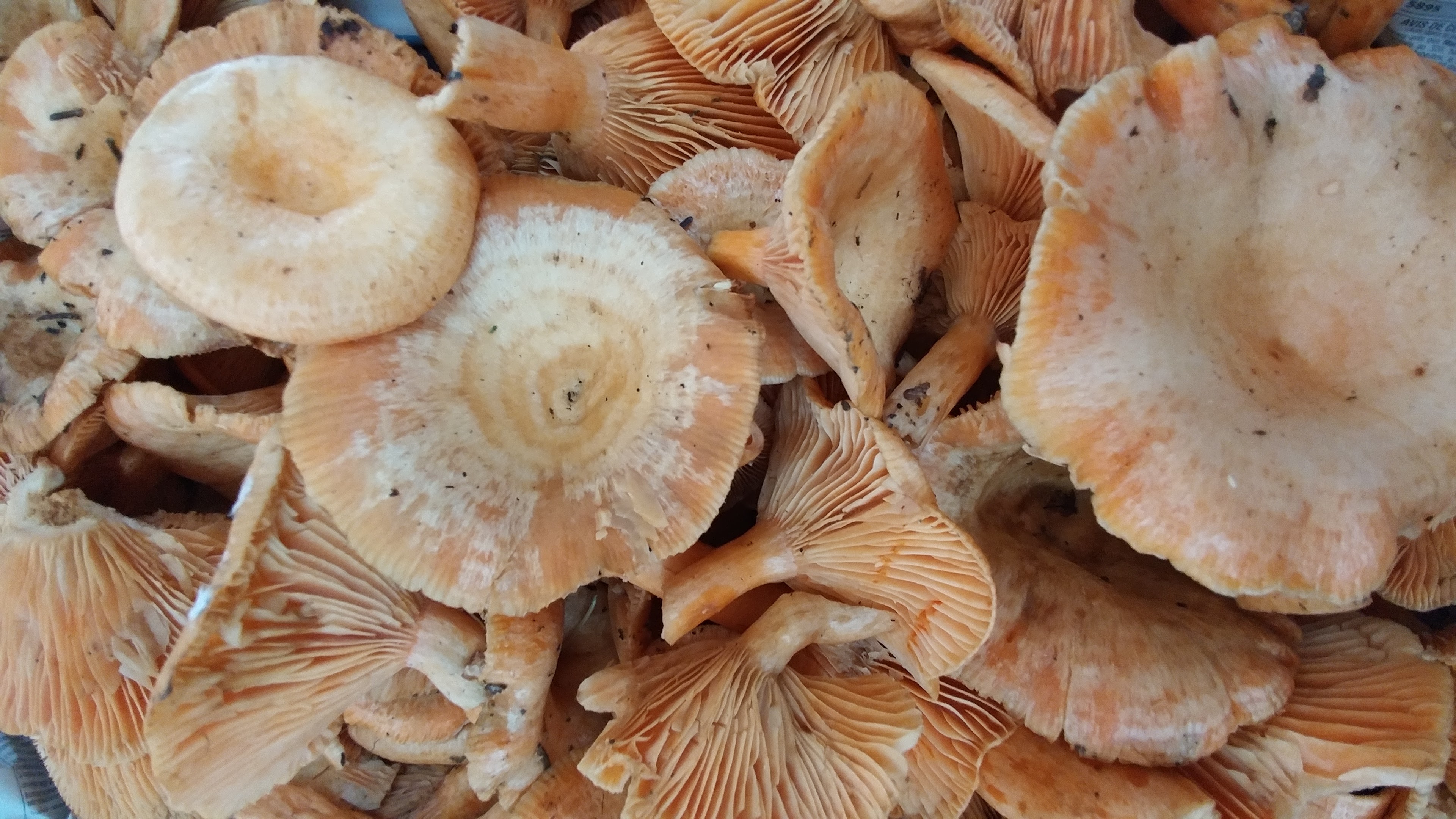 Lactaires Delicieux
Lactaires Delicieux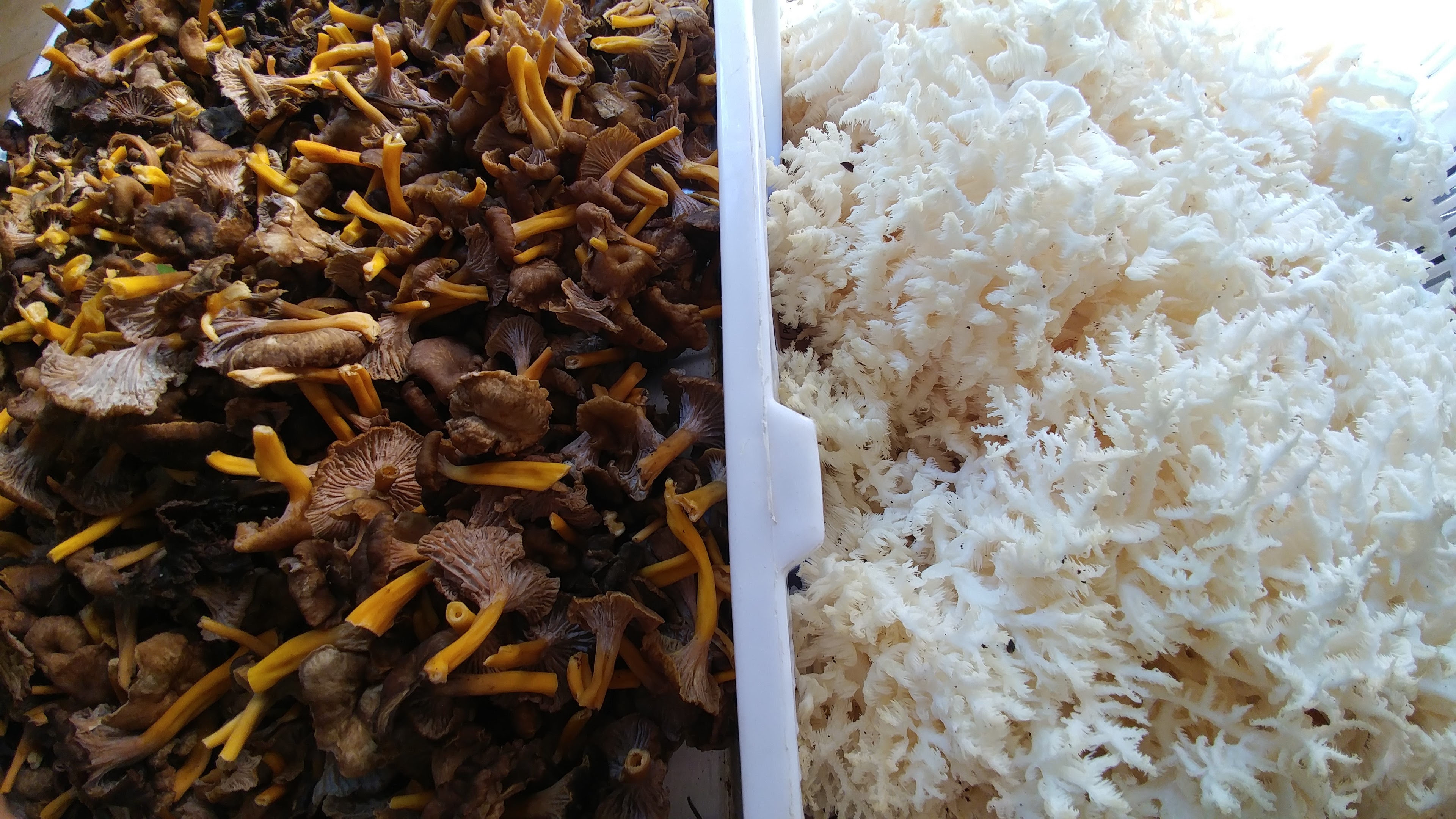 Comb tooth and Yellowfoot Chanterelles
Comb tooth and Yellowfoot Chanterelles
François' tomatoes, and a few summer recipes
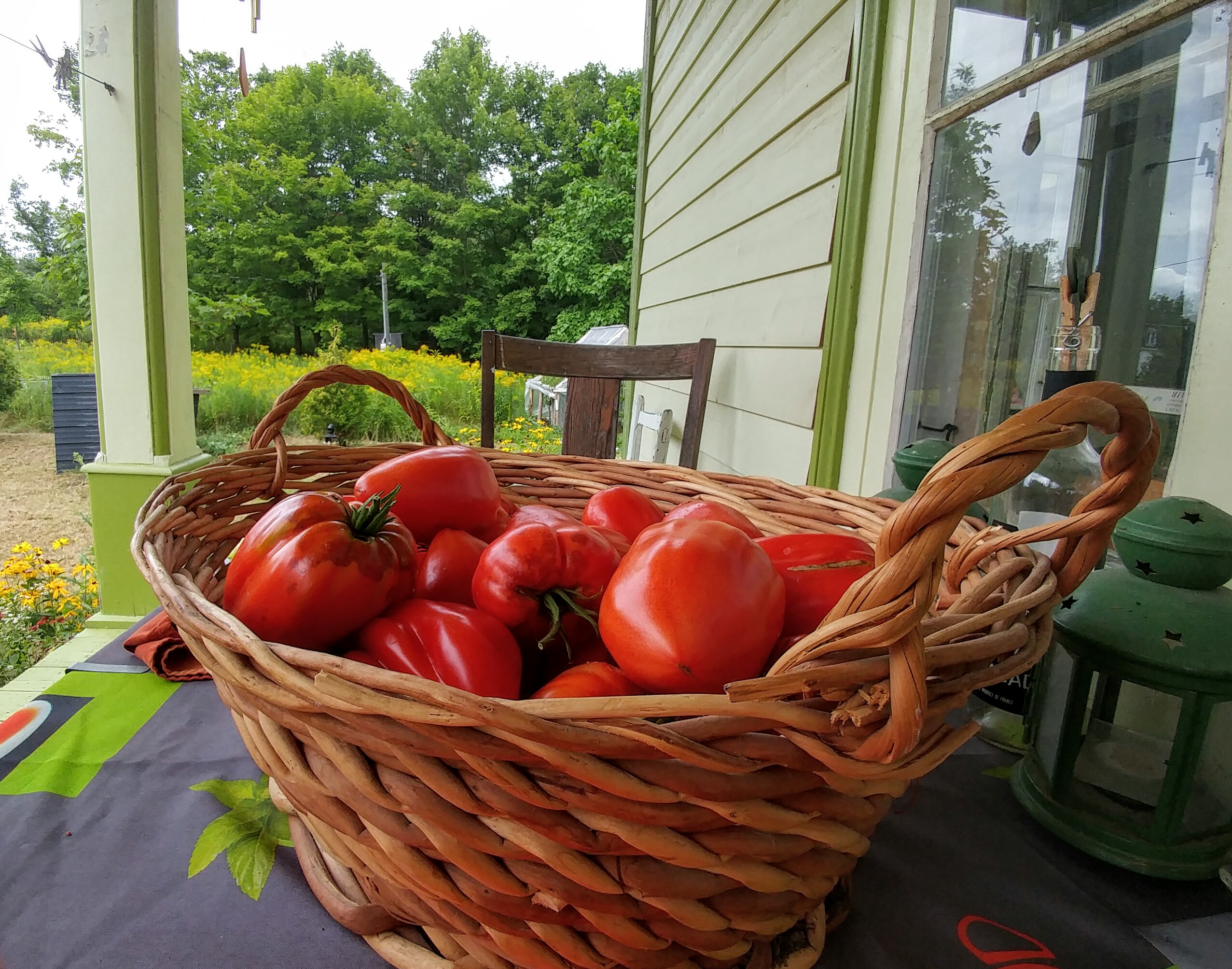 We may as well talk about tomatoes since there isn’t much going on in terms of local mushrooms. What a crappy season so far. I mean we’ve had a few good harvests but we are not meeting the demand at the market, and with a trickle for the restaurant menu, I haven’t started putting up. When you consider that I typically process 2 tons of mushrooms for our year (to supply the restaurant and make our products), I will have to get started soon enough.. Pretty frightening. Fingers crossed.
We may as well talk about tomatoes since there isn’t much going on in terms of local mushrooms. What a crappy season so far. I mean we’ve had a few good harvests but we are not meeting the demand at the market, and with a trickle for the restaurant menu, I haven’t started putting up. When you consider that I typically process 2 tons of mushrooms for our year (to supply the restaurant and make our products), I will have to get started soon enough.. Pretty frightening. Fingers crossed. 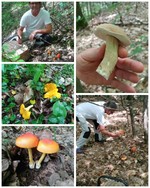
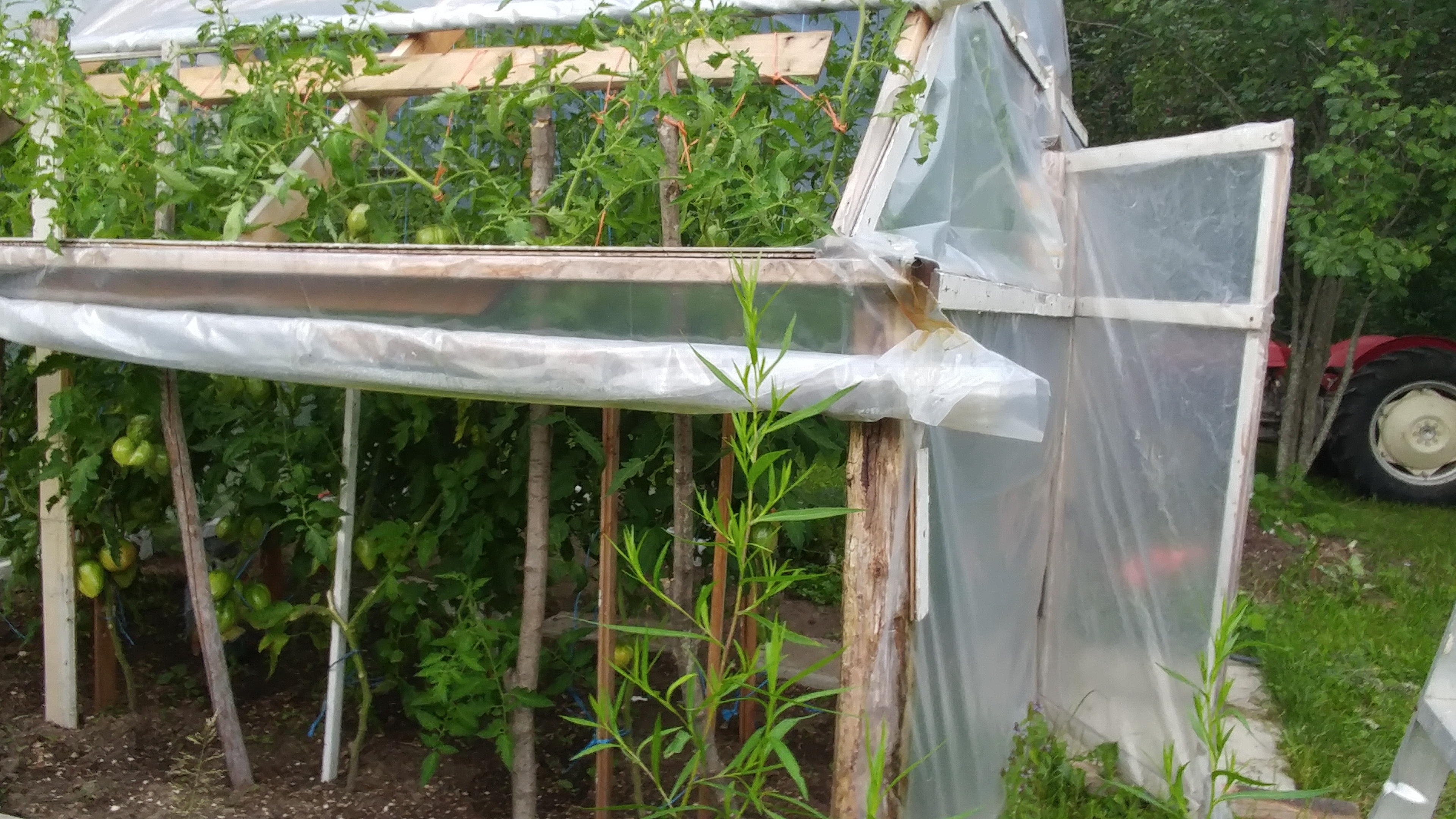
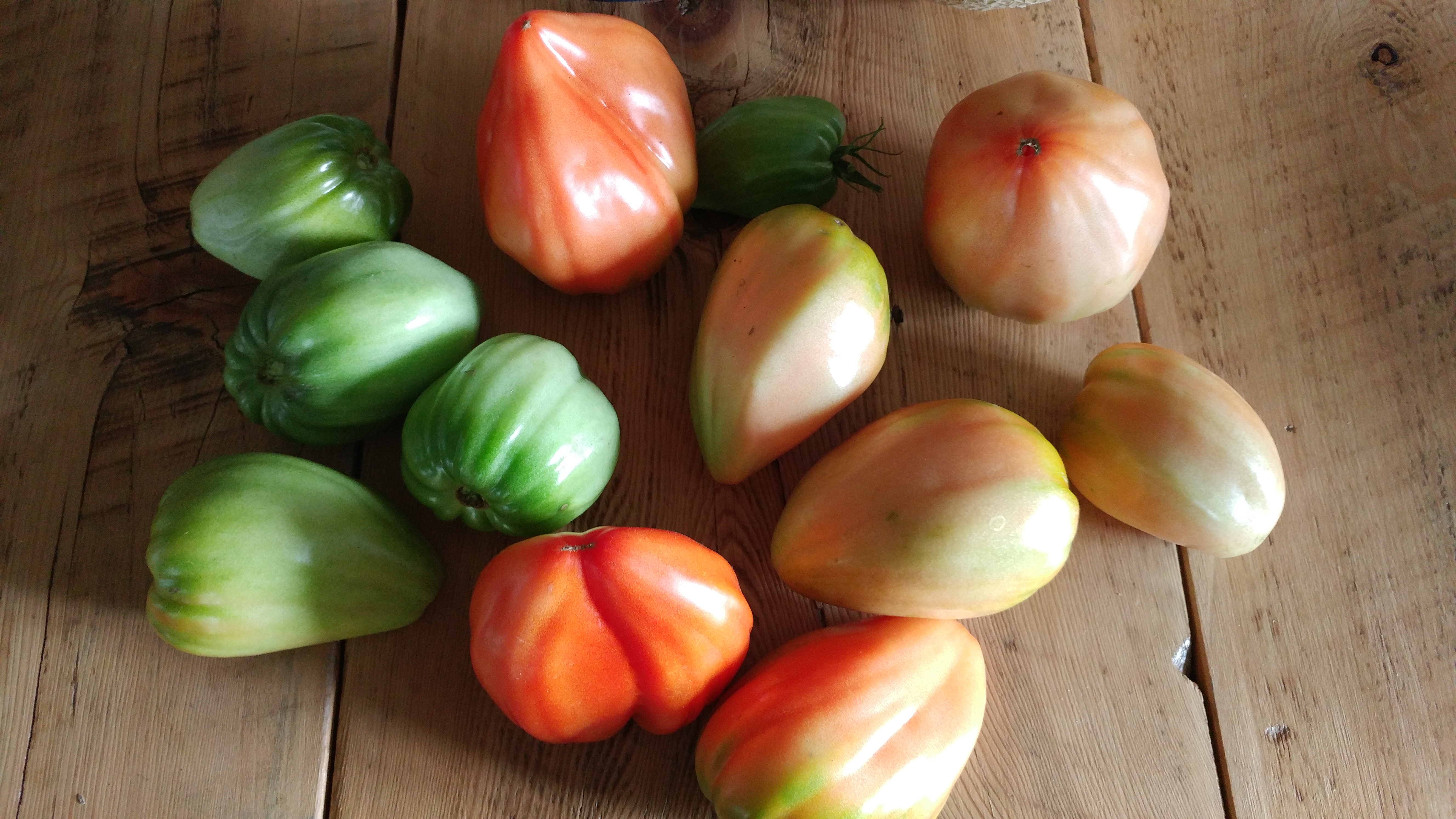
So anyway, back to the tomatoes. Anyone who knows us (or follows me) has heard of François’ famous tomatoes. They are an old heirloom variety whose name eludes us, from seeds passed down generations in Pasquale’s, (one of his Italian mushroom pickers) family. His great grandfather brought them over here like a century ago. François kept the seeds from the tastiest of his specimens and started them this winter, moving them into a greenhouse in the spring, and he lovingly tends to them every day with water and suckering, tying them up (they are 9ft tall!) and etc. He has planted some in the garden too and distributed seeds to other gardeners as well, in hopes to keep the variety alive.

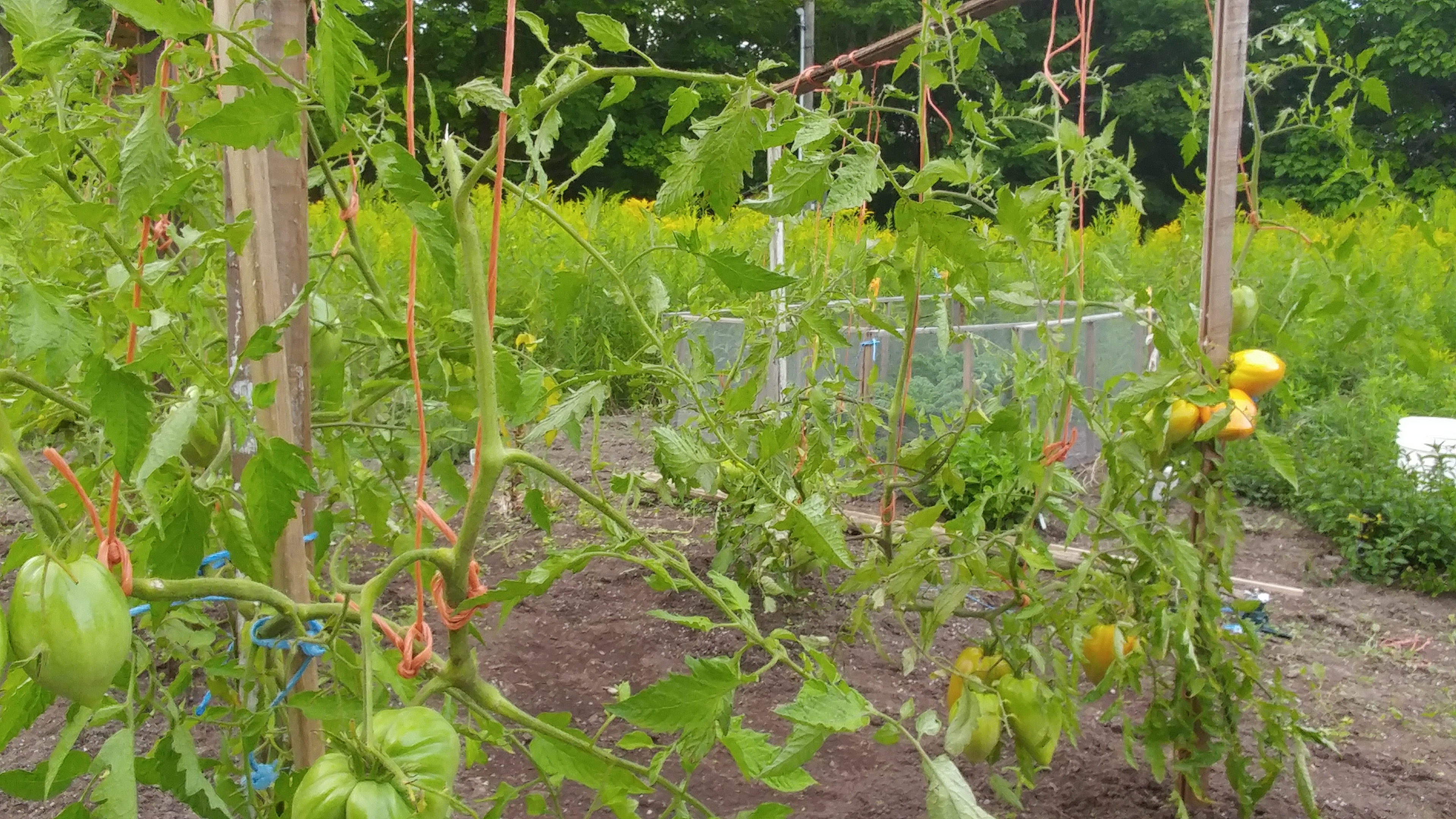
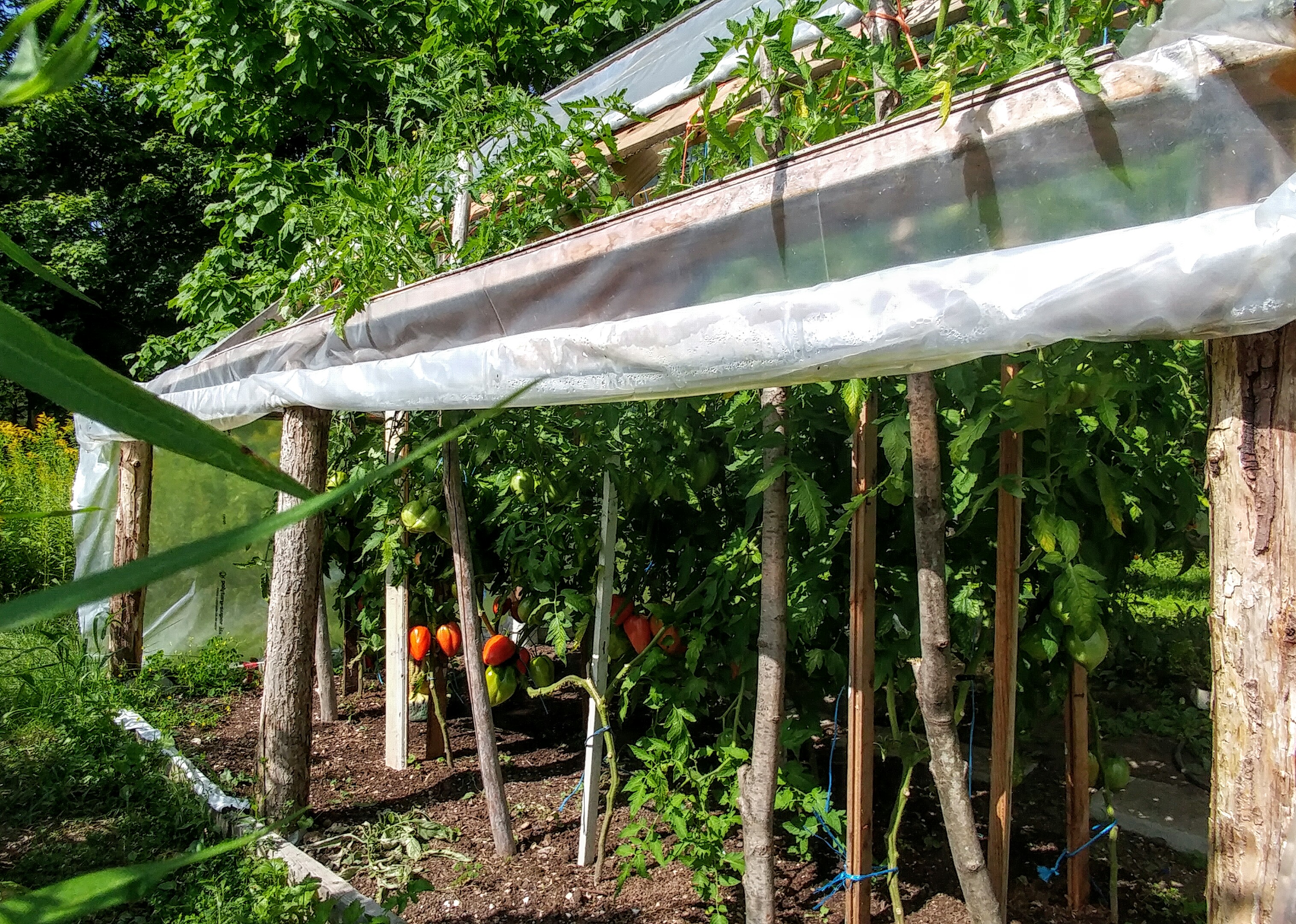 Greenhouse vs field, the taste test is on..
Greenhouse vs field, the taste test is on..
 Proud green thumb
Proud green thumb
I can’t tell you how important his tomatoes are to him, and hence what an exciting time it is in our household now that they are finally becoming ready. He lays them out on the counter in order that they will be eaten and for different uses.. Woe and behold if I take too many to the restaurant or if I chop up the one that was meant for a sandwich, or yikes, slice it ‘the wrong’ way - Watch out for the St-Roch tomato police!
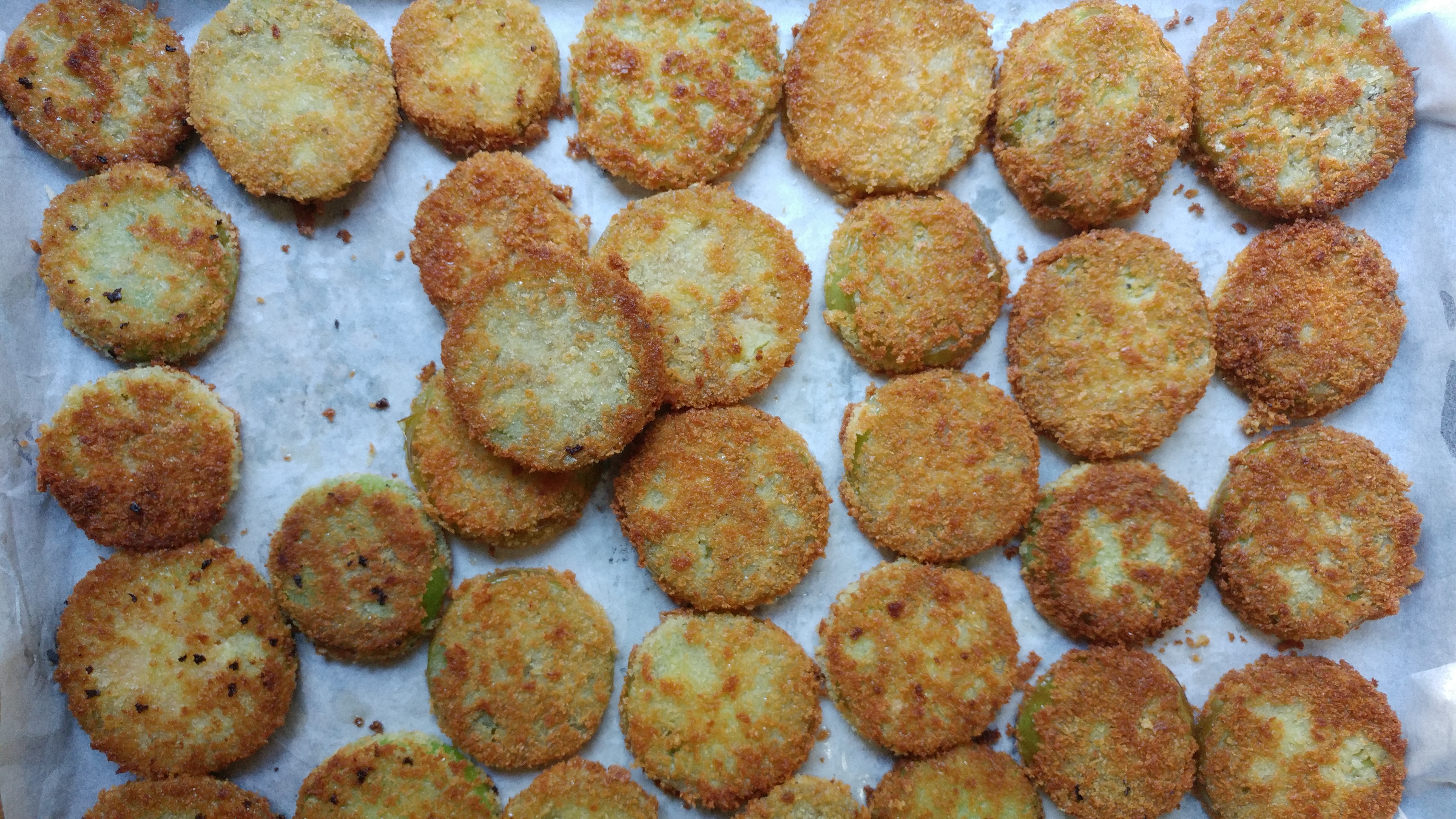
The first dish was of course Fried Green Tomatoes, which has become an annual ritual since we started making them (http://soupnancy.squarespace.com/blog-journalessays/2009/10/7/fried-green-tomatoes-finally.html), François just adores them. And besides, what else are you going to do with green tomatoes. Now that they are ripening, we are eating them in salads and salsa, with pasta and fish. They are meaty, not many seeds buy juicy, sweet and tomatoey, with a bit of tart. I like some acidity but François expects them to be succulent sweet and is banking on the garden ones.
He apparently has tomato tarts and pizza on the agenda, as he has ordered his dough (from me)..
At the restaurant – 1st entree of the moment: Fried green tomato with ripe and smoked tomato, corn, cucumber salsa, sea spinach and sea asparagus, crinkleroot lovage yogurt dressing, smoked eel, bee balm 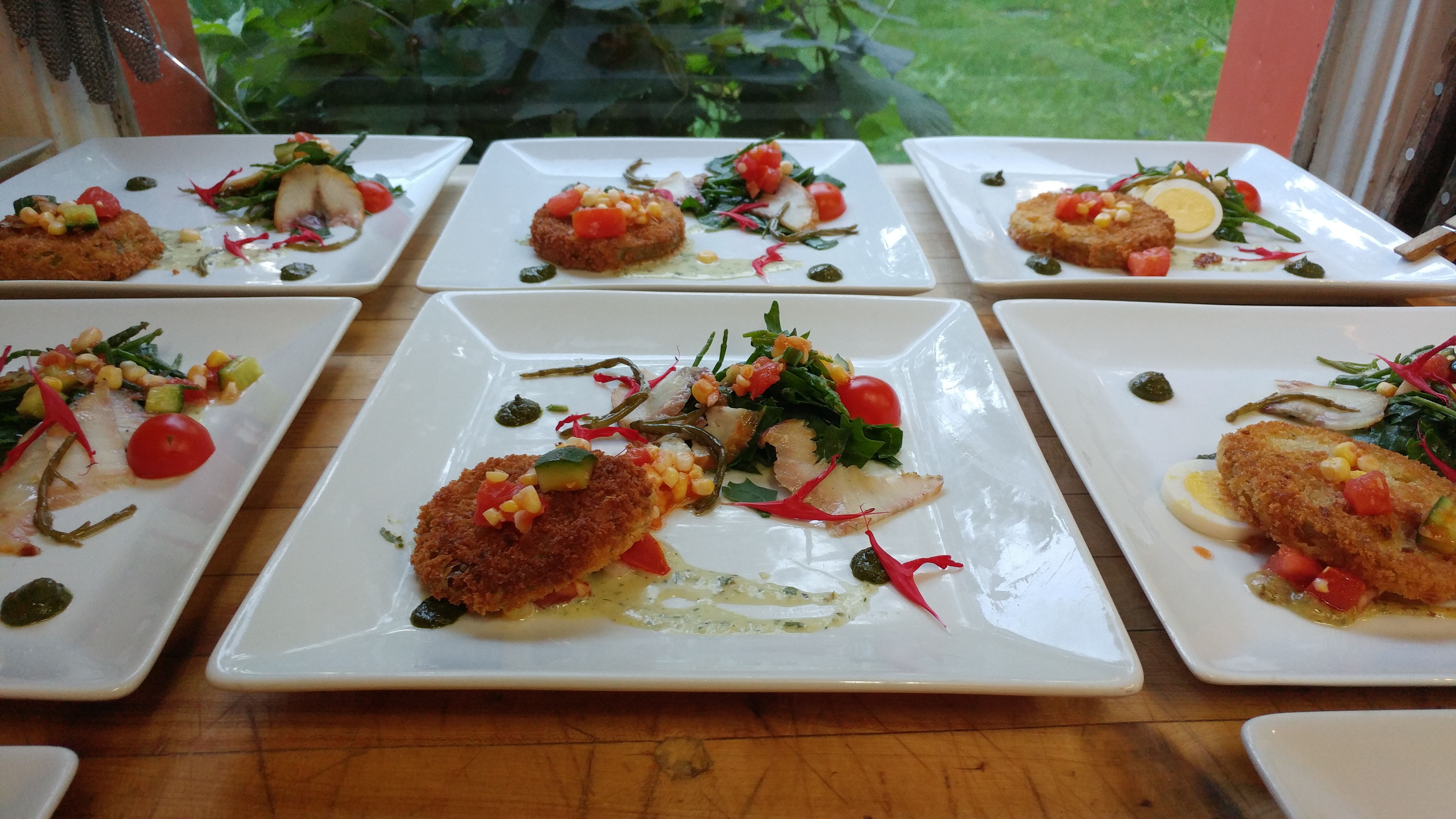
As the harvest really explodes later this summer/fall, I will be canning, smoking, making ratatouille and ketchup, etc..
But it’s not all about tomatoes or even the wild edibles, with the corn and beans, peas, favas, zuchinni and peppers, garlic, kohlrabi.. Lettuces, herbs, Plums, melons and peaches.. Not to mention the wild blueberries! And it will only get better in the month ahead, alongside the mushrooms. September is the best month of the year for food!
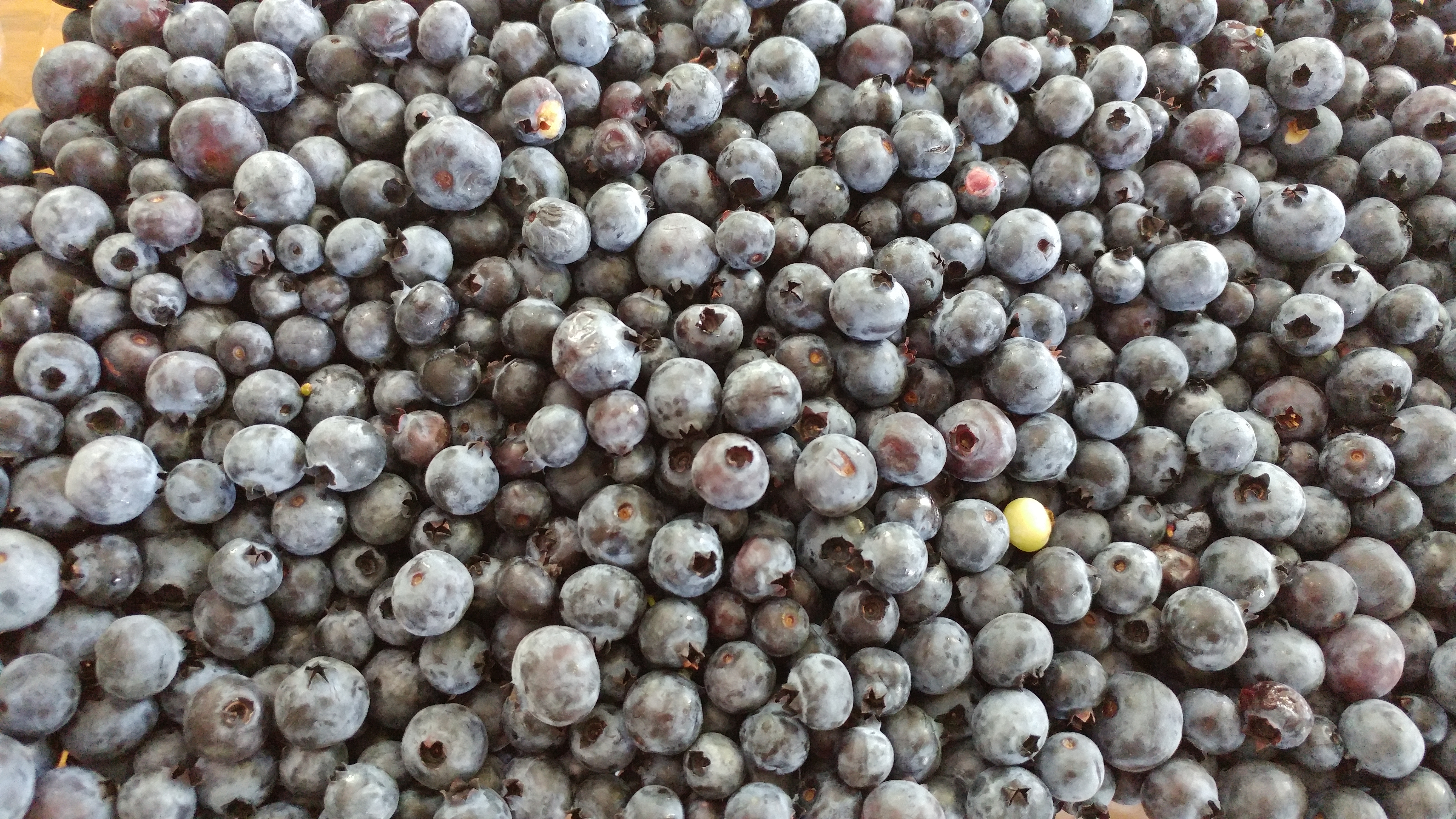
Some other summer hits:
A vegetable stew thickened with bread: ribolita - panzanella meets ratatouille, just a different delicious way to use the garden bounty or what’s hanging out in your fridge. Stew onions with celery/leek, peppers, add zucchini and whatever other veg you like (corn, beans..) Herbs and spices, A bit of white wine and stock or just tomatoes with their juice. At the end, throw in some croutons or dry bread, season and serve on salad with a good oil, aged vinegar and cheese shavings. Good as is or as an accompaniment to sausage, chicken or steak. At the restaurant, I was serving it with confit rabbit. 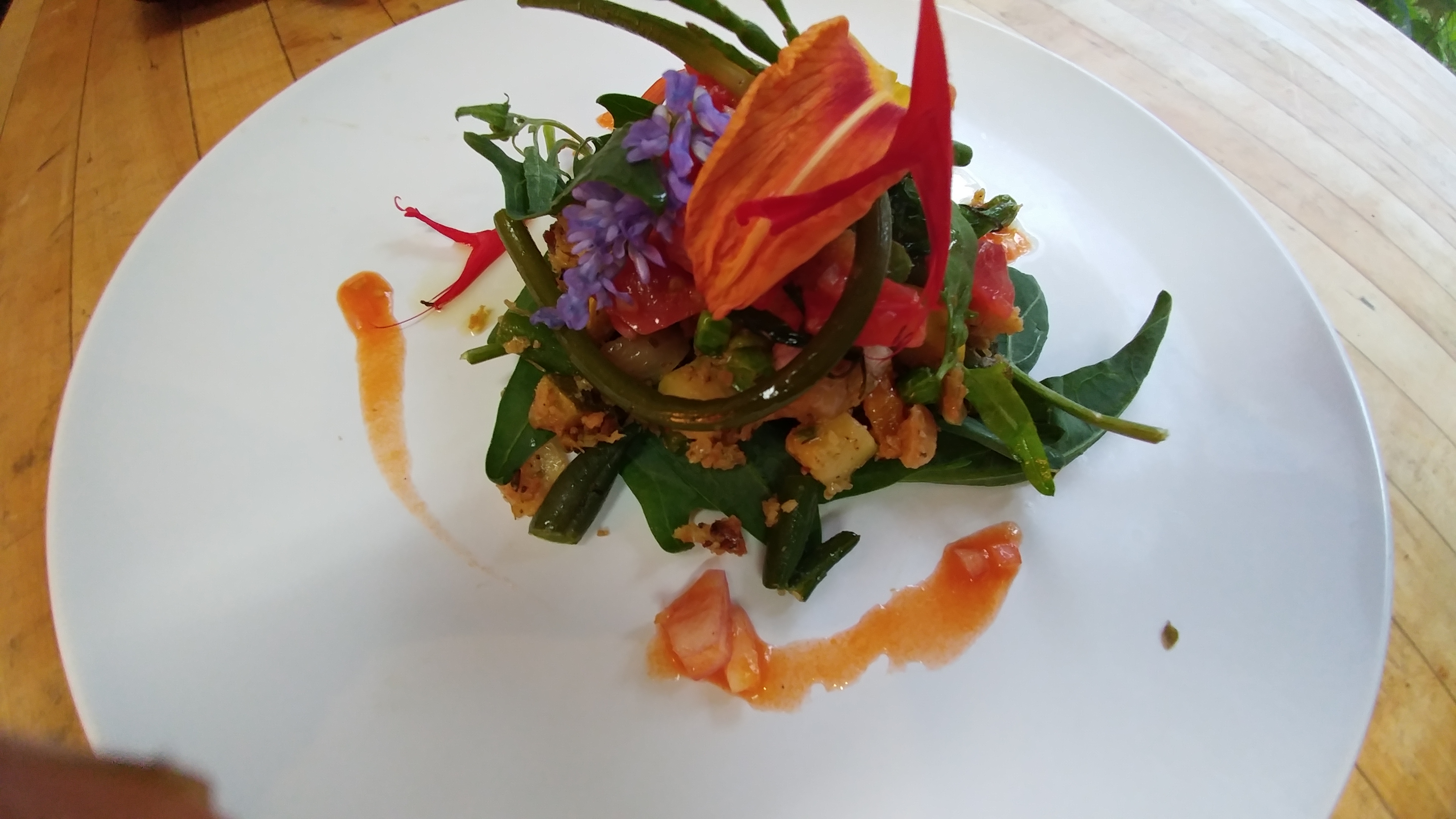
Fleur d’ail (Scapes) as a vegetable and as a condiment
In July when it’s scape time, we put them up for the year, alongside the wild stuff, a raw, green garlicky pesto. But it’s a beautiful time and a 2-3 week window (one for picking one, 2-3 for storing), when you can eat the scape as a vegetable, like an asparagus or green bean. It takes a 5 min. Boil. It is tender when it loses its bright green, sorry. Mildly garlicky, delish. Here the raw pesto is tempered into the hot potato mash, and the cooked scapes are a garnish. Alongside chanterelles which are in season at the same time. Just missing the corn, which would be perfect now. 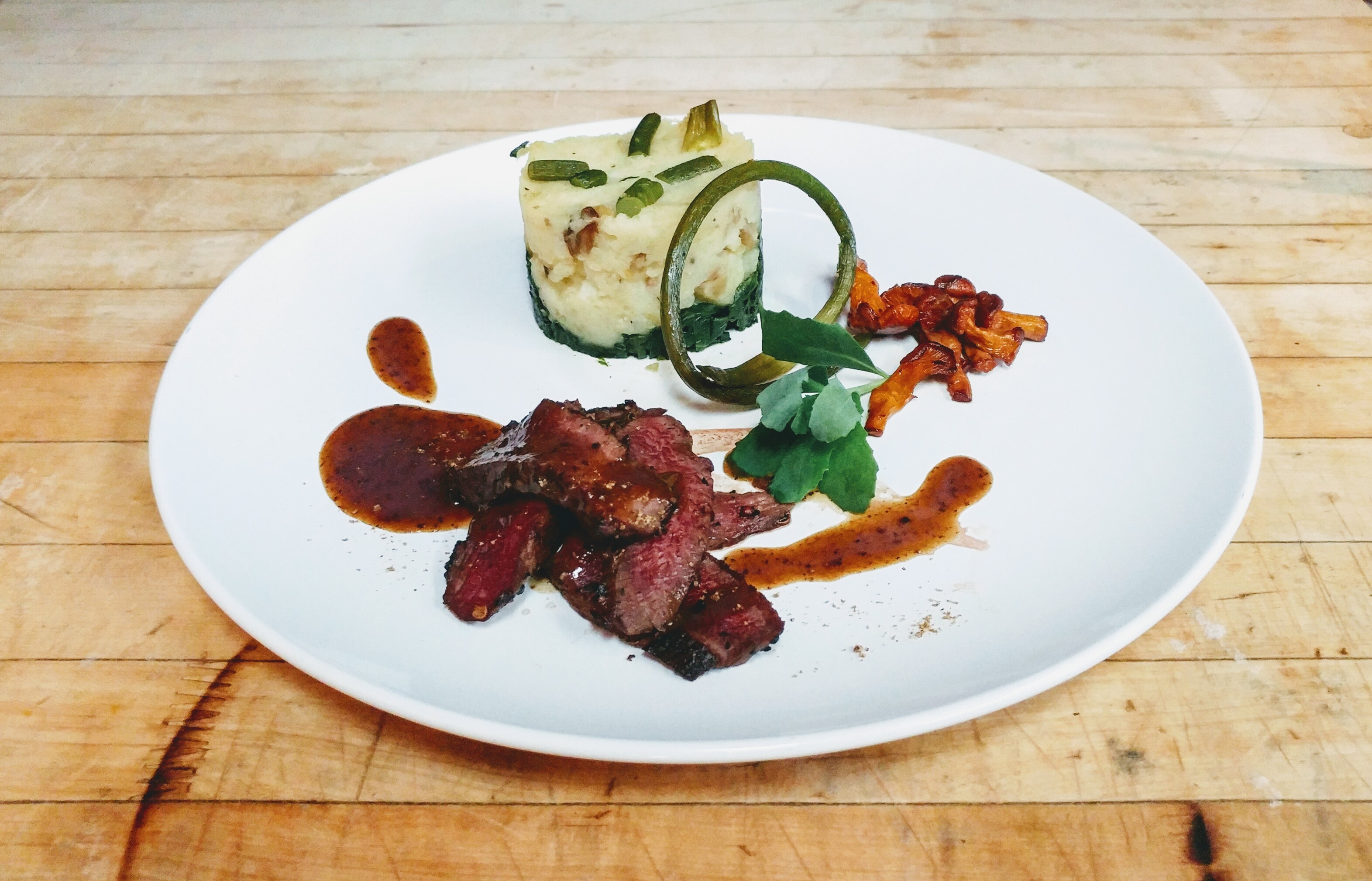
Vichyssoise (Stinging nettle)
Like a Parmentier or any puree/ green soup thickened with potato (so less cream). With stinging nettle and sea parsley, this soup is delicious, but it could be/is with many greens. I make a seasonal green soup with what is abundant, always good. Not only delicious, but nutritious. Served cold on a hot day or hot the rest of the time. Just a basic soup with onion, leek, celery, a touch of wine or vinegar, stock, herbs and spices, potato. Add wild greens. Finish with cream, milk. Tweak with salt, pepper, spice, acid, maple syrup.
Add a little garnish like this: cucumber, radish, lovage, sumac to lighten it up, or it could always be another to make it more hearty like bacon or smoked duck.
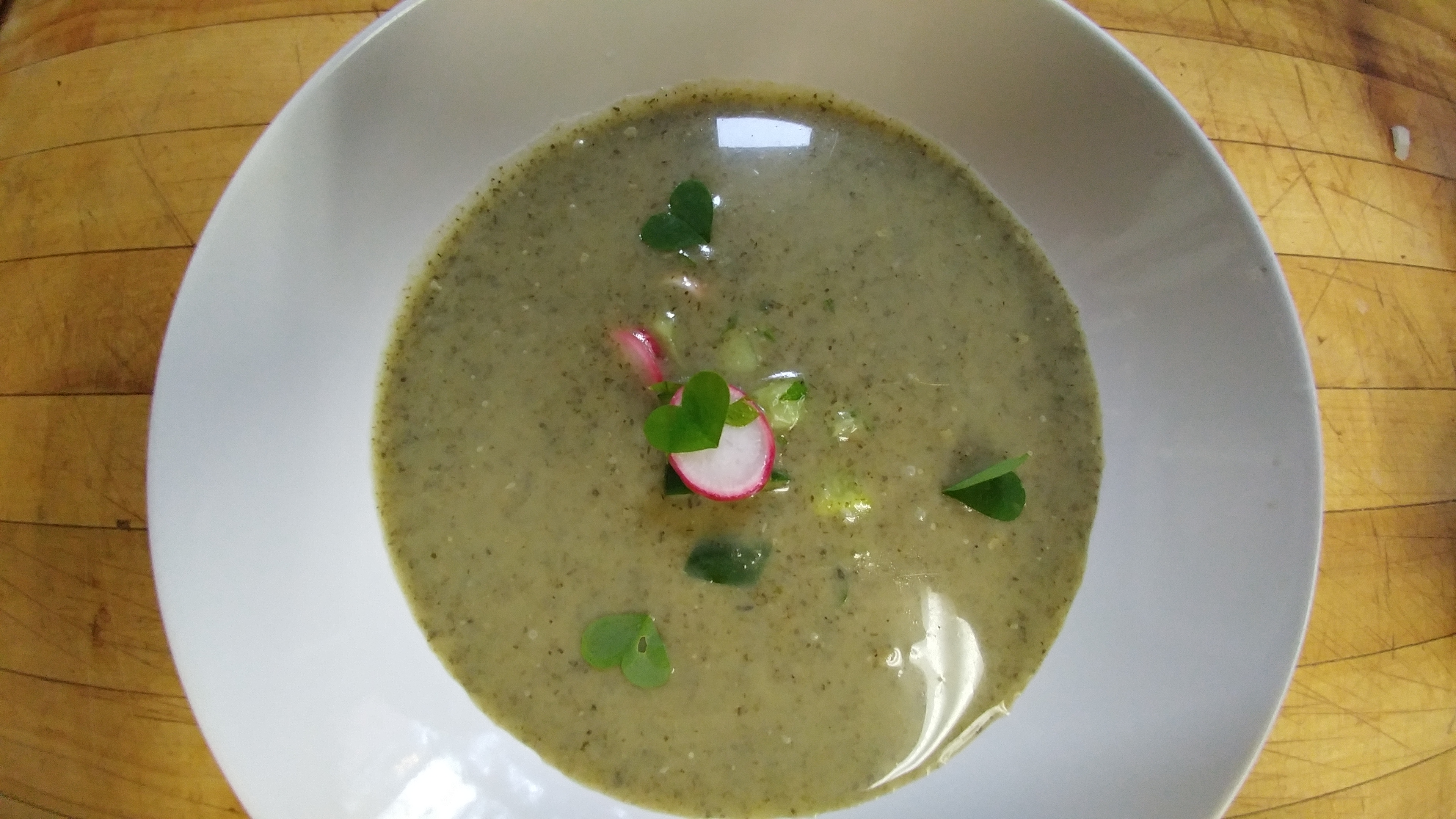
Mushrooms or not, it’s time to be hitting the market (and/or garden) and cooking up a storm!
 Lobster mushroom and lobster bisque risotto with beach peas, sea spinach and sea scallop
Lobster mushroom and lobster bisque risotto with beach peas, sea spinach and sea scallop 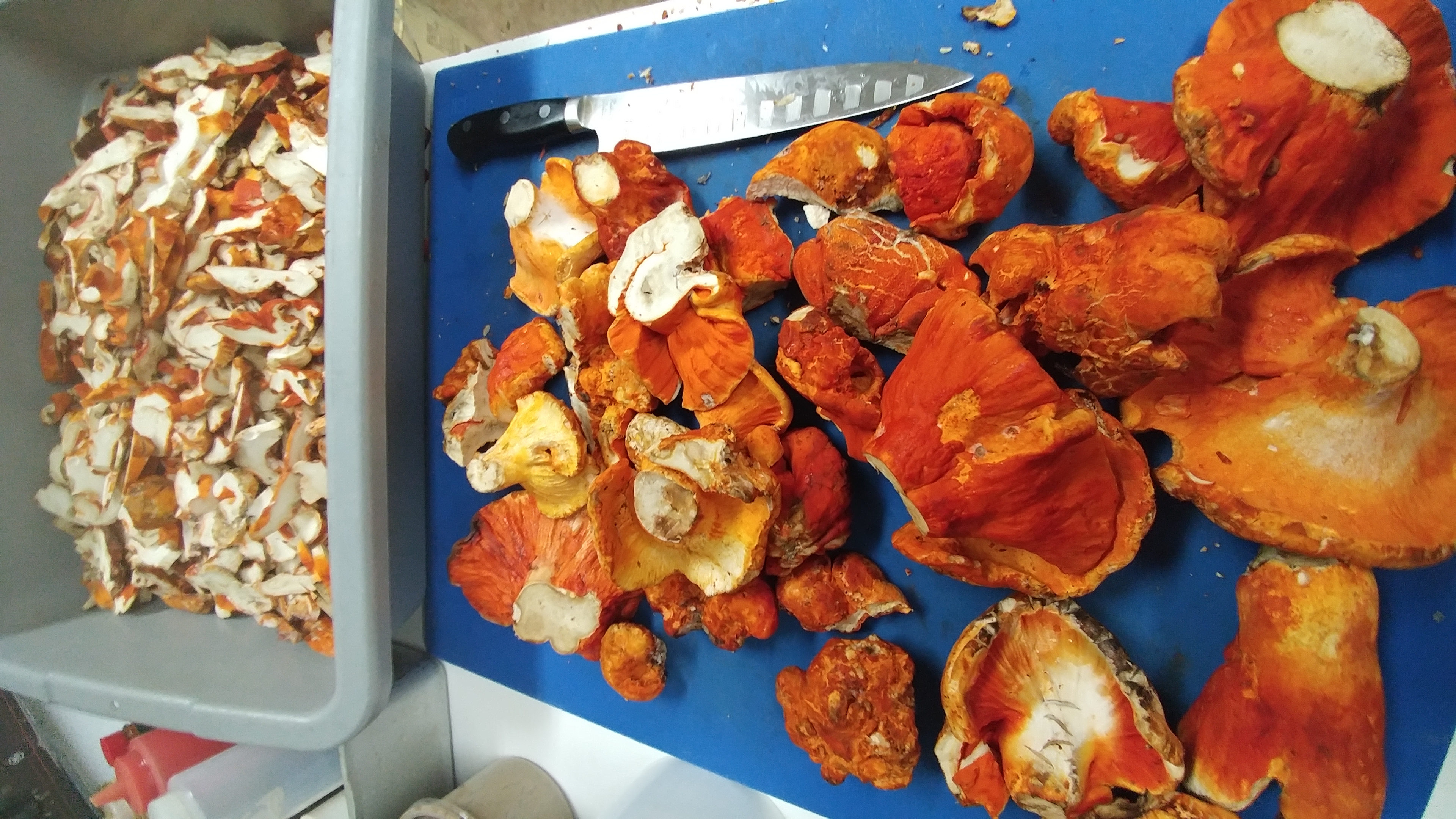 First significant harvest of Lobsters to put up
First significant harvest of Lobsters to put up
My guilty foreign flour affair '00'
My guilty foreign flour love affair
If you love pizza as much as I do, and like to make it at home, read on..
Maybe I’m late to the game on this, but I’m in love with Italian yellow flour ‘00’!
If you like to play with dough, you NEED to try it out. It is just so fun to work with. And it tastes great. I just love the texture it lends to the dough too. Although it looks like finely ground cornmeal, it is indeed wheat flour but milled differently, very fine supposedly, I guess by Italian standards because it is coarser than ours.
Being a girl that promotes local food pretty religiously and for some time now, naturally I buy all my flour from the mill next door (Le Moulin Bleu, St-Roch de l’Achigan).
My guilty affair with this imported flour started with my first No.900 pizza a couple of years back in Quebec City. It was simply the best pizza! Even my fussy François agreed. Dressed only with good tomatoes, cheese and salami and dripping with olive oil, it was the thin, blistered but soft-chewy crust that made it extra-special. Maybe this would be an occasion to use the silly word ‘toothsome’.
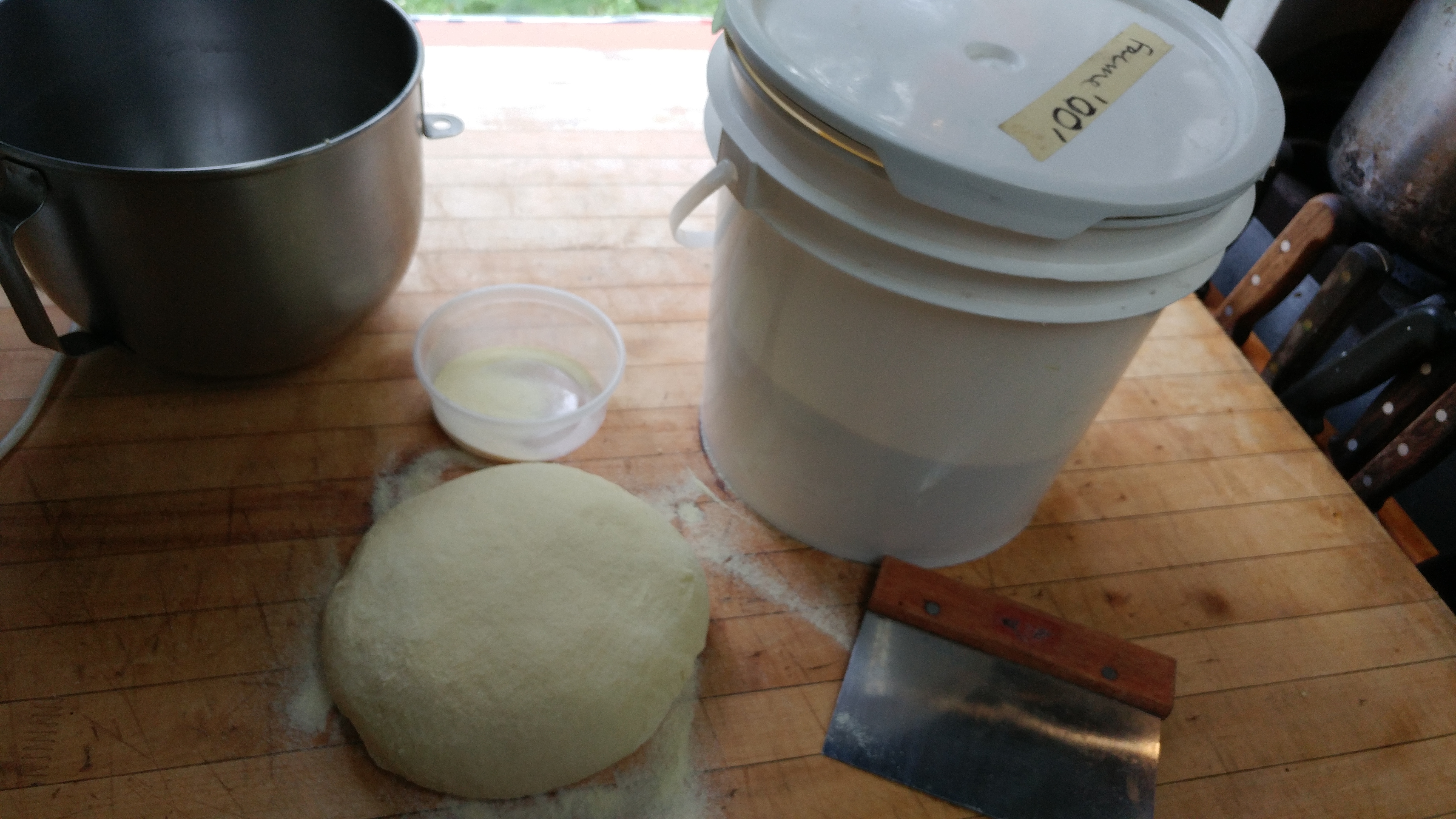
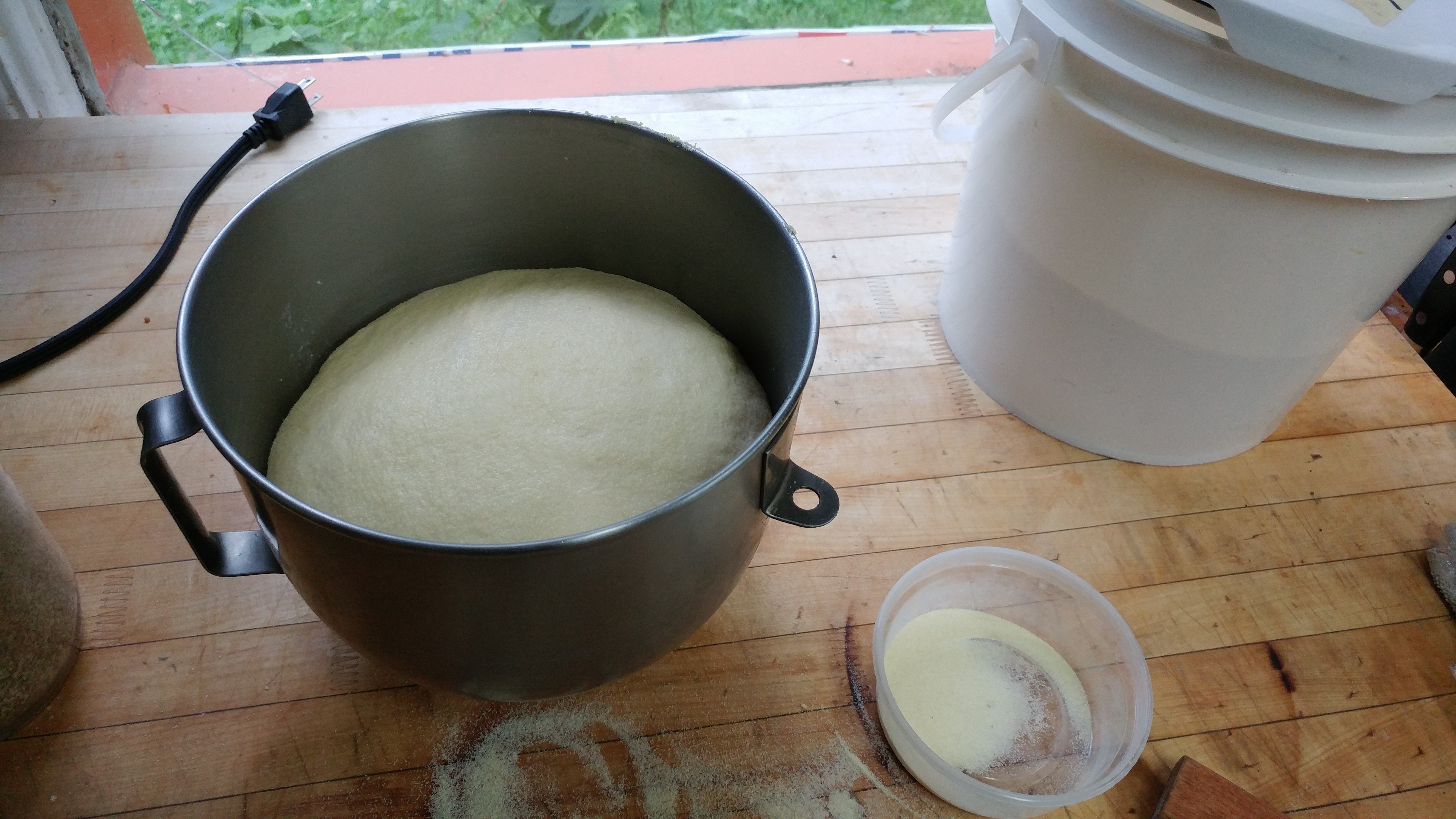
Since my first year of professional cooking 24 years ago and early job in an Italian restaurant (Picolo Diavolo in the village), I have been making pizza. And I have the burn marks to show it on my arms. I don’t make it at Jardins Sauvages except for fireside friend parties, the occasional catering event as finger food, but yes, regularly for us at home, for me. It is never a meal, but the perfect snack, say late night or during a kitchen shift. I always have dough in the freezer, if not a ready-made pie. François likes it white, which is good especially loaded with wild garlic and crinkleroot and some wild greens (so green). I prefer it red with my put up tomatoes, cheese of course and something salty like a cured meat or olives, definitely some spice and occasionally maybe even something sweet like a pickled pepper or ratatouille. But only as a garnish, absolutely not too much topping. But I have a hard time not putting too much on the pizza, like on my plate.
Anyway, the important thing is the crust. The dough at that first spot I worked was a thin crust baked in a wood oven, back when that was a new thing on the scene here; it was rich in that it had milk, eggs, a bit of sugar and all purpose flour, more crisp than chewy. I’ve come back to it several times over the years, after experimenting, but most often doing a simple basic 3hr affair with 65- 70% hydration, just salt, yeast and a touch of olive oil. But now, all while working on the chew, I do like to add one egg for the crisp/taste factor, otherwise a basic dough.
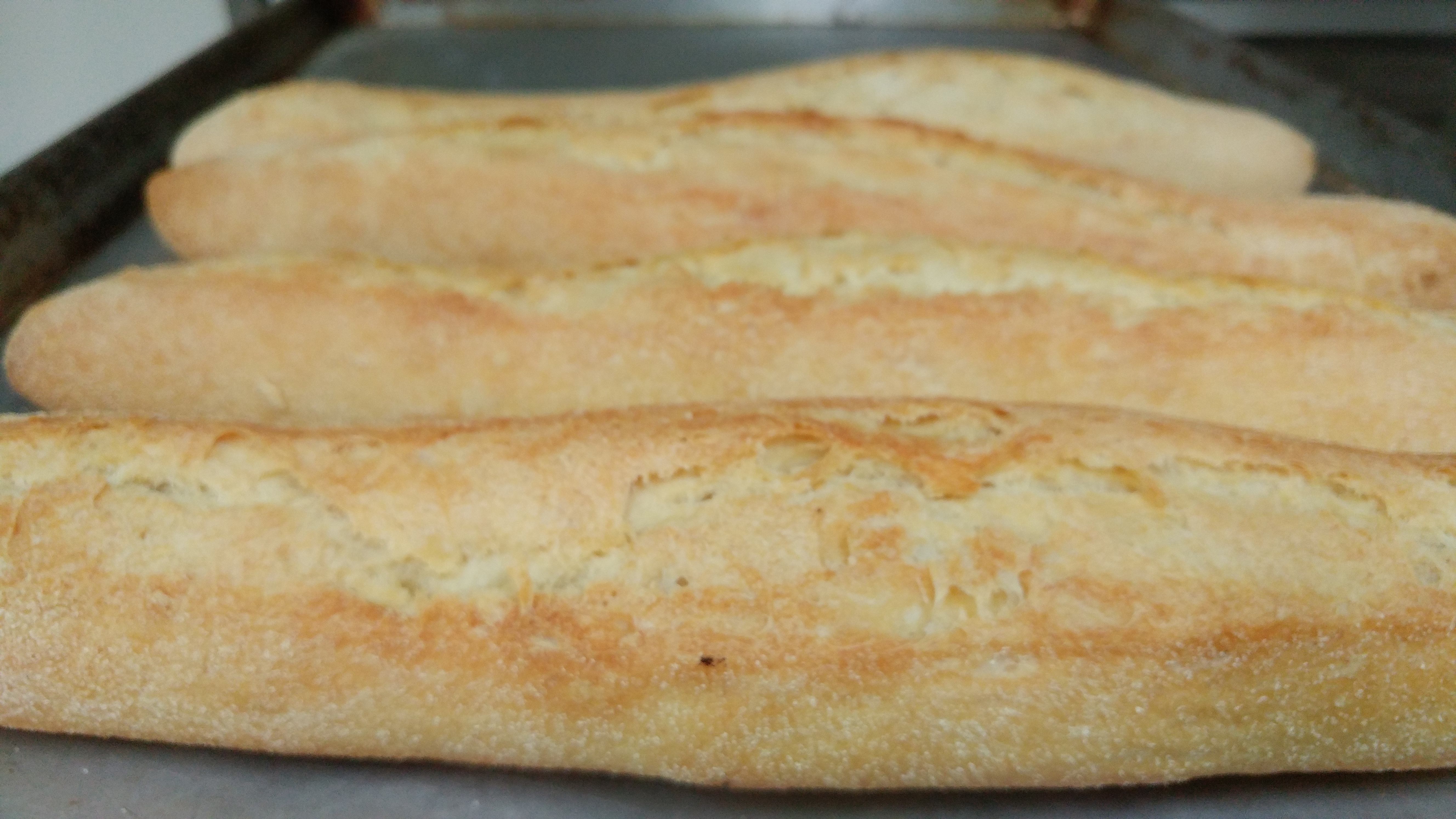
Of course, I went through the no-knead trend but although it’s a neat trick, you have to start the day before and it doesn’t really produce the best results. Especially with bread dough, I have ditched the no-knead laziness however often it saved my ass in the past (the Instadough recipe I learned at the Cordon Bleu was a go-to when busy).. No longer with Leonard (my beloved levain who passed a while ago), I now have a younger less complex starter that sometimes requires work in the days before, but I prefer to make the final dough same day and yes, knead. I make pretty good bread given my set-up, and I enjoy it. If I was in the city and had a fantastic bakery around the corner, I would probably outsource but here, it happily makes sense that I bake my own bread.
All that said, I have never been super ecstatic with my pizza dough, often settling, always fiddling. It’s also in my nature. I can’t just follow a recipe, always working on the ultimate one that I forget to write down. In any case, I know I don’t have the proper oven, can’t attain those ideal ultra-hot temperatures. And yes, I tried a baking stone, rocks from the river and etc. At one point (this must have been early in our relationship), François spoke of building me an old fashioned bread oven; he has the plans and the stones. But we both know that’s ridiculously inefficient in terms of the wood we would need to burn for our small, sporadic operation and a family of 2; ideally that sort of thing would be for a community of bakers or a full-time bakery/pizza place.
Besides the fancy 900 degree oven I will never have, I figured I might come closer to that crust I dream about by trying the famous yellow flour used at No.900 and by many Italian pizza aficionados..
And yes, it is pretty amazing! Mind you, you can’t follow a regular recipe for it, but I just played within my ratios and added the flour needed. It’s incredible how elastic it gets. 1 cup of 00 weighs 200g compared to around 150g for most all-purpose or bread flours. But it absorbs less water, so you need more flour than you think. But if you’re working in cups, you end up not being too far off I realized.. Since I usually work with weights in bread, I stopped following any recipe, followed the feel and the fermentation. With the extra flour in weight, I saw I had to up the salt. I haven’t found that you need more yeast, but maybe a pinch. It depends again on if you’re using a starter or what your timeline is. If you have a starter or want to take it slow, you will add less yeast, say. Don’t be too harsh, punching down your dough and such, it’s good to be gentle. I am often tempted to roll out but stretching by hand apparently gives a better crust.
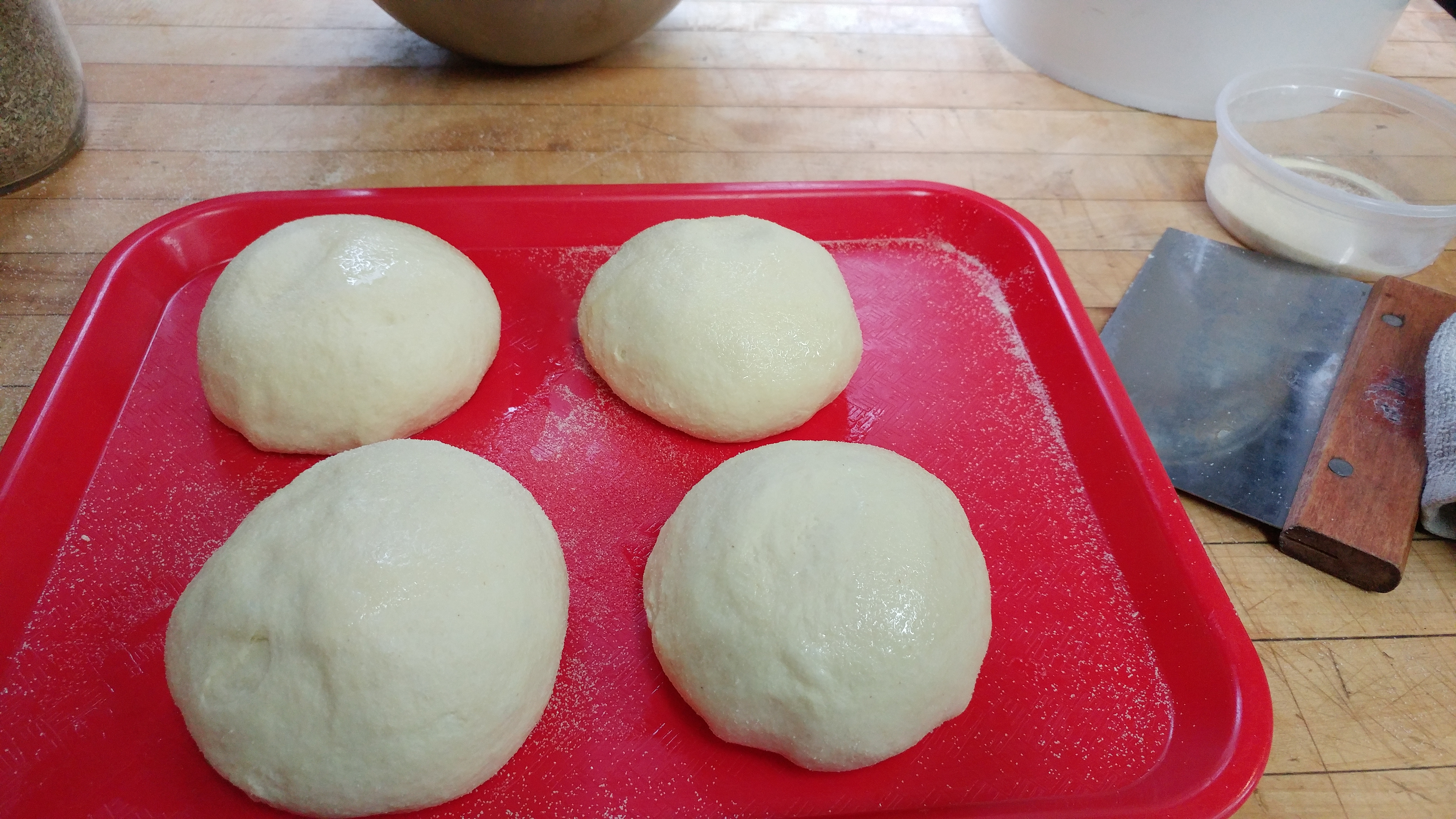 Dough balls for the freezer. Takes no time to thaw for same day pizza if not overnight.
Dough balls for the freezer. Takes no time to thaw for same day pizza if not overnight.
It’s still not perfect, but steps and bounds ahead, for a home kitchen. You can see my recipe template below and others too.
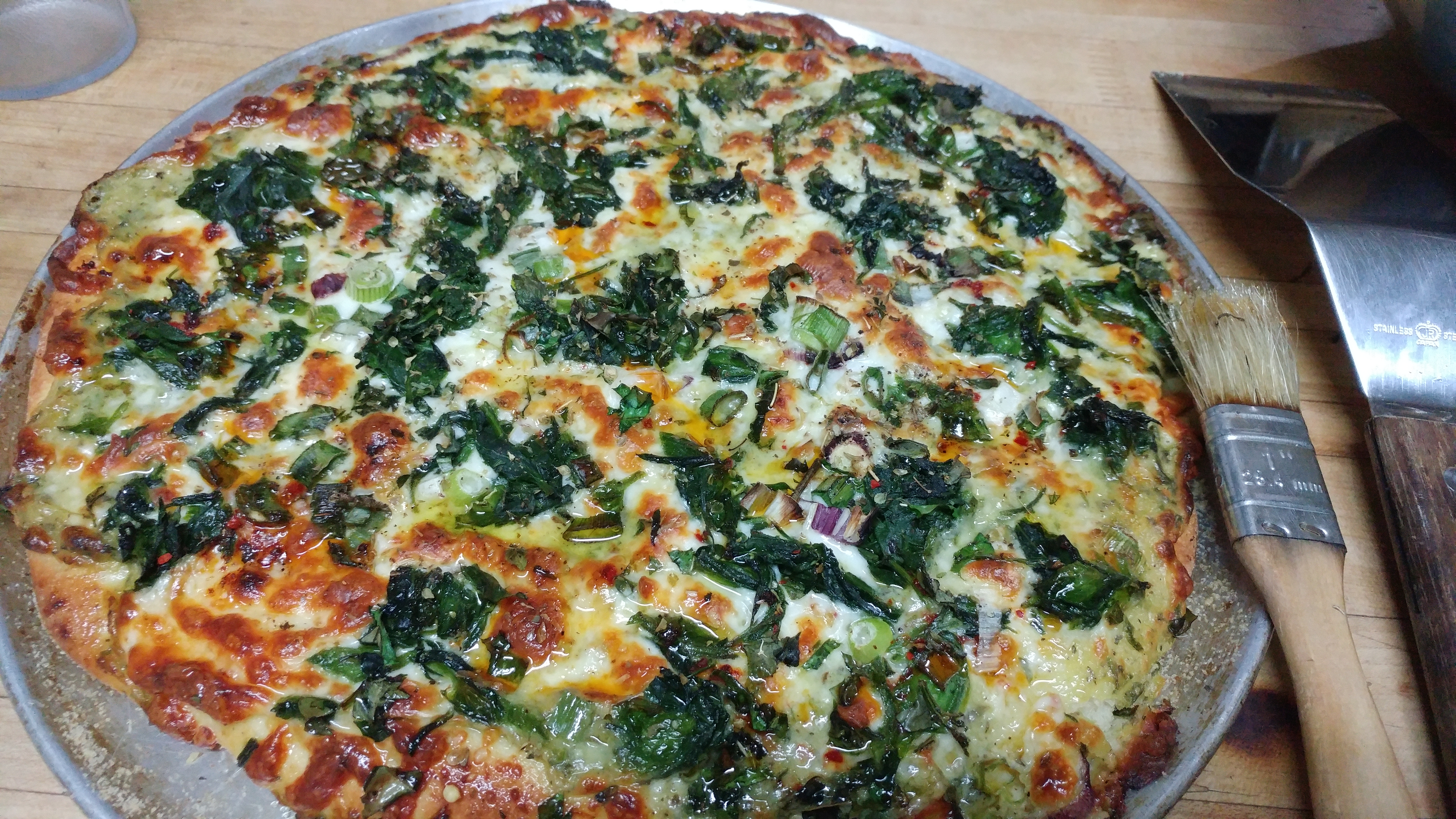 This could have been rolled or stretched thinner, less topping. But it was still delish.
This could have been rolled or stretched thinner, less topping. But it was still delish.
I said I would use the 20lb François gave me as a Xmas gift, because it was a super gift and I don’t want to be wasteful. I have been using it in my bread at la table too (along with Le Moulin Bleu, say 50:50 or just to feed the starter or just to finish) much to my waitresses’ bafflement, given our local credo. I told them it was just a fling. But I’m almost out, so I don’t know. Maybe more than a fling, because I might have to buy more, if only for my home pizza snacks. You can get it at specialty Italian stores or suppliers, not too hard to find in the big city or online I suppose.
And it makes the most fantastic pasta too! I use half Moulin Bleu bread flour and half '00'.
Fliing or not, the Moulin Bleu will remain my go-to and should be on your radar too. Local and organic, especially known for their buckwheat.. I don't know, but it doesn't really make much sense to import flour. So torn.
My more-or-less recipe (pretty darn good but still room for improvement)
2x large or 4 x medium 12’ pizzas:
10-15g yeast (1-2 Tbsp or 1-2pkg) active dry*
400ml water (slightly warm to body temp) or 1 egg + 350ml (total a little more than 1.5 c)
15g (1 Tbsp) sugar
700g+ 00 flour (around 3.5c), more like 550g of AP flour or Moulin Bleu bread flour+
20g (1Tbsp salt)
20ml olive oil (1 big Tbsp)+
Mix water, sugar and egg, add yeast. Add a third of the flour and mix. Allow to hydrate a little, say 20min. Add another third of the flour, salt, oil and start mixing. Once you have a sticky homogeneous mass, add the rest of the flour except for a bit, that you will add as need be. Knead at slow/medium speed, adding more flour as required until a uniform mass /loose ball forms, and then knead a little more, but not too much. Like 5 min total by machine. Until it is an elastic, stretchy, slightly but not too sticky ball that gently pulls off the dough hook or your hands (by hand it will be longer, more like 10min). Let rise covered for 1hr or until double. Cut into 2 or 4 portions and roll into balls. At this point, I put them on a greased tray and freeze, wrapping the next day for later use. Then you pull out a ball and let thaw in the fridge overnight or on the counter for a few hours, before rolling out/shaping. . If you are cooking soon, then let the dough rise another 30min-1hr before rolling out (onto a greased floured pan). Once stretched or rolled out, top and let sit while your oven heats up. Cook for about 10 min in a 450F oven. Go higher with a stone if you can. The hotter the better if your pie is thin, not too much topping. I have found that unrealistic in a home oven setting and with my pizzas. Because you want it to be cooked through and toasted, not burnt. Out of the oven, Brush with olive oil or good oil of choice.
*I find that if you’re not in a rush, it is best to use less yeast and take more time..
Our favourite toppings:
Tomato sauce (with garlic and oregano) spread very thin, you should see the dough through the sauce, cheese (ideally a blend of grated firm cheese like cheddar and/or parmesan-style, with some mozzarella or fresh cheese), prosciutto or salami, green onions, basil, hot pepper
Ratatouille spread very thin, cheese (same as above), olives
Bechamel or cream sauce or just drained fresh cheese with herb pesto (or a ton of chopped herbs and greens), some grated cheese, thinly sliced onions or wild garlic (optional: bacon)
Wild mushroom sauce, cheese
Wild Herb pesto, fresh tomatoes, cheese
3 Pizza dough recipes http://slice.seriouseats.com/archives/2012/07/print/the-pizza-lab-three-doughs-to-know.html
Spring meets Summer, Foraging issues and guidelines
Spring meets Summer, finally!
Although it’s still technically spring, it’s starting to feel a lot like summer. A deep, lush green abounds, a symphony of birds chirping, and yup, the mosquitoes are out in full force.
Our spring rush of harvesting shoots and fiddleheads is over. It’s always a mad dash to seize the short window and make the most of it. With a slow, cool spring, the greens were at their best - mild and crisp, delicious.
 François' 'shade' fiddleheads
François' 'shade' fiddleheads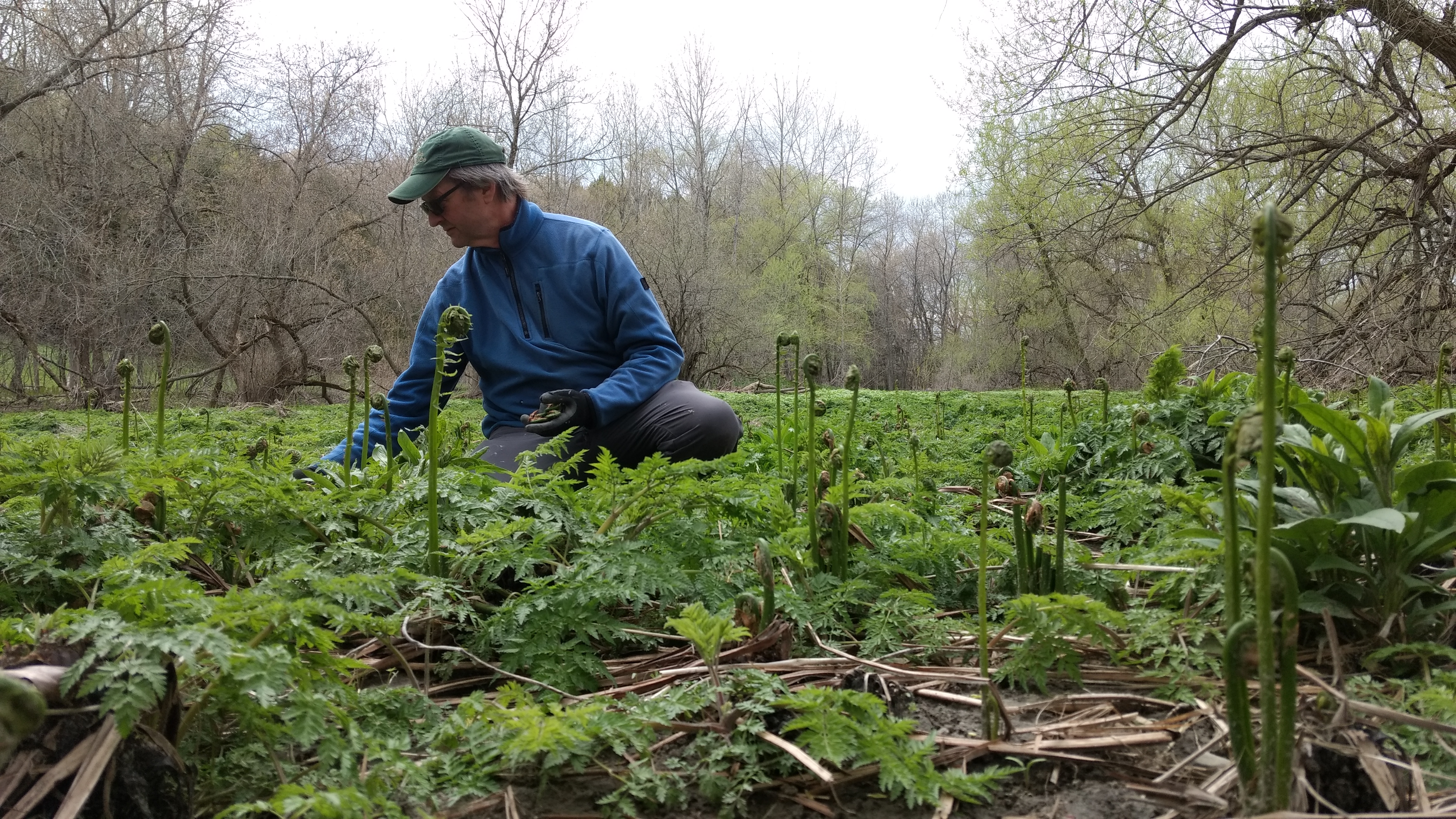
 erythrone/trout lily
erythrone/trout lily
Now, the early season stars like Trout lily, Dandelion, Spring Beauty and Linden have gone, as Stonecrop (live-forever), Daisy and Violet take their place. There is stinging nettle, garlic mustard, sheppard’s purse, wild chives and such.. as the buds appear, the edible flowers start to bloom and first marine greens pop.
It was a great morel season.
I couldn’t help but notice how many people were out there foraging and posting pictures of wild edibles this spring. It is clear that this is a trend that is only growing.
Which is great and NOT.
It’s natural that once awakened to the delights of the forest that passionate eaters and cooks want to get out there themselves. I remember my beginnings at L’Eau à la Bouche with Anne Desjardins where I met François the pioneer of foragers, how thrilling it was to discover these new ingredients. I was lucky to team up and build on his experience, taking the wild thing a step further than the chefs he'd worked with before in the Jardins Sauvages kitchen. But being leaders in largely uncharted territory meant that we had to figure a lot out on our own. Just that a certain plant is edible and best used a certain way is taken for granted now, while many years of research, tests and samples given away lie behind. Not to mention the miles walked and free labour on François' part going back 30 years. Today, it seems that every other menu resembles one of mine from 10 or 15 yrs ago, with game, wild greens & wild flavours everywhere, back when I was the only one with sweet clover or wild mushrooms in my desserts, ha. I knew we were onto something, but who knew it would ‘mushroom’ so.
For sure foraging is awesome in so many ways; it doesn’t get much more terroir, fresh and local than that. But the thing about foraging, is that it’s trickier than it appears! It is not as easy as walking through the woods and filling your basket, it is not 'free'. You need land, and knowledge, a due respect for nature and nuance, lots of time and patience, before actually putting in the hours and doing the work. Finding your spots, being there at the right time, getting down and dirty on your hands and knees with the mosquitoes. It takes more than a day or a season to learn the basics, plenty of books and time spent in the woods. Way more than a google search or utube video, say. People these days want to go too fast. It’s not that I want to discourage eager enthusiasts... But Please! I just wish everyone would be more mindful and cautious. It’s for the plants, the future and one's own sake, not only sustainablility and safety, for deliciousness too.
Foraging primer: Bottom line, Don’t touch unless you know what you’re doing..
Which means How, When and Where.
First of all, know that what you’re picking is indeed edible (there are many look alikes). Ensure that it’s a healthy population. It depends on the microclimate and age of plant population. You need to know the cycle of the plant/how hardy it is before knowing how much you can take. That’s why being in the same spots, seeing the impact of your harvest each year is so important.
Don’t rip out roots (in general). Prune.
If you pick, don’t let it show, as in you’re leaving way more than you take, little trace. Unless you are weeding your garden or in a site with an invasive plant you know well.
Be careful/don’t pick species that are slow to reproduce or endangered: Wild garlic, Wild ginger, Crinkleroot, Milkweed..
And some need to be mature enough, and then just trimmed - like sea asparagus (salicorne, samphire), otherwise you might kill the plant. This is an issue now when it is still several weeks too early to pick salicorne anywhere in Quebec. Yet, I see it on menus.
The ‘weeds’ you can worry less about, Go!: Lamb’s quarters, Nettle, Garlic Mustard, Sheppard’s purse, Purselane, Amaranthe..
And then in the kitchen, they need to be washed, and cooked properly! Some need to be cooked throughout: For instance: Fiddleheads, Milkweed, and most wild mushrooms. Wash well and boil 5min+. Less touchy veg like beach peas, goat's beard, and leafy greens like nettle might only require 1-2min. For mushrooms, a braise is better than a sauté, count 5-20min. Some greens are better raw, but most are better cooked even if slightly. All are super healthy ingredients, but can be toxic, you can’t just wing it. I’ve seen sprouts of toxic plants decorating plates in Montreal.
Don’t give wild plants a bad name by serving anything up because it sounds cool, as little do you know it might be of sketchy quality, often like those on the black market or picked without experience.. For example, dandelion is only good if picked young (before flower) in the morning; most greens like live-forever only in shady, humid conditions; garlic mustard is only yummy young/early season and same, bitter in dry conditions. Same with beech chickweed. Etc. Where, when and how was it picked/stored etc.. is key to whether it will be yummy and not give anyone a belly-ache.
With many wild plants and aromatics (herbs/spices), it’s a question of dosage.. As with nutmeg, basil or rosemary, all of which can kill you if you eat too much. The difference between delicious, medicinal and toxic is in the dose. Normally nature is well made, as in you won’t use anything potent in huge quantities - the difference between a vegetable and an herb, a stock or a sauce. For example, be careful with mélilot/sweet clover flower, sweet grass, conifers - less than .1%. . Oxalis (Lady’s sorrel), like kale and rhubarb leaves contains oxalic acid, which is hard on the kidneys. And so on.
(See more picking tips and photos/links below..)
Whether picking or not, Chefs using wild ingredients need to be responsible for their source or purchases! (See Black Market blurb below) And you can participate. There is a conference on the commerce of PFNL (wild edibles) and the development of guidelines, with chefs and journalists invited (June 14th in Quebec City), the first public meeting of the type, there will be more. It’s about developing the industry further, but in a structured and sustainable way. See below.
Rules and Regulations – they are coming, but it’s complicated
This explosion of amateur foragers and start-ups might be a plus for the economy but problematic for sustainability of the resource and market, quality and safety. Making some sort of regulation has become necessary. Which is what groups of people in the industry and levels of government are currently working on but it’s incredibly complex. Between the interests to develop the forest beyond lumber, putting people to work in the regions, sharing our heritage while balancing what is possible with respect to nature and the realities of the market, labour, what is doable and fair when it comes to enforcement... Quotas, permits?
It’s a big pain in the ass actually. We have no choice but to be implicated, because we care and have expertise to bring to the table, and obviously, it will affect us directly. Trust me, we would rather not have to spend so much time on all this debate and data for regulation because although we believe in it, I can humbly say it shouldn’t even apply to us. Because of all the careless people who ravage or innocently don’t know what they’re doing, we might be banned from picking and exploiting edibles we have plenty of on private property, picking sustainably in the same spots every year (for 30 yrs). Nonsense. No one even knew about most of these wild edibles until François put them on menus by introducing them to chefs.
Or like with ramps. We have a healthy population that we could easily sustainably put it on our menu from our back yard, but it’s illegal. If I chop up a few leaves as a soup garnish for 10 clients there is an inspector at my door. Meanwhile, chefs all over Montreal who do hundreds/thousands more covers have ramps on their menu, from where? No inspectors? So it should be illegal, but what difference does it make? Ideally, it should be legal but regulated.
Black Market Everyone likes a good price, be it at the market or from a picker coming to a chef’s door. This year (and last) at Marché Jean Talon, there was so much black market dumping for fiddleheads, that we had to sell at a loss to discourage them. Because these guys don’t have fridges or a legit business, pay no rent or taxes, no inspectors, zero traceability. Who knows where or how it was picked, stored.. They need to unload so sell at whatever cost, ie dump. Merchants buy and sell. Like with wild mushrooms too. So say this foraging guy decides to continue beyond a day or two, he needs to buy a fridge, register a business, have a clean locale that will be inspected, he will want a website and business cards, maybe an accountant etc. Soon enough he will charge more or bail. Which is what they all do, bail after crashing the market with questionable quality produce, even poisonous mushrooms. So that’s the future if things don’t change, a bunch of n’importe quoi.
Meanwhile, we have for years, sustainably and passionately brought wild edibles to the market (at the restaurant, to chefs and le grand public, in the cooking schools), offering tastings, given out cooking instructions, building the market, teaching. If people want to be able to buy wild edibles from a reputable source, the present scenario is not sustainable.
Marketing vs Truth Everyone has local, something wild or boreale on their menu. But often it’s Bullshit, a few spices and maple syrup while most comes from big suppliers, imported. The morels on the market in March (when every chef wants to put morels on their ‘spring’ menu) came from China. And often, the wild mushrooms and vegetables come from out west, Europe or China, the deer often from Australia; elderflower from an imported extract, sumac imported and very questionable in composition. Wild arugula out of a Costco box is imported monoculture, not the same species as our wild rocket. Just because it sounds wild and local doesn’t mean it is. It sucks to have to question the glossy menu local wild vibe at your hot restaurant. But I’m kind of tired of being the real thing seeing all the BS that doesn’t seem to matter. I’m done with being polite.
Its great that many people want to reconnect with nature, eat locally and explore new flavours. A richesse de notre terroir that naturally should be a part of our culture and traditions, as it largely was before everyone moved to the city and started destroying biodiversity. Now people are waking up to the treasures, but there is less to go around. I know there are many young people opening Boreale restaurants or bars, making gin and cocktail kits, etc with the best intentions, without realizing the issues surrounding the sourcing. Like no idea what 100kg of juniper berries or Labrador tea entails.
Hopefully, we can all move forward with wild edibles for everyone who cares!
Info about the Conference for PFNL guidelines, hosted by the ACPFNL https://www.acpfnl.ca/ Details here: file:///C:/Users/utilisateur/jardins%20sauvages/pfnl/Acpfnl/ACPFNL%20invitation%20AGA%20du%2016-05-2017.pdf To stay informed, the ACPFNL Facebook page: https://www.facebook.com/Acpfnl-Association-pour-la-commercialisation-des-PFNL-178644682180969/
Foraging primer Edible Manhatten http://www.ediblemanhattan.com/departments/d-i-y-departments/forage-or-harvest-a-spring-foraging-primer-for-the-new-forager/
Spring, ramps and fiddleheads http://soupnancy.squarespace.com/blog-journalessays/2015/5/5/officially-spring-2015.html
There are many photos with the plants identified in our albums on our Jardins Sauvages facebook page https://www.facebook.com/JardinsSauvages17/?ref=bookmarks too..
Summer wild edibles http://soupnancy.squarespace.com/blog-journalessays/2011/7/19/snapshots-july-2011-summer-wild-edibles.html
Our old videos:
Spring, trout lily https://www.youtube.com/watch?v=qUMfSfquRpU
Other early summer backyard treasures https://www.youtube.com/watch?v=7Alf1arm478
Wild chives and https://www.youtube.com/watch?v=1kL2ycqvu_Y&t=172smint riverside https://www.youtube.com/watch?v=7Alf1arm478
Stinging nettle https://www.youtube.com/watch?v=1kL2ycqvu_Y&t=172s
Foraging tips and recipes
With the current trendiness of local, seasonal food and notably wild produce, naturally many foodies and chefs are eager to have a go at foraging themselves. After all, it is a part of our heritage living off the land, a rural practical tradition that was slowly largely lost (luckily except for in my partner François’ family).
Wild edibles being our passion and business, (Les Jardins Sauvages a pioneer, thirty years in now), naturally we are delighted that people are curious and open to eating our terroir treasures; however, there is a downside to this trend.. Many among this new set however excited in theory are city dwellers and completely disconnected from nature; they are not afraid enough, or careless , wanting to go too fast without sufficient knowledge, or respect for nature and awareness of sustainability issues.
It is important to have some background information before attempting to forage on your own.
Equally, if you purchase wild food, you want to know that the seller is first of all certified with an official business, knowledgeable and respectful of nature, picking sustainably, mostly on private property if not owned then with permission. Especially restaurant Chefs who are dealing in larger quantities should take responsibility when they put foraged foods on their menu, ensuring that it is from a reliable sustainable source (paid for with bill). The increasing number of hacks and black market is dangerous on all levels not only in terms of sketchy product commonplace, but in terms of sustainability of the resource with no traceability (picked how, where, by who). Not to mention that without the overhead of running a business, these occasional pickers crash the market making it difficult for an experienced business like ours doing it right, working with the government and schools, dealing with inspectors and paying taxes etc. (and who paved the way to boot).. Awaiting regulation, the best we can do is keep doing our thing while educating..
I recently hosted a crew of explorers who were here for a forest cooking competition (Woods Greatest Canadian Explorer) in a survival type series of challenges (airing July 28th) https://www.youtube.com/watch?v=aIvl5CWwZdw . We gave them a crash course in foraging with many of the wild edibles on our property before they had their cook off using wild foods and regular camping gear and dry goods. When customers come to the restaurant for a workshop dinner too, these are the main points we share with them about foraging before they go out identifying and tasting with François.
Bonus below are also a couple of easy recipes that you can dress up or down, meant to be doable while camping.
Foraging Tips
Chef Nancy Hinton, Les Jardins Sauvages
Know what you’re doing!
Ensure proper identification. Don’t rely on only one book (especially with wild mushrooms).
Ensure proper picking, both for taste and Mother Nature. There is a specific way for each wild edible (how, when and where).
Some greens are hardy, growing like weeds in the right environment (like lambs quarters, garlic mustard..) while others have a slow reproduction cycle so can easily be endangered if over-harvested (like ramps/wild garlic, wild ginger, crinkleroot). Don’t touch unless you know the life cycle of the plant and that it is in a healthy population.
In general, don’t rip out roots. Prune tips or leaves from mature plants, leaving buds; leave young baby sprouts alone.
Leave more than you take.
Besides for sustainability, there is also a proper way to forage for deliciousness and digestibility. Some plants are best picked in the morning (say dandelion), others at noon (say some flowers and goats beard).. Some plants are tasty when growing in a moist humid shady wooded area, while bitter, even inedible in a dry sunny season or spot, as with live-forever, wild rocket and mustard, sea chickweed..
Keep in mind that many wild edibles need to be cooked, for example: fiddleheads, milkweed, most wild mushrooms. It is a good idea to wash your harvest. When cooking, follow your palette: If it is pungent, use sparingly like an herb; if it is mild, then use as a salad green or vegetable.
Don’t be in a rush. Be cautious, not stupid.
Books and google searches might be a fine help, but there is no shortcut for experience.. Time in the Woods is Key! The best way to learn about foraging is to get to know your property or a patch of land/woods nearby that you can visit often, observing patterns, trees and what plants/mushrooms grow where every year, including the impact of your harvest (if you have permission to pick.) Start with a few plants and mushrooms, get to know them well and slowly widen your scope every year.
Some wild greens/vegetables to explore without fear: Live-forever, trout lily, violet leaf, day lily, fiddleheads, lamb’s quarters, amaranth, garlic mustard, wood sorrel, sheppard’s purse, wild mustard leaf, wild celery/lovage.. Always keeping an eye out for familiar wild berries, wild mint and chives..
Some wild mushrooms to start with:
Boletes (A family of hundreds including Porcini with the sponge under the cap) – While not all are of interest, they are not dangerous.
Lobster Mushroom – characteristic red colour and shape
Chanterelles – there is only one ‘look alike’ and easy enough to differentiate
Oyster/Shelf mushrooms on maple trees. Most are good when young, avoid really old rotten trees.
Be afraid of very pretty picture perfect mushrooms – often the deadliest!
Fish baked with crinkleroot, tomato and wild herbs
Chef Nancy Hinton, Les Jardins Sauvages
4 portions
Ingredients:
500g fresh fish fllets (or 1x 2lb whole fish, gutted)
45ml Butter and/or olive oil
1 c (250ml) shallots or onion, sliced thin
60ml (1/4c) sliced wild garlic (or 30ml minced garlic)
15ml (heaping Tbsp) steak spice
125ml (1/2c) white wine
30ml (1 Tbsp) crinkleroot (or horseradish)
375ml (1 1/2c) diced tomato (1 can)
250ml (1 c) heavy cream
1.5L (6 c) wild greens such as lambs quarters, sheppard’s purse/wild rocket sprouts, mustard leaf, amaranth..) or spinach/greens of choice
60ml (1/4 c) wild herbs such as wood sorrel, garlic mustard leaf, lovage, ramp leaf, chives, angelica, yarrow.. (or dill, tarragon, basil/ herbs of choice)
To taste salt, pepper
To taste hot sauce or chili
Method:
The fish can be cooked whole and served off the bone too. It all depends on your camping set up and mood.
Sprinkle the fish with steak spice.
Heat large pan or pot on burner or fire, sweat onions in butter/oil a few minutes, add garlic and crinkleroot, then white wine, tomatoes and cream. Place fish in sauce and top with wild greens and herbs, season to taste. Cover and bake or cook gently for 15-20min or until just starting to pull apart. A whole fish will take twice as long.
For the simplest method: All the ingredients can be put in a covered pot on the fire or in an aluminum foil packet (en papillote)..
Wild Mushroom Rice bowl
Chef Nancy Hinton, Les Jardins Sauvages
4 portions
Ingredients
225g wild mushrooms (such as chanterelles, hedgehogs, lobster mushroom, young king or yellow boletes, black trumpets..), cleaned and sliced
45ml grapeseed or olive oil
15ml (1 Tbsp) butter
1/2c (125ml) chopped shallots or onion
30ml (2 Tbsp) wild garlic (or half as much garlic), sliced thin
10ml (2 tsp) wild ginger, minced
250ml (1c) long grain rice like basmati
125ml (1/2c) white wine
30ml (1 Tbsp) dried mushroom powder
375ml (1 3/4c) water or broth
To taste Spices (ex. clove, bay leaf, pinch thyme or curry powder..)
To taste salt and pepper
1L (4c) Mix of wild greens and herbs such as lambs quarters, dandelion, wild rocket, ramp leaves, day lily shoots, daisy, sorrel, mint.. (or say spinach, watercress and basil, coriander, mint..)
30ml (2 Tbsp) Olive oil
Optional splash sesame oil
100ml pickled mushrooms, fiddleheads, kimchi or pickle of choice
To taste Chilli/hot sauce
Method:
Sauté mushrooms in a hot pan with oil. Once they start to colour, add the butter and onions and turn down the heat to medium, cook a few minutes and add the rice, garlic and ginger, stir to coat the rice. Add the mushroom powder and wine, reduce slightly. Add the water/broth, season with salt, pepper and spices of choice. Cover and cook over low heat for 15-20 minutes, until rice has absorbed liquid and looks almost done. Remove from heat and let sit 5-10 minutes.
Meanwhile, toss greens and herbs with a good oil, salt and pepper.
Serve rice topped with salad and pickle.
Add a fried egg, tofu, cooked sausage, leftover chicken/steak or protein of choice for a more substantial meal.
Connecting with my Newfie roots via Hard Tack
I grew up with hard tack. Not many people here in Quebec have ever heard of it.
It’s a dried bread biscuit from Newfoundland sold in chunks in paper bags. Once a staple for fishermen or folks in far-away regions when fresh bread wasn’t always available, food was scarce and you needed to stretch a meal..
My parents are from Newfoundland, my Mom from St-Johns and my Dad from Deer Lake, now well integrated Quebeckers, fluent in French with their cute accents, francophone grandchildren and all. They are the best, but when I was growing up, I hardly thought so. As a young one in Quebec city with innate survival skills, I hardly wanted to let on that I was Anglophone, let alone ‘a Newfie’. Already aware that we stood out like sore thumbs, the last thing I figured I needed was Newfie jokes. My mom made her own brown bread and composted, sent us to school with peanut butter sandwiches in recycled milk bags, I wore hand-me-downs and said chesterfield when my friends said sofa; it was a struggle to not to feel embarrassed next to my ‘fancy’ friends.
Nonetheless, I always knew my Newfie grandfather was cool, he hunted and fished and told good stories flecked with colourful expressions we barely understood that sounded so neat. We loved hearing tales about our ancestors in Newfoundland, both families pioneers (be it exploring the arctic or in civil engineering). As an adult, obviously that heritage is something I embrace, so it’s high time I pay attention to the culinary side too. I hear about exciting things happening on the dining scene, but for now, I’m more interested in the old school ..
Flipping through the spiral bound ‘The Treasury of NFLD dishes’, I felt a warmth, like with many old community cookbooks from Quebec/Canada. Objectively, the recipes seem quite boring, rustic or quaint, yet many dishes struck a chord with me because they reminded me of my childhood, which was a good one. Although I was very critical of much of what my Mom made (being a fussy contrarious brat), her chicken soup, stuffing, stew dumplings and molasses cookies evoke fond memories.
Sharing these food memories with François over the years, a mixed/pure-laine francophone Quebecker and curious gourmand, he couldn’t help but wonder about this hard tack stuff. I told him that I remember it tasting kind of like soda crackers which he adores (one of the few industrial foods in our pantry, he crumbles up handfuls into his soup?!) But no, these are Hard biscuits (as in hard like wood) that need to be soaked to add to a dish, not normally eaten as is.. Yet as kids, we used to crawl into the cupboard next to the Grand Prix milk (yuck) and pick out a piece each to gnaw on, when there was no more cereal or other accessible snacks, I guess.
So, it was on the agenda. I had to make some Brewis for François (and for me), which is what you call a hard tack dish, typically made with salt fish. The traditional recipes tell you to soak the hard bread in cold water overnight. Then you soak your salt cod in cold water overnight. The next day, you change the fish water and cook in fresh water gently until done. Clean and flake. The hard tack is supposed to be brought to a near boil in its soaking water and turned off (so warmed through). Then you mix the two together and sauce with scrunchions (fried pork fat bits somewhere between lardons and oreilles de crisses).
I got the precious bag by the mail from my mom via Aunt Carolyn. I don’t recall any French on the label when I was young, nor was there any mention of ‘low fat’ then, ha. Three ingredients: Flour, water, salt.
François went straight for a piece, didn’t seem to know what to make of it, but went on to nibble on it for an entire period of a Mtl Canadians hockey game. (Hard tack is good for stress, it seems).
I was eager to cook it for him! I thought I should go trad first, but c’mon that recipe is kind of dismal, calling out for a riff. I had to dress it up, and impress François with this novel Newfie thing. Being a chef, naturally, I used what was on hand and went from there for my brewis creation.
We get free fish heads from our fishmonger friends so often, we always have halibut cheek meat or some kind of fish stewing, so that was a good starting point. I added shallots, lardons, ramps, tomatoes (from Lussier), corn and swiss chard from our freezer, crinkleroot(wild horseradish), a touch of white wine and cream. I added the soaked, reheated hard tack in pieces and it turned into a beautiful hash. That stuff soaks up a surprising load of liquid, so I was happy that I kept it separate first (being inexperienced with this kind of dish but experienced as a cook). Afraid it would amount to a big mound of mush, I hadn’t used enough water at first, having to add some to properly rehydrate, controlling the two before mixing. Anyhow, now I know I can liberally soak and add it all to the fish. It turned out great, accompanied by a salad of wild spring greens.. And François really enjoyed it. He thought it tasted like Gaspésie.
Final verdict: Yes! For me, maybe not for you.
The hard tack does not dissolve into mush, keeping texture while thickening and boosting a one pot dish, kind of like cooked potatoes or dry bread stuffing or salad and it has a kind of bland but comforting taste, perfect to accompany a punchy, saucy protein. So, another starch option among the rice, polenta, pasta, potatoes and company. I might prefer rice or a fresh slice of bread with my meal, but I will definitely finish my bag of dried biscuits, try other versions of brewis and have some fun. Do I think others should order some up? No, not necessarily. I could easily do without in my kitchen, but perhaps it will become a pantry staple just so I can whip up the occasional brewis. I love the idea of preserves and a stocked larder in general, feeling like I’m ready for anything, always able to make a hearty fine meal at home no matter what storm or disaster might hit.. I also love ingredients with a story.
Especially in this case, it’s a with a nod to my Newfie heritage with respect and thanks, and a desire to share stories and mix cultures that makes me want to carry on this bizarre dry bread tradition. Next up, maybe some moose brewis for my Grampy.
Photos: Hard tack and my halibut head brewis, François eating with appetite
Eating well off-season
Ok, enough with my seasonal rant about eating local and fresh, enjoying the seasons in time, blablaba..
The reality is it is still winter, everyone is fed up, what to do? No choice but to suck it up, get out when the sun is shining, cook up a storm at home with imports or whatever will make you happy in the moment. Chez Nino helps.. The snow crab and nordic shrimp have begun; Another key address at Marché Jean Talon is Ferme René Lussier for great local tomatoes!
But! Of course, I have to say something about eating well off season too, and that comes down to putting up. No one talks about it past Sept/October, but this is the time to convince any gourmand that it’s a good tool to have in your box, FTR utterly essential in my world for year round happiness. Now is the time to dream ahead and start planning for next year.
Eating seasonal food out of season is very cool too. Local, fresh, put up at its peak. It’s our way at La Table des Jardins Sauvages, and we've been trying to convince people of this for years with our line of local & wild vegetables and mushrooms that are frozen sous-vide. It's beginning to catch on in winter, one customer at a time, from the market clientele to chefs.
At the restaurant, we have our roots stored for the winter, greens blanched and vaccum packed or dried, mushrooms, pickles, frozen berries, coulis, tomatoes, peas, corn, game, you name it .. We have a fully stocked pantry and ten freezers. It’s a parallel approach - taking full advantage of the season, gorging on fresh while preserving the bounty for later.. It becomes normal to eat ramps, fiddleheads, corn and sea spinach in winter as if the seasons don't matter, but it means we have local and wild all year, our trademark. Like in the old days, it just makes sense, and its delicious.. So basically, we’re following the seasons, except for in winter when you eat the other seasons from the gardemanger.
Trust me, you will be less grouchy in winter when you have a freezer full of goodies and canned goods in the pantry.. The thing is, with a whack of preserves, no matter how brutal the weather, you don’t need much to be content, maybe a touch of green crunch and tomatoes from local greenhouses or a bunch of romaine from the store .. Not to mention that if there is a major catastrophe, you’re covered for a while (I’m waiting for the next ice storm, we will be wining and dining, weehah!).
So keep that in mind before the growing season starts! Think like a cook, MEP (prep) for the year.. Enjoy the moment first, but don’t forget that at the same time, you could also be preparing for next winter without too much effort. Clean or cook a bigger batch when making dinner, pop a few containers into the freezer. Take a few hours a week, or a day a month in summer/fall, make a party of it, and put up! A foodie stay-cation?! Canning is a good idea for tomato sauce and pickles, but most things are fine, even best just frozen, often blanched/cooked first as with vegetables. Of course, a sous-vide machine to vacuum pack is ideal but I find that most things for the home are fine in Tupperware style containers. I do our soups and sauces that way and they keep well for months so you shouldn’t be afraid to freeze if you don’t have a sousvide machine.. A dehydrator is great for an array of things, from herbs to fruit to onions and mushrooms.
These are my lifesavers, some ideas to get you psyched and ready..
Quebec Garlic/Ramps/Scapes: With the bulb or root, mince and pasteurize by cooking slowly in oil (no colour). Freeze in small containers or sousvide. Pull one out every month for the fridge and every day cooking. Leaves can be transformed into raw pesto (frozen) as with scapes and used the same way. A knife tip/scant teaspoon goes into my salad daily. (Our ramps our picked sustainably on our own property for home use only).
Stinging nettle: Great dried (for tisane, soups, to grind as an herb/seasoning/food additive) or blanched and frozen for soup.. Or made into soup right away..
Most salad greens are best eaten fresh in season and that’s it. Sturdier ones like spinach/lamb’s quarters can be blanched and frozen. Which means you can’t make salad with them afterwards, but they make a nice veg accompaniement or added to soup, pasta, omelets, smoothies etc..
Herbs: Dried or Pesto. I dry some except the most delicate, and make pure pestos, say with sea parsley, sea rocket, crinkleroot leaf (minced with oil, salt) and freeze in small containers to use in cooking. For the market/home, I make a finished pesto (sea spinach, sea parsley, garlic, cheese..) which is ready for pasta, pizza or whatever.
Salted Herbs: I love this old-fashioned recipe which consists of mirepoix (onion, celery, carrot) minced with a ton of chopped herbs and summer greens (a dozen plus) and salt. I use this magic potion to boost stews and soups, for quick sauces and marinades. I use less salt than a traditional recipe so I freeze it, but it could keep in the fridge for months)..
Tomatoes - Sauce is the easiest. Whole tomatoes are nice to have too. I can both in mason jars, but it’s easier to freeze, less trouble and you don’t need to worry about ph (acidity). If you jar, make sure you know what you’re doing, add some lemon and boil the jars for 10min+.
Wild and cultivated vegetables, buds, corn, fava beans, peas.. Clean, blanch a few minutes and freeze sousvide or in ziplocs. Some vegetables are best roasted (say squash) before freezing. I pickle some buds and fiddleheads, but keep most natural for later use. For some, it’s a one time seasonal soup and that’s it (served fresh at the restaurant, or packaged and frozen). Forget about putting up asparagus, say.
Mushrooms: I put up 30+ varieties in a myriad of ways, it depends on the mushroom (Dried/Frozen/Pickled/Candied..). Some are best dried (those with a soft texture or with aromas that only develop upon dehydration as with boletes); some firm varieties can be frozen as is but not many as they often develop a bitterness, on top of a mushy texture; many I have found can be frozen well after a first cooking. We have a frozen, local ‘Melange Forestier’ (with first cooking) that we introduced last year, just starting to take off as customers/chefs realize that it’s a good deal, local quality variety that you just can’t get here in winter and if you buy fresh, imported and cook them up (losing half in water), it ends up costing you twice as much. Forget about wild mushrooms in winter otherwise beyond the dried for soup/sauce/stuffings.
Stew/Braised meat: In hunting season, I make big batches of stew from moose, duck, partridge etc and freeze for the winter. When we slaughter whole deer, I keep all the tender muscles for roasting, make sausage and braise the rest, making stock with the bones – all gets frozen for future use. I highly reccomend meat sharing (a carcass from a local farm, butchered in pieces, shared among 2-4 families) if you don't have a good butcher like Prince Noir nearby.
Fish/Seafood is best fresh, but still when you come across whole fish freshly caught, filet it up and freeze (this is best sousvide or if not cooked within a couple of months). Nordic shrimp and scallops IQF if fresh.
Berries, fruit: I make jams for the shelf and coulis (both canned, as well as some less sweet for the freezer); I like to freeze most berries whole (and rhubarb diced) IQF to cook with them year round.
Pickles: Ok, pickles remain a condiment, not a main course to drown the winter blues, but how nice to have on hand to punch up a salad or accompany a charcuterie plate with sparkle, color and crunch. Besides the classic JS fiddleheads and mushrooms, I pickle a shitload of things, have a few traditions like hot sauce and ratatouille that aren’t wild at all, but necessary in my pantry, like my natural green bean pickle and peppers.
There are so many more possibilities on all fronts, from the cooked to the pickled, or natural fermentation (more tricky), to wines and alcohols, extracts.. I steep herbs in alcohol (thé des bois, foin d’odeur, juniper berries, elderberry) too.
Certain precious things should be kept seasonal, because they are best that way. But who’s to judge. Almost anything you love can be put up in some form or another. I like to eat ramps and sea spinach year round (a relatively new luxury habit of mine being with François des bois), which in fact only makes me more excited when the season starts, so I can stock up..
I hope I have you revved up for the growing season, and eating well off season too.. Don't despair, the greens are around the corner!
Happy Spring!
PS and BTW, many of these preserves, we sell at our kiosque Marché Jean Talon if you don't feel like doing it yourself..
Live in each season as it passes..
My spring rant on the seasons and the BS PSC
Although spring greens are still a far-off dream, I had my first taste of fresh snowcrab and head-on Nordic shrimp last night, what an early Easter treat!
‘Live in each season as it passes, breathe the air, drink the drink, taste the fruit, and resign yourself to the influences of each.’ Henry David Thoreau
This is a favourite quote that is never far from my mind, my life being so intimately entwined with the seasons at Les Jardins Sauvages. Nothing resonates with me more, gets me fired up like the changing seasons and their accompanying treasures. So on the flipside, this quote recalls a recurring pet peeve of mine at the dawn of spring in recent years – that of the Premature Seasonal Celebration ..
I’m talking about the phenomenon of Maple menus all over town in February and March - not weeks, but months before the sap runs. For the record, it is now April and the season has barely started with a trickle, on the verge in most regions of Quebec - yet the theme seems unfairly tired. Similarly, chefs who claim a local, seasonal cuisine have already launched their spring menus featuring morels, fiddleheads, ramps, asparagus and lobster when hello! there is still a foot+ of snow on the ground, and another snowstorm or two on the way. In this food obsessed age and supposed reverence for what is precious and local, why the hell is it cool to follow some other country’s seasons? Why is everyone in such a rush?
Understandably, the endless winter has gotten people antsy, so anxious for spring that restaurants, purveyors, journalists and eaters can’t help but jump ahead. It’s also normal that restaurants want to fill the dead season following Valentine’s day and the Montreal Highlights Festival with some kind of event, so why not maple.. The media naturally aims to be a step ahead. But c’mon, it’s out of control; perhaps we could use a little collective imagination instead of propagating the PSC and BS, or BullShit Seasons .
The thing is, when the real time comes for the real thing that is fresh, at its peak and local!, when there is something to earnestly get excited about and celebrate, people are blasé, already moved onto the next thing that isn’t in season yet. Like crowds flock together to gorge on last year’s maple syrup, the first taste of asparagus for many at the hotspot comes from Peru or wherever.. Fiddleheads and dandelion no longer seem exciting in May when they are at their best. By the way, Strawberries and Rhubarb won’t be any good until June; Forget about Fava beans, Peas, Chanterelles and sea asparagus until July.
Is it because everyone wants to be the ‘first’, ahead of the game or what? It feels so phoney-baloney, like everyone is disconnected from the land and who cares. Beyond spoiling the beautiful notion of the seasons, what really gets on my nerves is not cooks purchasing imports, it’s the pretense of a seasonal approach and lack of respect for what is really top notch quality, that no one seems to care about authenticity, agreeing to play this ridiculous game of BS seasons.. I can see how this can easily happen to an urbanite who innocently has no clue what is growing on the farm or in the woods, relying on magazines, bloggers (who are equally disconnected) and stores and suppliers (who import most of what they sell) instead of nature for seasonal cues . A good reason to get to the countryside and to the farmer’s market more often for a dose of fresh air and grounding reality.
Hence a cry from an annoyed country girl who loves her seasons and food, enough of this nonsense.. Seriously. Why can’t we all just chill out and enjoy the seasons as they pass, live a true connection with nature instead of a fake one. Everything in its time. So, it’s still cold out, bundle up and go soak up the last of the winter with some spring skiing and a French onion soup or Cheese fondue, get out to a cabane à sucre when the sap is actually running next weekend for some cuvée 2015. Fine if you’re dying for some green crunch, add some imported asparagus or greens to your dinner plate, but for goodness sake, wait for our local harvest before making them the star of the menu..
The real thing tastes and feels better, and should be valued as such.
Mushroom aroma Magic
The magical world of mushroom aromas - A lot of je ne sais quoi
Tis the season. I am processing hundreds of pounds of mushrooms every week – cleaning, slicing, dehydrating, blanching or cooking, pickling etc. A ton down now, with another ton to go, I am living in a mushroom cloud. Boletes, Chanterelles, Hen of the Woods, Puffball, Hedgehog, Yellowfoots, Matsutake are all perfuming my kitchen, headspace, car, curtains and clothes..
Some of my Mushrooms in pics..
After all these years at Les Jardins Sauvages, I know the 30+ varieties that we harvest intimately, and I am enchanted by their heady scents year after year.. I have a good nose but always have a hard time nailing the damn shrooms with words, reminding me of my first winetasting class. They are not only mysterious and elusive in the woods, but on the palette – each one characteristic and complex, so hard to pin down.
Unmistakable, unique, nothing smells like Matsutake mushrooms for instance. Fresh, in the oven or dehydrator, they are seriously intoxicating on different levels. Cinnamon and Flowers definitely; one year I noted violets/lilacs, this year I say rose ?? plus a lot of je ne sais quoi..
My car still harbours the lingering odor of freshly picked baskets of porcini from a week ago - another mushroom that leaves its mark. Fragrantly earthy, nutty and sweet smelling, even better in the pan or yet the dehydrator, where an entirely different set of aromas develop: vanilla, soy, coffee and spice. Hen of the woods roast up like chicken and corn, wild oysters like almonds and chicken. Others smell like walnuts or citrus (Delicious Lactarius!), it’s crazy. Puffball can be pungent and black trumpets musky but like with cheese or truffle, there is such a thing as 'good stink' that translates into great taste.
When cooking, the aroma notes like 'chicken' are often associated with the Maillard reaction (caramelising sugars & protein) mixed in with what I call the forest (piney/woodsy/nutty etc). However, with many shrooms, especially in the bolete family, once dried, you get a whole other family of increasingly complex, often exotic aromas that you don’t get fresh or cooked – fruity flavours, vanilla, chocolate, caramel, butter, coconut on top of the nuts and earthy notes. This last group I call ‘sweet’ because I associate them with dessert. The red mouthed bolete, larch bolete, slippery jack and Maple scented Lactarious are incredible naturals in the sweet kitchen.
There is something hauntingly addictive about wild mushrooms. Many nature lovers get hooked in the hunt, whereas with cooks and gourmands, it is at the stove and table. Beyond their deliciousness, nutritional content and newfound medicinal properties, they win you over with their mystical aromas. Then with their flavours of course and omnipresent umami kicking in with protein and minerals, texture and mouthfeel, plus whatever bonus the accompanying recipe delivers. Mushrooms are fine dance partners, pairing well with a delicate fish or slab of red meat; they can jazz up a sidedish or take the leading role in a pasta, tagine or risotto, ice cream or cookie. There is a mushroom for everything.
I obviously love my shrooms and I have picked them apart, figuring out which ones are best cooked or dried, braised or roasted, pickled or candied, steeped or pulverized. I spend a lot of time cooking them and teaching people how to prepare them. Everyone wants to know how to pick and cook, but it’s the aromas that fascinate me most. I know them almost better than my family, but I have just about given up trying to describe their nuances. A few years ago, I had employees participating in my little shroom sniffing exercise like a wine tasting, but it got me nowhere beyond laughs. Ok it smells like my grandma’s apple pie (so you mean apple and cinnamon?, I guess). I look at my notes from the early years and I see ‘maple’ for chanterelles or ‘pine nut’ for matsutake.. And this is true, but now I’m no longer objective, I know them too well, it’s that they just smell like themselves, like a ‘Chanterelle’ or a ‘Matsutake’, as a pear smells like a pear and an orange an orange.
And I guess, that’s enough for me. I’m at an age that I have no problem accepting some magic and ‘je ne sais quoi’ in seeking out and understanding the truth about things. There was a time too when I was bent on figuring out what molecule (a protein I thought) in certain boletes that creates a solid emulsion, to hear from a scientist that it was probably a complex saccharide of some kind; anyhow now I've moved on, comfortable with what I understand, able to exploit or avoid its emulsifying properties without delving into the chemistry.
Plainly viscerally, I have simply discovered a marvelous world of aromas with mushrooms that few people are aware of. I might be done with over analysing, but I do encourage you to sniff your mushrooms.. And I can’t help but think François Chartier would have fun attacking this one day. Let’s just say that a mushroom is not a mushroom and any one way more complex than a stick of celery or stalk of rosemary.
My Stupid Mushroom aroma notes
Agarics Champêtre very mushroomy, toast, fruity chocolate (cherry blossom), truffle
Armillaire Ventru mild but with a bite, toothsome texture, nutty, ostie/church wafer; chemical off notes with high heat; dried: fruitcake, spice, citrus
Bolet baie buttery, fruity, excellent, rare (boohoo)
Bolet insigne moka, molasses, hickory
Bolet jaune toffee, vanilla, coconut, butter
Bolet orangé roasted nuts, major floral component
Bolet à Pied Glabrescent fragrant, subtley floral, honey, caramel, green nutty as in stone fruit pit, caramilk
Bolet à Pied rouge very fruity, vanilla, chocolate, playdo
Cepes aromatic and meaty (roast beef), soy, vanilla, coffee, cinnamon, nutmeg
Cèpe des Mélèize very sweet, moka, chocolate, vanilla, butterscotch, strawberry ice cream
Chanterelles maple syrup, almonds
Chanterelles Clavaires earthy, meaty, maple syrup, almonds and coconut
Chanterelles en Tubes hot milk, cappucino, caramel
Coprins meaty, woodsy, walnuts, long cooking best
Hygophores apricots, chicoutai
Lactaire Délicieux brittle, delicate, floral, walnuts, citrus
Lactaire couleur de sui citrus, flowers
Lepiote lisse mushroomy, much umami, soy, nuts
Lobster mushroom firm texture, not much flavour, but yes lobster, earth, fresh esp dried: fresh, coconut
Matsutake particularly aromatic, unique: floral, fruity and earthy all at once, chewy texture, citrus, pine nut
Mousserons supremely delicate, coffee, honey, citrus, bitter almond, kirch
Morilles deep and earthy, musty, intense but subtle, truffle, coffee, spice, chocolate, oreo cookie
Pied bleu Strong, meaty, nutty, sapin, peppery, vegetal
Pied de mouton Mushroomy but fresh, acid, buttery even cheesy, cook low heat, dried: butterscotch, almond paste
Pleurotes(automne) delicate, almonds, bbq chicken
Polypore Souffré Watermelon, lilacs, corn, lemon
Polypore Poule des bois Delicate, chewy, melon, corn, roasted chicken, almonds
Trompette de la Mort Sweet and deeply earthy but fresh, complex, truffle, licorice, beurre noisette
Slowly changing seasons; winter to spring
The air is still nippy but the sun is shining; icebergs and tree trunks whiz by, the swollen river noisily confirming that this crazy winter is finally over; the sap is running and spring/summer is around the corner, weehoo.
A quick peekaboo to the spring edibles ahead.. In case you want to jump foreward and skip my rehashing the winter..
The winter wasn't all bad in retrospect; here are a few highlights (besides my glorious time snowshoeing in the woods which might be less of interest) winter snapshots
- ·I discovered dehydrated onions - delicious as a snack (and healthy!) - straight up naturally salty and sweet with kick, very addictive.. Also nifty jarred for convenient home cooking (to flavour a soup or sauce, say..). All you need is a basic dehydrator (as in Country Harvest from Cdn tire) and a bag of spanish(type) onions to be won over.
- We cooked up our lama and loved it. Very much like young pastured beef/grainfed veal. Wish someone else would raise some.
- We ate a lot of oysters (and hence a lot of Rockefeller mix too). We like our oysters raw, but it was cold so we did half half. I was reminded of what a versatile recipe this is, adding mushrooms and other vegetables, using it not just for oysters but on pizza and in casseroles. A template for inspiration to riff on with the seasons, I will keep it in mind long after oyster season is done.. See below.
- I made a whack of soup, true to my monicker. Maybe it was the bone-chilling weather that made my soup a hot commodity. Our soups, prepared dishes and frozen sous-vide vegetables & mushrooms sold better this winter at the market too – you can see that a certain clientele is eager to shop local in winter. Customers also seem to like the ‘ready to eat/just reheat’ aspect as much as the ‘local & wild even in winter’ thing. And they are surprised to see the quality unaffected by our putting up process. Especially with the fiddleheads, some said they would buy them like this even in season to avoid having to precook them themselves!
- Whole braised rabbit - I rediscovered rabbit (since last year). But this time, I have a new local producer and thanks to my sister Maggie whom I watched cook it whole with success, I was inspired to ditch my former cheffy treatment of deboning, stuffing the saddles for sous-vide/roast and braising/confiting the legs separately, adopting her braise whole approach. A sear on all sides for browning, then deglaze, add mirepoix etc. and bake slow for hours. Much simpler, and better since those tough flank bits just dissolve. You pull it all off the bone and mix in with the super tasty sauce, and it will please even the pickiest eater (just tell them it's chicken if you have to, although I hate that - because anyone should just be pleased to eat better quality meat).
- Favourite tisane/medicinal plants: Burdock and Nettle (any time tonic), Green oat (by day) and Lemon Verbena or Labrador tea (by night). I got into Sapin Baumier for a spell, not for its purifier/tonic/disinfectant/pulmonary attributes but mostly because it was wintery and delicous. But then I suspected I might be reacting to it, so I gave it a pause..
- Humble pie lesson wrt medicinal plants& natural remedies – I learnt that it is prudent to not be overzealous and fearless about dosage and random combinations. However studied, and only using myself as a guinea pig, the resulting cocktail can end up with consequences more severe than any experimentation in the kitchen.. Mental note: I have twenty years full time experience in the kitchen and only a couple part time with medicinal plants and essential oils. However, I have mastered several ointments and remedies, tried and true with my face & body cream, cold medicine, mouthwash, toothpaste, soap, house cleaner and a line of perfumes. Fun stuff.
- Best restaurant meal: At Le Serpent in Old Montreal, definitely.
- Best reading (magazine): The Intelligent Plant by Michael Pollen in the New Yorker (see my B&B Feb)
- Best book purchases: Une histoire du Québec, racontée par Jacques Lacoursières; Power Plants, by Frankie Flowers and Bryce Wylde (also best author names!)
- Biggest waste of time: Following the provincial election campaign in March
Now even this winter lover is officially ready to move on.
Although we do quite well in winter between our preserves and Daignault's fabulous hot-house greens being diehard daily veghead-salad eaters, there is nothing like the crispy crunch and aroma of fresh wild greens and vegetables. So yes, we are eager for the growing season. A good three weeks later than in previous years, it would be good to get the business rolling again.. With the river so high, we will have to fix our poor bridge which took a beating this spring, in order to get to many of our goodies. François has his boot suit out but the river needs to subside still.
Here's looking ahead to May when our race with nature will start in earnest: The first greens to show up are usually day lily sprouts in our yard and trout lily in the woods. Then the nettle and ramps; also spring beauty and ulvulaire, then dandelion, linden and violet, all for the makings of a great zesty salad.. The kind of food our body craves at this time of year. Hopefully, it will go down something like this: http://soupnancy.squarespace.com/blog-journalessays/2011/5/5/spring-has-finally-sprung.html
Or this: A slideshow of wild spring edibles à Les Jardins Sauvages..
Soon enough, of course, the fiddleheads will follow - our star of spring!
And no, you don't need to be afraid of fiddleheads - so nutritious and versatile. Just eat fresh, wash and cook in lots of boiling water before seasoning or adding to any dish. For quality sourcing, we will have two stalls at Jean Talon market this year for the season! Here is an easy recipe:
Fiddleheads with garlic, cider vinegar and tamari: Wash and blanch for 5min in lots of boiling water, refresh and drain. Sauté with garlic, olive oil and a touch of butter, add a filet of tamari and cider vinegar, s&p. Serve as an accompaniement or to top a composed salad. Add to an omelette, pasta dish, or chop up and make my Rockefeller mix.
If you want more on fiddleheads: http://soupnancy.squarespace.com/blog-journalessays/2012/5/14/fiddleheads-for-once-and-for-all.html
Or if you’re wondering why I am not going on about ramps:
Been there done that too often in the past. Yes, yummy but not the end of the world. Not to mention that we have the government agency on our ass every spring in case we might have a whiff of a ramp on a menu despite our sustainable source and knowledge, while urban chefs have ramps all over the place without either. In New York and Ontario, you still see uprooted ramps at public markets! Meanwhile, they are illegal in Quebec for that reason, because they were overharvested, a few idiots wrecking it for everybody. Although not exploited for our business, we will certainly harvest a few bulbs from the abundance on our property for home cooking, but mostly we are happy with the leaves.. We take advantage at the end of the cycle to garnish salads and just about any dish, making pesto for the winter..
Nancy’s Mushroom Rockefeller mix
This is a classic prep for me, kind of a like Rockefeller mix for oysters but with mushrooms. In May, I will swap the mushrooms for fiddleheads and in July with sea spinach. In winter, we eat a lot of oysters so I always have a batch on hand. I also use it to top crostini or pizza, to stuff crepes or as a layer in a gratin or lasagne.. Simply add more eggs and a touch of milk and it’s a frittata or omelette. Add more liquid and macaroni, top with cheese and its mac’n cheese or the binder for a gratin. It's really a template for inspiration, a starting point.
With fiddlheads, blanch and chop, proceed to step 2.
1c or 12p
200g fresh mushrooms (of choice: eg. chanterelles, oyster, matsutake, lobster, button..), chopped
100g sea spinach, blanched and chopped (or spinach)
2 strips par cooked bacon, minced (optional)
2 tablespoons (30 mL) olive oil
2 shallot, finely chopped
1 garlic clove, minced
pinch chilli, pinch thyme
1 tablespoon (15 mL) unsalted butter
4 tablespoons (60 mL) white wine
1/2c (125ml) whipping cream (35 per cent) for cooking
100g (1/2c) grated cheese (Menestrel or other mild aged cow’s milk cheese like even cheddar)
1 large egg (or two)
Salt and freshly ground pepper
Drops soy sauce and worchestershire, tabasco
Juice of ½ lemon or drops cider vinegar
2 tablespoons (30 mL) finely chopped herbs (chives, parsley, dill or basil)
Baguette, thinly sliced and toasted
Or 2 dz oysters
1. Wipe mushrooms clean. If mushrooms look dirty, immerse them briefly in a large container of cold water. The dirt will sink to the bottom of the container. Then scoop them out of the water in a sieve or colander, transfer to a towel and spread out to dry or pat dry before cooking.
In a wide, heavy saucepan over medium-high heat, heat oil until hot. Add mushrooms and sauté until they start to colour. If they are wet or release juices, keep the heat at medium-high, otherwise lower heat to medium, stirring often.
2. Add shallot and butter and continue cooking a couple of minutes until the mushrooms are uniformly coloured and cooked through, about five minutes. Add garlic for a minute.
3. Add wine and boil gently, uncovered until it has almost evaporated. Add cream and stir frequently until sauce thickens. Turn off heat. Add sea spinach, bacon and cheese. Add egg while stirring. Season with salt, pepper and lemon juice/cider vinegar, a touch of soy and worchestershire, Tabasco..
4. Spread mushroom mix on baguette slices, dry or toasted bread and broil for 3-5 minutes until golden. Garnish with fresh tomato in season.
Or stuff oysters and broil for 5min.
NB. This mixture can also be used to stuff vegetables (say button mushrooms or zucchini rounds). Add a bit of stock and/or more cream and it can be the base for a potato/vegetable gratin or mac&cheese; in which case, top with more grated cheese. For a frittata, simply add more eggs and bake in a buttered dish for 20+min at 350F.
Bye bye salicorne, Hello shrooms
After a good month of feeling spoiled with a myriad of marine greens garnishing my plates, the season is sadly coming to an end. I have enough spicy sea rocket to make a salse verde for my current menu, a little Canadian sandspurry (that tastes like beet), the sea asparagus is done - gone woody. My favourite, the sea spinach is the only one I put up for the year, blanching and sous-viding it for the freezer so that I can cook with it, but best get my salad fix now..
François was the first to put these greens on chefs menus twenty years ago, but now a new generation of chefs are waking up to them too.. They grow along the lower north shore, and from the Lower St-Lawrence to Gaspesie, and François has found the perfect spots managed now by Claudie (Les Jardins de la Mer). Taught by Francois and a part of our team, Claudie is ‘the queen’ who has made these greens her life in the Lower St-Lawrence. Picked by her or François, you know they are properly sourced, tasty and clean. This article featuring François’s August pickings (in French): http://www.lapresse.ca/vivre/gourmand/cuisine/201308/28/01-4683958-plantes-de-mer-du-littoral-a-la-table.php
Now, it’s more than time to focus on the shrooms, and yes, they are sprouting.. The chanterelles are just beautiful, and the lobster mushroom too (not my favourite, but this year, I feel a soft spot), a good year for gypsy mushroom.. Now, the hen of the woods is taking over as star (a definite favourite!), autumn cepes are happening and there is a trickle of hedgehogs and yellow-foots, which will be the next boom. We have over a thousand pounds down (as in processed and put up), another couple to go, weehoo!
Photos.. https://plus.google.com/photos/103408259485441464988/albums/5919231057095014049?banner=pwa
And as the mushroom season progresses, I will be posting shots from our 2013 harvest here: https://plus.google.com/photos/103408259485441464988/albums/5919231057095014049?authkey=CMms0sb1m9WLZA
August, Good eats
For a minute in August, I always get sad as many wild plants go to seed (the cycle over), which means fewer tender leaves for picking, but also that the array of beautiful flowers (some tasty too!) dwindles to a measly palette of golden rod, wild parsnip and aster for the tables, some yarrow for medicinal purposes.. You see, beyond cooking the wild edibles, picking wild summer flowers makes me happy – being surounded by the scents and colours, arranging bouquets for the house and restaurant.
Thankfully it’s always around the same time that mushroom season starts kicking so I don’t have much time to wallow. Not that ‘normal’ means anything anymore in terms of nature’s timeline apart from that. You’d think with all the rain and intermittent nice weather, it would be a good mushroom season, but apparently it's not a given yet. Like with many summer plants, marine greens and berries, everything is late. Looks like a good berry season though thanks to the water. The blueberries are amazing; we’re picking the first wild blackberries and sarsaparilla.
As for the shrooms, around here, the early summer boletes (like yellow granulee, pied rouge and glabrescent) are on their way out while the lobsters, lactaires delicieux are showing up. Chanterelles and porcini have been present for a couple of weeks, the Flocons and Black trumpets appearing now. Puffballs and Hedgehogs won’t be far off. Some Chicken mushroom, so Hen of the Woods soon too. Looks like it might be a better fall season, fingers crossed.
Some photos:
Other things that make me happy in August, not just wild:
Ontario peaches and they are good this year. Especially when you have a forager guy that can choose fruit like François. Peaches are best eaten as is, but during the season, inspiring to cook with too. I put some in my berrry chaussons and some compound salads at home (with something salty, think melon proscuito).
Fresh peas and favas, however a bad season for them, but the few sacs we were lucky to get were good, always labour intensive but worth it.
Corn – you need to buy (Denault’s) yellow at Jean Talon Market, so good. Look for Le Roi du Mais.. Corn on the cob, a rite of summer; great in salsas and compound salads, in soup.. A favourite sidedish this summer has been a new potato salad with corn, yellow beans, sweet pepper, sea spinach and our wild herb chimichurri.. Corn is a sure crowd pleaser in soup too: I nowhave a corn and wild mushroom chowder on the menu at the restaurant, a good way to use up all the broth I make from the empty cobs.
Back to the wild: sea spinach of course! My absolute favourite wild green, raw or cooked, especially just wilted with garlic, EVOO and butter or chopped up and added to a salad or pasta/rice dish/omelet... If you've never tasted it, it's just like 'super duper' spinach - more flavour and a touch of salt and pepper built in.. Like with spinach, I prefer the bigger leaves of late season available now and for another week.. Hopefully I won't be sick of it by week's end, the last stretch in my race of putting up for the year, hundreds of pounds, a good chunk for Joe La Croute's popular Popeye bread.
The sea rocket and salicorne are good this year too, if hard to find; the stormy weather and tides having completely transformed the landscape, forcing Francois, Claudie and team to hunt far and wide.
The downside to the foraging trend
La Faune et La Flore
Another hurdle for Les Jardins Sauvages
Good thing we’re made strong and love what we do!
Profile: Les Jardins Sauvages, Pioneer and leader in Quebec Wild Edibles. 28 years in business, constantly evolving.. Now with a permanent stall at Jean Talon Market in Montreal & acclaimed Country Restaurant in St-Roch de l’Achigan; 100+ products fresh, 100+ products preserved; A Forager and Chef team with experience, long committed to quality, local and wild, artisanal and sustainable food..
I'm told I don't toot my own horn enough, see I'm practicing..
In case you don’t know, Jardins Sauvages is the original wild foods business in Quebec. Long before anyone heard of Noma, François was foraging, the first to introduce chefs to wild greens and many local wild mushrooms. He spent years of walking the through the weeds & woods of Quebec to find healthiest spots to harvest each species; he intimately knows nature and how to pick for quality and sustainability – where, when, what time of day, what stage in the cycle. Working with Quebec’s top chefs, he refined his skills, learning what was best picked young, cooked in numerous ways. And now, I’ve been cooking his wild stuff for 13 years since I met him at L’Eau, on a full time basis since 2005. I’ve figured out what’s best how, say raw or cooked or dried, savoury or sweet, what mushrooms benefit from a sauté or a slow braise, how to put them up. We were the first to make mushroom ice cream and chocolate, to smoke mushrooms, to cook with cattail pollen, promote local teas & spices or pick and cook marine greens in so many ways - paving the way, showing people what could be eaten and how. Unlike some of the newcomers jumping on the foraging bandwagon, we know what we’re doing.
Nonetheless.. a few weeks ago, we got a visit from a couple of officials from La Faune et La Flore, a governmental arm that regulates the environment, forests and fishing. We should have nothing to fear, buy nay and yay, another battle is before us. They are banning crinkleroot and wild ginger, among other things, but these two affect us most, a dozen of our products, our menus.
The funny thing is that they were especially eager to pay us a visit because I had put wild garlic (ramps/ail des bois) on my menu this spring. In ten years, I never dared, but then I saw all Montreal chefs with ramps on their menu, and I figured if anyone should have them on the menu it should be us, given that the wild thing is our deal, we have tons on our property, and know how to harvest sustainably and all. Not to mention that it was just a few leaves from our field, ciselé as a garnish for a soup for 10 clients. Meanwhile, restaurants serving 100+ clients a night with anonymously sourced and less sustainable garlic don’t have an inspector in sight. BTW apparently, whether it’s from Ontario or New York, the law stands, not allowed. Anyway, it’s not like I’m tattling on other chefs, I just want to be able to do what we do. I have never even ever heard of a Montreal chef bothered by the F&F. It’s such a joke that they’re at our door.
Like with wild garlic, they have decided that crinkleroot and wild ginger are endangered species and need to be protected. We agree that they need to be protected, in that they need to be harvested with care and knowledge first and foremost, not completely ripping out the plants. Especially that the foraging trend means that there are new players in the game (many uninformed, unconscious or overly ambitious), evidently, some kind of general regulation is in order, maybe permits? In any case, there needs to be an official protocol for wild edibles, all above board, a traceability, an approved list of what can be harvested and how, where, by who, sold how and for what price, all registered. A common code of ethics was enough before, but given the current climate, we are all for this. However, it is complicated to regulate; for the govt, much easier to ban.
In the meantime, it certainly isn’t fair for us, for François who has been doing it properly for 28 years professionally and plus. He was the first to put most wild edibles on Quebec menus - before they were being imported from France (like salicorne, mushrooms) or simply weren’t known to chefs (like wild ginger, orpin, day lily buds, milkweed, arroche de mer, caquiller, the list is long..). He is in the same patches year after year, observing and taking care of nature while he harvests; he gardens the forest. We have more crinkleroot every year, more than enough wild ginger for our needs. He has seen the progress of the crinkleroot for 50 yrs+ because they are family spots. His family has always eaten crinkleroot; we continue the tradition of making his great-great grandfather’s Henri Rochbrune crinkleroot mustard, but 100+ years later, now we’re not allowed.
All to say, these plants obviously aren’t endangered in François’ hands. There is a way to pick that stimulates the plant if it is in a healthy environment; he knows when to leave it alone. He invited the govt officials to visit his terrain, encouraged them to follow him and bring their scientists/advisors to study his reality, to open their minds. He does not understand where they get their data. They’re worrying about fiddleheads and spring beauty? C’mon, just come here and see. How much we harvest from the same land every year. Their sources are from controlled studies, another micro-climate, labs, foreign or outdated books, I don’t know. One thing for sure is that the pencil pushers and botanists aren’t in the Que woods on a daily basis like François.
On top of it, we are a small diversified business, dealing in small volumes according to nature - a little bit of this and that, all sustainable, with our spots on private territory, maintained year after year, no big threat. We led the way, and now because wild foods are becoming popular, we are penalized. Because there are others including some hacks who are just in it short term for a bang or because they think they might like doing this but don’t know squat or care to do things right, or want to exploit a lot of one thing.
Not all foraged food is equal! There is properly sourced, properly harvested and there is ravaged. There is sweet, and threre is bitter. There is tender and tough; delicious and disgusting, nutritious and toxic.. Few in the marketplace seem to know or care about the difference. As long as it’s wild or Nordic, sounds good on a menu. Sadly, marketing seems to count more than quality or integrity. Obviously we have some marketing to do.
We hate to see so many bad foragers around spoiling it for the rest of us, but, it is also important to note that most of the destruction of vulnerable plants and biodiversity is due to development/urbanisation. François has seen so much simply disappear because of autoroutes, Walmarts, condos and parking lots.., way more havoc wrought this way than any bunch of pickers could do. More than once, François had proposed a solution to mayors/municipalities, say when they were bulldozing to make the 50, destroying so much rich land where there was tons of wild garlic, ginger, crinkleroot and much more; he wanted permission to go and save some of the plants. His project got bogged down in beurocracy and never worked out, but he said that in a day, he could have saved enough wild ginger to supply us and every chef for a lifetime. You’re not allowed to pick the wild garlic or ginger, but they’re allowed to bulldoze it. Doesn’t make sense.
It’s not just chefs and back-to-earth types getting into foraging. As the far away regions try to develop their resources and put people to work, the exploitation of the forest and land has become key. Backed by Govt money, they have been training unemployed volunteers to forage, small businesses opening and they’re all trying to find markets. All dandy in theory, but it’s a mess. Too many students expecting to make $$ picking mushrooms they can barely identify. Detached investors wanting to harvest too much. We have no choice but be implicated. François is working in Lanaudière and also with other regions as various agencies and business groups try to sort it out. They need his expertise, and he wants to make sure they aren’t making decisions that don’t stand up. For instance, the tentative list of mushrooms allowed for sale excluded 30 varieties that we use (because the powers that be don’t know them well enough). Like when François started selling wild mushrooms 20 years ago, many didn’t believe him that there were wild mushrooms in Quebec. He’s come along way, but now everyone is catching up to him. All this is so much time and energy in meetings and paperwork, just to be able to continue doing what we’ve been doing forever - now that the govt., big business, foodies, tree huggers and everyone else is waking up. It’s crazy and no one knows what’s going on behind the scenes.
I thought it would be smooth sailing for a while when we were finally fine with the MAPAQ (the food inspection part), but no now, it’s something else; I swear we have the most complicated business in the world! You see, they just don’t know what to do with us because we do something so different they don’t understand and it worries them. Whether it’s about picking nettle, cooking fiddleheads or milkweed, marinating mushrooms or smoking duck, they’re on our ass. All our products have passed all tests, but it was still a fight to prove that our mushrooms were properly dried, that our pickles and oils and etc are properly made, etc. Meanwhile, cheap imports don’t get any scrutiny, Montreal chefs have toxic plants garnishing their menus. I understand that there have to be rules and inspectors, but why just us? I know what I’m doing and it kills me to talk circles around the inspectors who don’t have a clue about what they’re inspecting. We’ve seen it in the field, the guys thinking we’re picking garlic and its trout lily, they don’t know the difference. In the kitchen, it’s the same. They just want to check off lists: They check your fridge/freezer temperatures, soap and towels next to the sink, all the norms etc; do you have a ph-meter, a register for your products, sanitizer.. Yes, yes, yes. Do you douse everything in Javel regularly and boil everything for 20min. They want you to be a stainless steel aseptic factory that makes one sterile product en masse, easy to verify. We do everything right but we’re not that. You need to be a fighter to be an artisan in Quebec.
It seems to me that we’re the kind of Quebec terroir business that they should be favouring, but no it’s too complicated. They really don’t make anything easy for a small, artisanal business ‘thinking outside the box’ in Quebec. Unless you’re in a far away region where there are subsidies (like most of the newbies). The rules, the taxes, the cost of having employees etc.- its all conducive to big business. We manage to win them over, proving ourselves one person, one product at a time, one costly fight after another. I wish I could just cut out the inspectors who are just doing their job and deal with their bosses, even better, exchange with their scientists.
I figure when I retire, I should get a job as a Govt inspector, I know more than most of them, and I bet the benefits must be nice.. But what a boring job, no thanks. I’ll continue to fight to make a living while focusing on quality, delicious local food; maybe teach them a thing or two along the way. And perhaps things will change one day; Hopefully we will go on to survive and thrive. Others will surely profit down the line. We’re constantly breaking down barriers, teaching, making people taste new things, opening markets, developing.. all while taking the heat and struggling to stay afloat. By nature, it is a difficult business venture; I could do without the extra headaches.
Our passion and vocation has become a cause, a crusade. A fight for anti-industrial small community based business, and for quality, local food and traditions - especially wild things harvested and cooked properly, with a love and respect of nature. That is and will be our legacy if anything, whether recognized or not. If only legacies paid the bills. Seeing L’Eau à la Bouche close after 35 years and a lifetime of Anne Desjardins’ visionary, pioneer work in promoting local artisanal food and top-notch authentic cooking, I know very well that life is not fair.. Oh well. I’m still not willing to trade my quality of life for another. Rant over.
ACE Artisan Incubator
The Ace Bakery Artisan Incubator in Toronto was one hell of a fantastic week end! So much fun, inspiring and enriching.. A select few of us artisans across Canada were invited to this event sponsored by Ace Bakery, and wow! did they show us off and treat us like rockstars, all while giving us tools to grow/improve our business with the conferences - a real treat. http://www.acebakery.com/artisan-incubator/workshops/
I met so many amazing people and sampled an array of stellar Canadian products. All of them are the epitome of what they should be, in that they are made artisanally with locally sourced ingredients, utmost attention to quality, and hands on traditional methods - so more tasty, natural and crafted than most similar products you might be used to. You need to seek these out for your pantry or to offer as gifts, you won’t be disappointed..
- A real traditional method Cdn balsamic vinegar –Venturi Schulze, BC
- Cold pressed canola oil and flax seed oil (this is a revelation to anyone, just have to taste!) – Highwood Crossing, Alberta
- Ontario Peanuts and peanut butter, fresh and natural and local! Kernal Peanuts Ltd, ON
- Local, ethical and humble sausage and charcuterie: Chorizo and Saucisson sec – Seed to Sausage, ON
- Cream cheese like you haven’t tasted before – Grey Rush, Primeridge Pure, ON
- Other great cheeses (not only in Quebec!): Cow’s Creamery, PEI; Upper Bench Winery and Creamery, ON
- Chocolate, fair trade with local flavours and lots of personality – Choco Cocagne, NB
- A birch syrup that really is delicious – Uncle Berwyn’s Yukon Birch Syrup, Yukon
- Kimchi, sauerkraut, fermented beverages – Pyramid Farm and Ferments, ON
- If you’re into fancy salt, we have a Canadian ‘fleur de sel’ that tops any, great texture – Vancouver Island Salt Co.
- Lavender condiments that are perfectly dosed – Sledding Hill, BC
- More wild things: Origina spices, QC; Candied spruce tips and oil – Upriver Commercial Fishing, BC
- Gelato, traditional and local, neat flavours – Bella Gelateria, BC
- Pub cider and Ice cider syrup (again, not only in Quebec!) - Spirit Tree Estate Cidery, On
- Sour cherry spread – Over the Hill Orchards, Saskatchewan
- Marinated oyster mushrooms – Champignons Charlevoix, QC
- Apple vodka – Ironworks Distillery, NS
Check them out here: http://www.acebakery.com/artisan-incubator/artisans/
Initially, I applied on behalf of Les Jardins Sauvages as an artisan for this contest/program without really knowing who Ace Bakery was. I guess because I live in Quebec and don’t shop at Loblaws. They mounted a campaign with chefs and food industry people, and were looking for the best artisans across Canada to celebrate and promote. We were of course happy to be selected in the top twenty among the 150 applicants, so I signed all the papers and kept up with what had to be submitted. When the date came, I couldn’t help but wonder if I was once again putting my energy in the wrong place, after filling out so many forms, writing recipes, sending out product and etc, while being so busy running our business on the side, not to mention having to close the restaurant for a week end and missing out on a best friend’s wedding.
Lets just say, I left home ‘en reculons’, leery and weary. Only to arrive in Toronto to a series of surprises. First of all, there were the luxuries like the limo at the airport, the swish hotel, the package with taxi chits and spending money etc. – extravagant and superficial maybe, but very bonus to a poor artisan. It would have meant nothing if it hadn’t been for the rest. Most importantly, the Ace Incubator was a big, professional, hyper-organized event focused on us artisans, and it was fun! Ok, there were a few hiccups, but what they were doing was super ambitious. As a chef and caterer, I thought they were crazy given what they were trying to execute, with so many different venues, chefs, formulas and recipes etc.
I quickly saw that all of us were winners simply by being there, to benefit from the exposure and the expertise/resources offered via the panels, to meet and share with others in the industry, mega networking that happens naturally, kinship throughout. I hardly had a chance to spend enough time with everyone I would have liked to; I wish I had attended many other workshops. So much to learn from others and not enough time. However I did have many inspiring conversations and forged some lasting connections. It kind of felt like being at summer camp; when in a short time, you feel like you’re living something important and these people might be friends for life.
Some photo highlights via Ace Bakery https://drive.google.com/folderview?id=0B8J2TJl3QtdCOFkwUEFyWV9weUU&usp=sharing#grid
Wrap up video – Ace Artisan Incubator Launch Event http://www.youtube.com/watch?v=RNFokMw7Vfs&feature=youtu.be
At the end of it all, it was an intense, stimulating, fun and inspiring weekend, and all thanks to Ace Bakery. So ironic, me the anti-corporate idealist. It’s not like I don’t know lots of cool rich people (like my customers) and I do believe in capitalism to a certain extent, but I can’t help but be a bit disillusioned as an artisan in an economy that seems to favour the opposite. So, it was especially refreshing to me to see successful business people who are full of heart and still grounded, so warm and generous, who would want to put so much selflessly into such a project. Ok fine, there might be a bit of marketing in there, things they can write off.. But only a special kind of person and company, true philanthropists would choose such a complicated route to give back. It’s because they know what it is like to be an artisan starting from scratch, living the hard life of knocks and what a small company needs; they recognize the value and want to sustain, help support this integral segment of society. When you know the Ace story and see how they grew from nothing, all while sticking to principles (and giving), it all fits – them doing this today; but still, its rare and impressive, heartening. It actually floors me.
This is just what the doctor ordered to help me from becoming prematurely crusty and cynical after so many years in the business. And then there is my partner François, the pioneer forager with 26 years professionally and a lifetime under the belt, the first to put wild foods on menus, always sustainable and with respect to nature, now getting lost in the fray of newcomers less so.. Any recognition (and practical encouragement) is welcome; we needed this.
We will benefit from their mentoring and resources to help grow our business following our needs. This is huge because we are typical artisans caught up in the day to day, who are both lacking and only lazy when it comes to business-sense and PR-marketing. Because we are such a unique, complicated business with so many limited seasonal products, not one thing to mass produce, it will be a challenge to apply big business rules. But there are many ways that their expertise can help to make ‘living the dream’ as passionate artisans more of a viable enterprise. And for that, I am grateful, because it’s something to start thinking about at our age.
A video of me via Ace Bakery http://www.acebakery.com/artisan-incubator/videos/
Good thing I got out of my kitchen this weekend and went to Toronto. I wouldn’t want to live anywhere but the Quebec countryside, but I have to say that a visit to Toronto always provides a good kick in the butt (and there are no mosquitoes!). Everyone is so presentable and industrious, very nice, albeit stressed and rushed. The mantras wafting through the air can be annoying or energizing depending on your state of mind – Cruising around, I see, feel, smell and hear: ‘Show off your best. Make things happen. Polish your shoes and your nails. Get your business in order. Go to bed early. Don’t smoke..’ The camomile growing on the side of the road doesn’t smell like anything, not like ours. Its strawberry season and no one knows it. Whatever, I went home with renewed focus to work on our business, while staying true. With a mental note that there is a lot to learn in the big city. In parallel, I will pay more attention to the rest of Canada. I love Quebec and everything local, but there is so much cool stuff going on across the country; we need to step out of the two solitudes and embrace it. It was so much apart of my identity before and then I slowly became more Quebecoise than Canadian. This weekend made me dust off the Canadian flag in my bedroom regardless of Harper.
More Photos from the week end https://drive.google.com/folderview?id=0B8J2TJl3QtdCOFkwUEFyWV9weUU&usp=sharing#grid
June 2013, the month of plenty
What’s in season? So much! Our menu says it all.. Jardins Sauvages summer menu July
No actually, not even quite – there is only so much you can jam into one five course meal..
Photos: Until I can find the time to fight with my blog, this will have to do:
https://www.facebook.com/media/set/?set=a.403586316349603.80613.248095141898722&type=3
C’est l’abondance! In St-Roch, this is the best time of year for variety of wild edibles – shoots, greens, roots, flowers, vegetables.. And with all the rain we’ve had, everything is green, the wild plants better than ever, gorged with water hence less bitter; things are going fast. As long as there is the occasional sunny, dry spell, this is all good for us. Except that we have to be on our toes; if mother nature is on speed, we have to follow or miss out for the season, not to mention our mission of putting up for the year.
Our mesclun has morphed, officially more summer than spring now with lambs’ quarters, live forever, daisy, lady sorrel, garlic mustard leaf, some crinkleroot leaf still, a variety of petals for colour and zip.. The last of the spring beauty, violets and acacia, rose petals and day lily moving in..
The marine greens are starting to come in from Kamouraska: beach peas, goat’s beard, sea parsley.. It won’t be long before we happily add sea spinach and sea asparagus to the basket.
Thanks to a wet month of June, local mushrooms are showing up early – its still morel season in some parts of Quebec, but here already some choice boletes like the yellow (bolet granule) and orange cap, as well as wine caps.
Milkweed broccoli is out, daisy buds too. We have a few weeks ahead focused on the oh-so-popular (but labour intensive daisy buds). The cattails aren’t far off, another big job with a short window. We peel the young cattails and then harvest the next stage – the pollen, drying and pulverizing it to make a flour/seasoning. For a week, my kitchen is covered in yellow dust and I blow my nose yellow at night. Goes with the territory, like black fingernails in mushroom season.
Let’s just say that cattail season (also elderflower, sweet clover, wild strawberries, the first mushrooms..) is not good timing to take off.. But as it happens early, François will be in ‘le grand nord’ for a week of fishing and prospecting, and I will be in Toronto representing Jardins Sauvages for the Ace Bakery Incubator Awards; hopefully we won’t miss out on too much with everything sprouting so fast..
Amidst it all, I try to occasionally get my coureur des bois and forager for the stars (or as he prefers to be called, Jardinier de foret) on tape. It’s all very on the spot and amateurish, but a fun start.. I promise we will make a point of capturing the moment more often and hopefully get better at it in time, with more English too once I get used to my phone/camera, keeping in mind that following François is never easy. So, anyway, here are the little videos on foraged wild plants we have so far.. (In French, although I usually throw in a word or two of English if I remember to): http://www.youtube.com/my_videos?o=U
'Live in each season as it passes..'
“Live in each season as it passes, breathe the air, drink the drink, taste the fruit, and resign yourself to the influences of each.” Henry David Thoreau
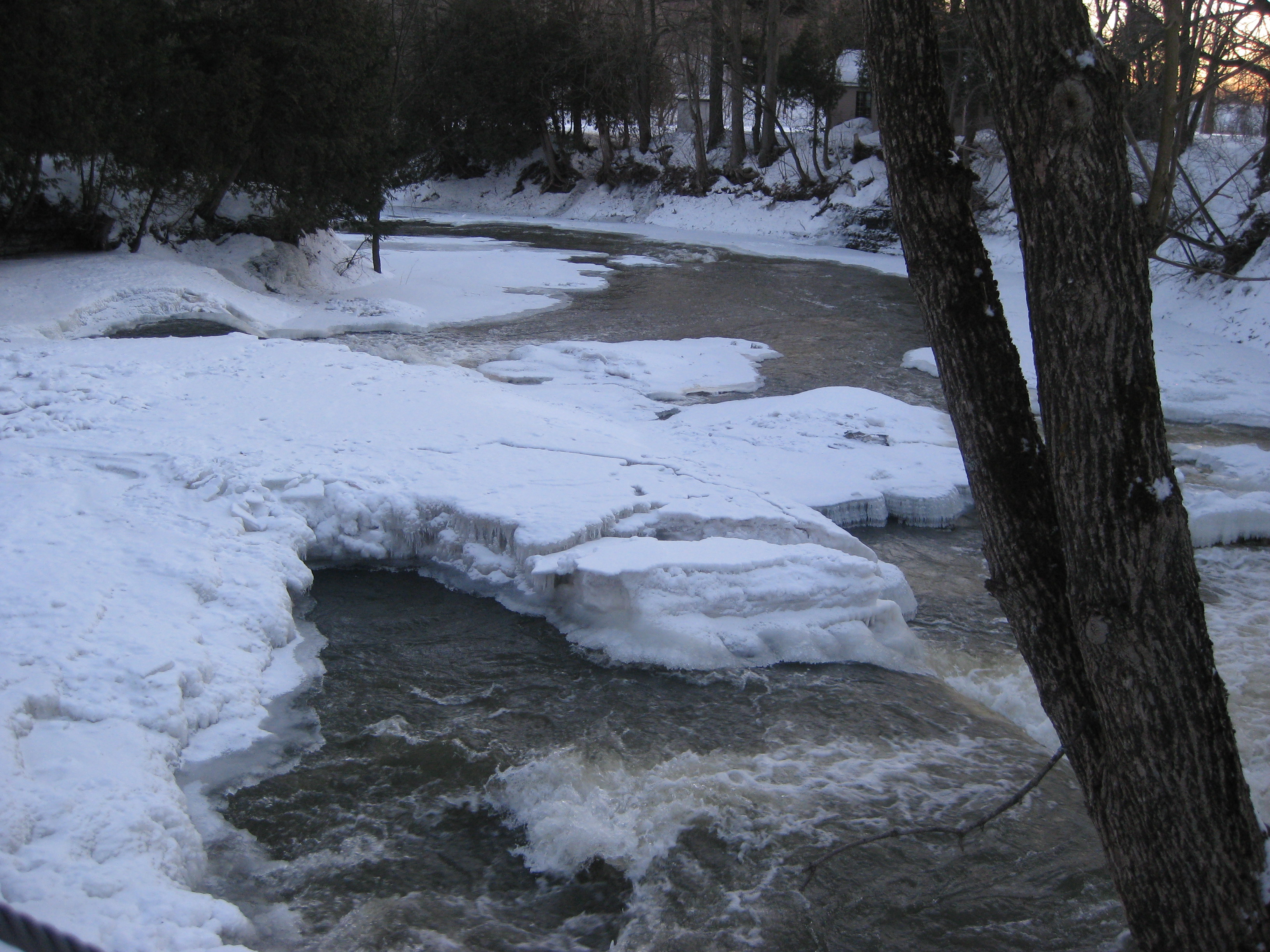 The view from my smoker (smoking my duck)I’m doubly inspired to share one of my favourite quotes with you..
The view from my smoker (smoking my duck)I’m doubly inspired to share one of my favourite quotes with you..
For all the winter haters out there, I’m tired of hearing you whine. Get out there and enjoy it! Soak up some of that bright sunshine, put on a pair of snowshoes or skis, play in the snow, and relish how sweet the crisp, fresh air feels.. Spend time in the kitchen cooking comforting dishes; share a hearty wine-soaked meal with friends next to a fireplace. Visit a Nordic spa. Snuggle up on the couch and read a book. Like ‘The Kitchen Daughter’ (a novel I loved). Root through your bookshelf and you're sure to find a long lost treasure such as my latest retrouvaille, ‘The Great Chefs of France’. Pick up a glossy, inspiring cookbook such as Jerusalem, Toque, Joe Beef or anything by Thomas Keller. Maybe some heartwarming foodwriting (Ruth Reichl), stimulating (Taras Grescoe) or laugh out loud (Jeffrey Steingarden). Or how about one of those 'Canada Reads' picks..
I love winter for all those reasons, and also because my cooking takes on a different tone, the kind of food that only feels right at this time of year. Less inspired by all the fresh and local produce, it’s more about going back to the classics and creatively using inventory, making the most of my preserves. There is less green crunch and more duck fat. I dip into my freezers, reorganizing them. I spend time admiring my gardemanger as I pull out a jar of pickled beans, smoked shrooms or crinkleroot canned tomatoes, enjoying all that hard work of putting up in summer. With a lot more time alone in the kitchen too, I have time to take stock, to look back and think ahead, to play catch up – be it with cleaning, operation details or recipes. To work on new and parallel projects – like my blossoming apothecary!
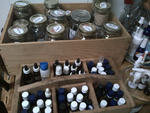 a glimpse of my witchery: medicinal plants, essential oils
a glimpse of my witchery: medicinal plants, essential oils
Back to the second trigger for the Henry David Thoreau quote..
Another annoying thing that has occasionally interfered with my good winter mood is all the premature maple talk, which seems to have started right after Christmas – in the media, themed dinners and events all over. Granted, there is nothing wrong with celebrating one of our national treasures anytime if it makes you happy. Rather, it’s the undercurrent relentless rush to 'the next thing' permeating our culture that bothers me. Perhaps led by journalists and wannabe trendsetters who need to be the first to showcase what is new and hip.. Definitely, there is the commercial machine wanting to cash in on Valentine fervour as soon as the X-mas trees are down and on Easter bunnies as of Feb.14th. Go to a boutique in winter and you only find summer clothes – this has always baffled me. And local ‘market cuisine’ restaurant menus that follow someone else’s seasons?!!
Why can’t we just savour the moment and take things as they come really. Like enjoy winter now and get excited about maple syrup when the sap is running in earnest in a month or so. Next thing it will be morels, peas and asparagus on menus, magazine covers and blogs two months in advance.
Trust me, following our own seasons tastes better. And every season is beautiful if you take it in, pay attention and live it fully. If there’s anything I’ve learnt living and cooking on the wild side in the country, it is this and I’m happy for it.
For myself anyway, I honestly cannot be inspired on an artificial timeline; I don’t ‘feel it’ until it’s in the air. I have a hard time putting out a menu in advance, yet from a business point of view, I have realized I have no choice. I still wait until the last appropriate minute and inevitably make changes when the day arrives so that it absolutely rings true. With a job/vocation fuelled by passion, integrity, and so much blood, sweat & tears, I just couldn’t have it any other way. Besides, I just love the seasons, I don’t want to be thinking about the next one until it’s time, life is too short.. It would feel like a betrayal. Maybe it is my way of staying grounded and paying tribute to nature and ‘God’ and all my blessings..
So, in the dinosaur spirit of hanging on to the moment, I will be cooking my Wild & Aphrodisiac Valentine’s menu until Sat. Feb.23rd, and then we close in March (at La Table, not the market), a break to take advantage of winter’s end and regroup. And when the maple season is actually peaking and we have fresh sap and syrup, we will start again with a wild maple themed menu!
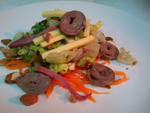 duck heart salad with duck egg, smoked duck, carrot, pickled mushrooms, wild mushroom vinaigrette
duck heart salad with duck egg, smoked duck, carrot, pickled mushrooms, wild mushroom vinaigrette
Duck, duck.. And Recipes
I just love my duck
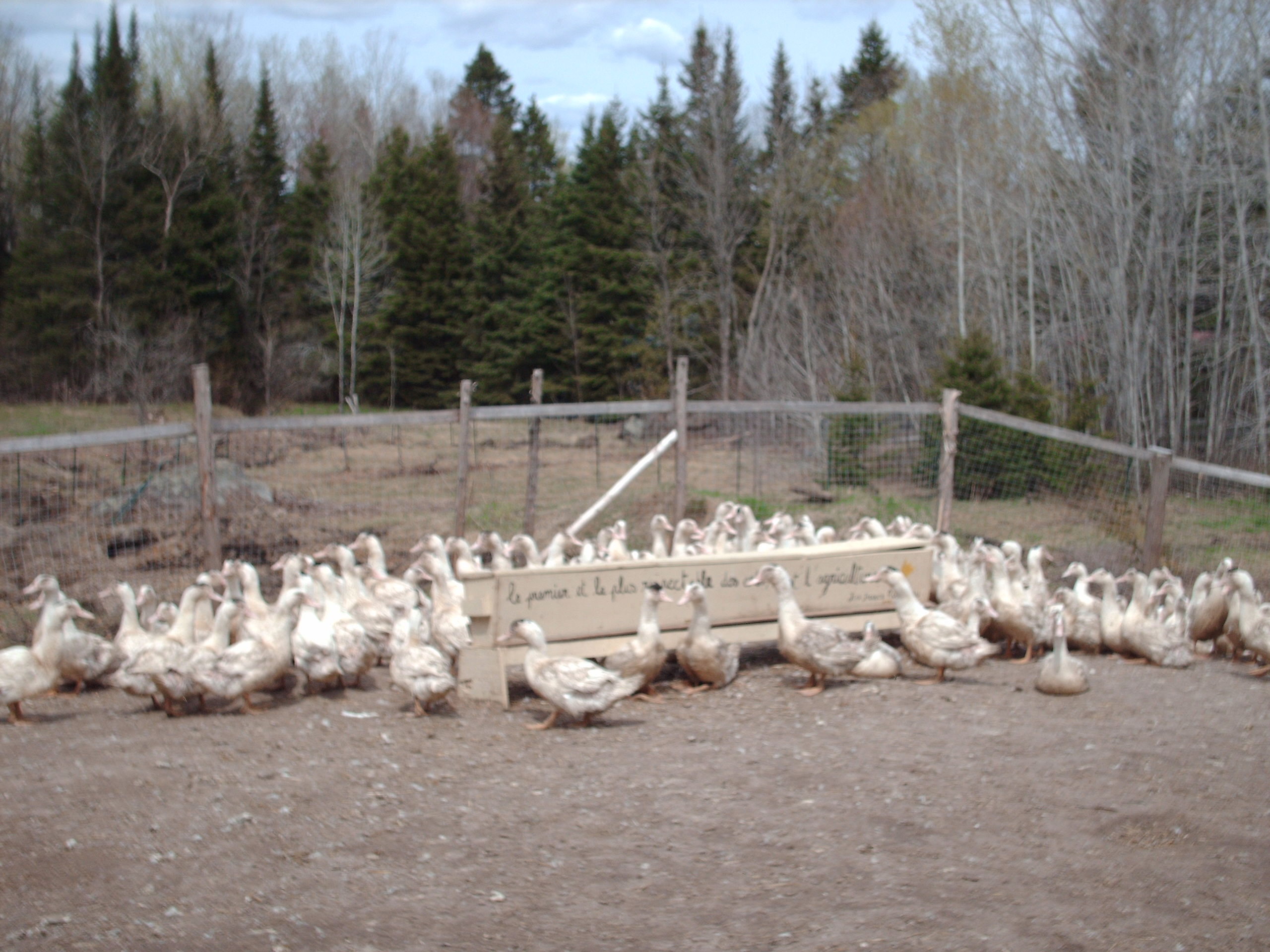 Moulard ducks
Moulard ducks
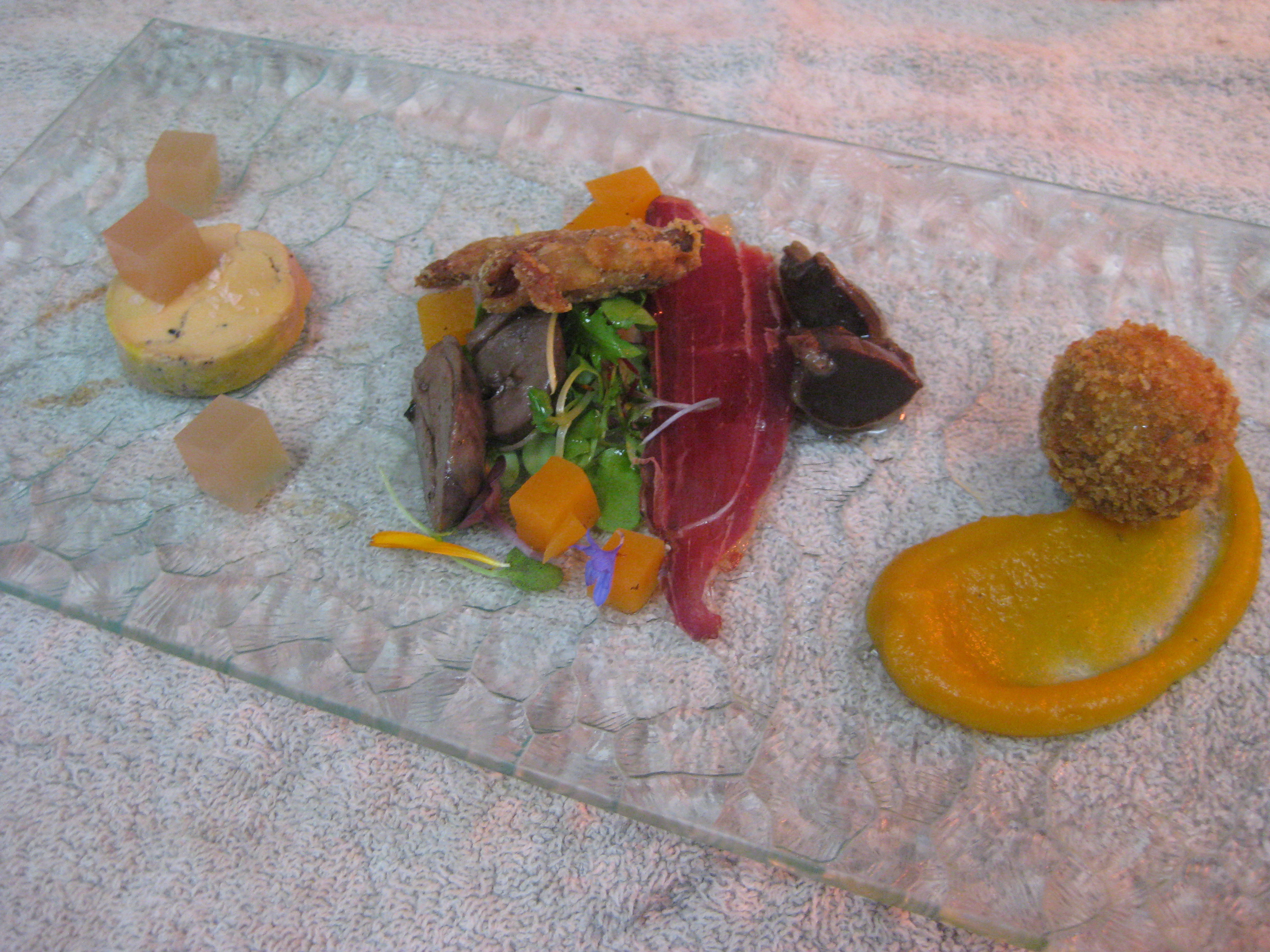
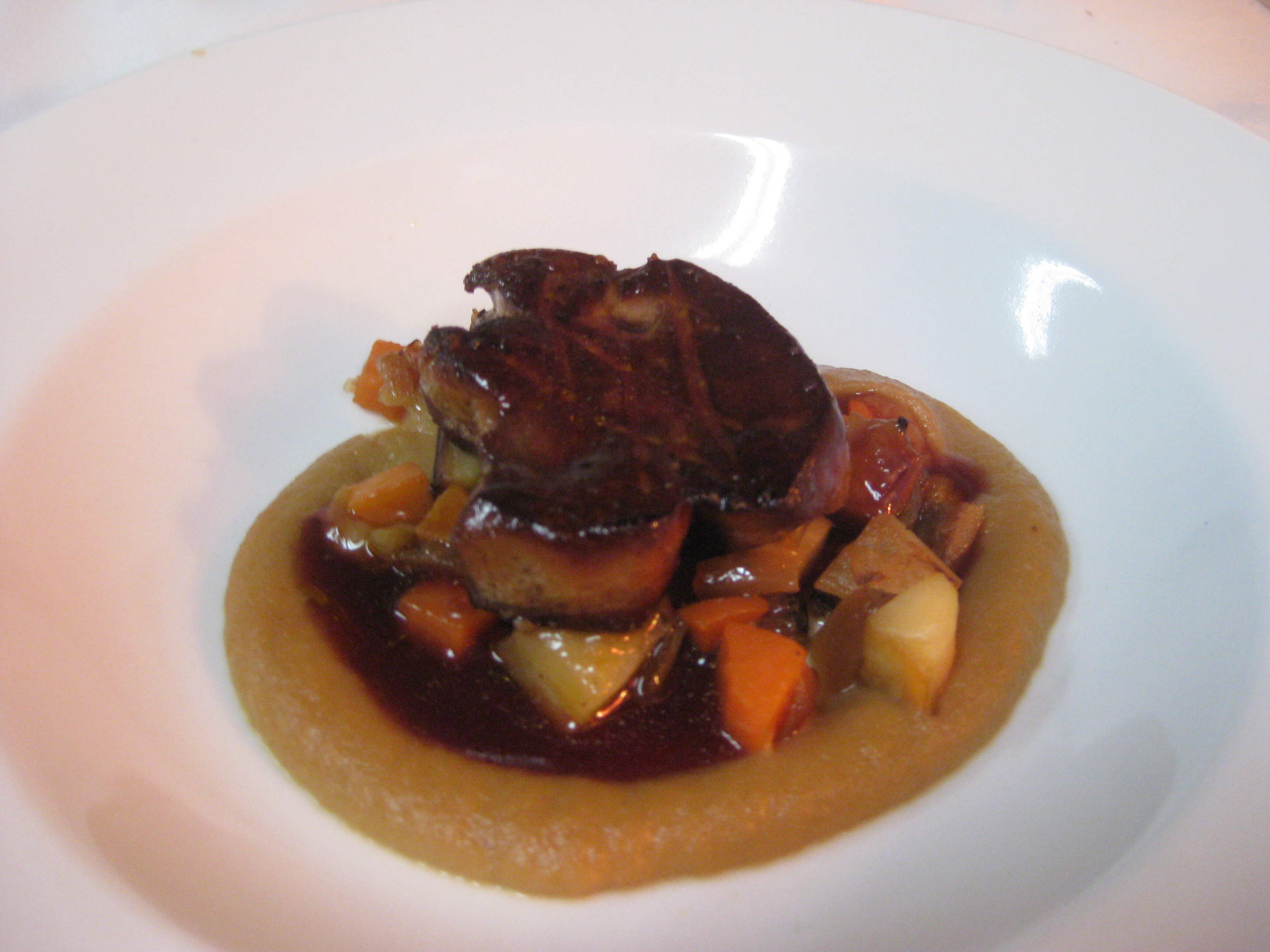 Pan-seared foie gras with elderberry/flower sauce, topinambour soubiseDuck is a winter tradition of ours, and it’s that time again. No matter that I inhaled my share of duck fumes, cooking up an insane amount of duck during the holiday season, I have a few more weeks yet of bathing in duck fat with our duck themed dinners running at the table champêtre.. Duck menu at Les Jardins Sauvages
Pan-seared foie gras with elderberry/flower sauce, topinambour soubiseDuck is a winter tradition of ours, and it’s that time again. No matter that I inhaled my share of duck fumes, cooking up an insane amount of duck during the holiday season, I have a few more weeks yet of bathing in duck fat with our duck themed dinners running at the table champêtre.. Duck menu at Les Jardins Sauvages
But really, I don’t mind; duck is hard to tire of. It is hands down the best meat, so flavourful and versatile in its many forms, not to mention local, healthy and relatively easy to cook. Susan Semenak makes a case for duck (with my help) in this Montreal Gazette article..
Every year, I change up the seven course menu, playing with four breeds and all their parts, the eggs, the skin, broth etc.. And the marvellous fat of course.. Duck fat is my all-purpose cooking fat in winter, rendered from the carcasses and skin. I like to smoke it too, to have a block ready on hand for introducing that ‘bacon’ taste when you don't want the pigginess.
For sure, there are standards that come back every year or two but always treated differently. For instance duck confit has to be present, but it might be as rillettes, in a salad, in cassoulet or choucroute, say.. Charcuterie (duck proscuito, smoked duck, jerky, sausage) as well as Foie gras, hot and cold are always featured, but with various seasonings and accompaniments.
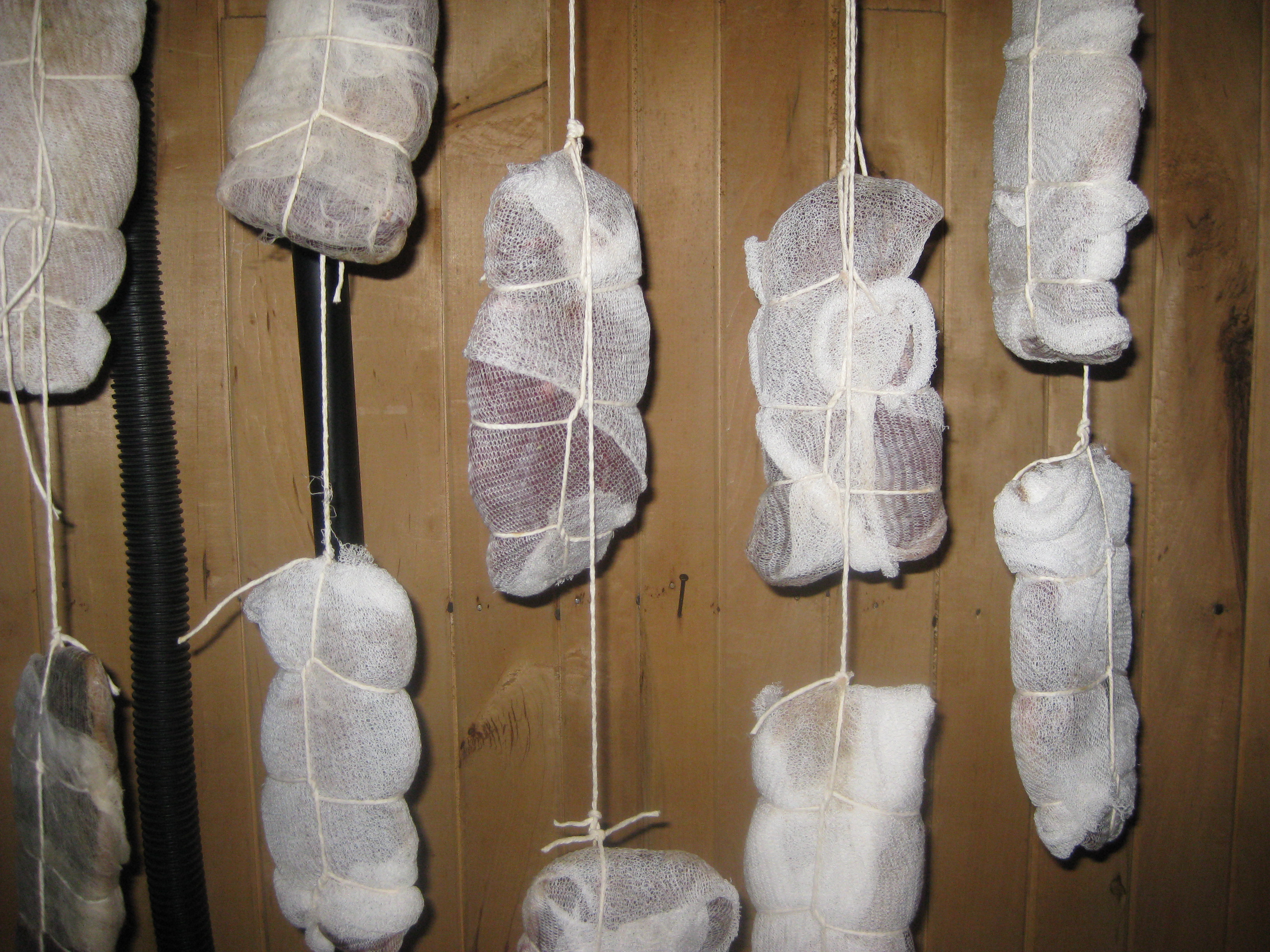 duck proscuito
duck proscuito
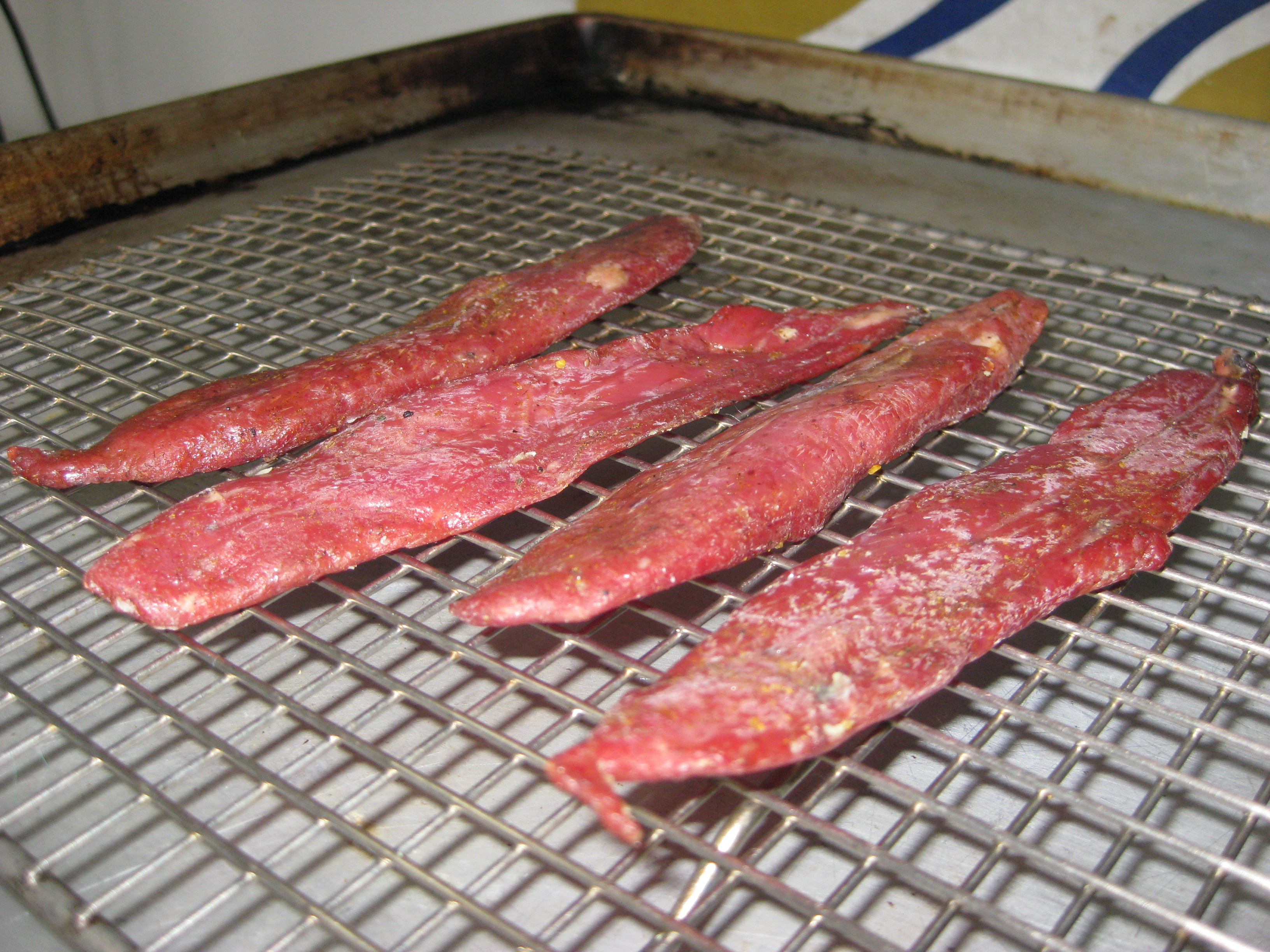 duck jerky
duck jerky
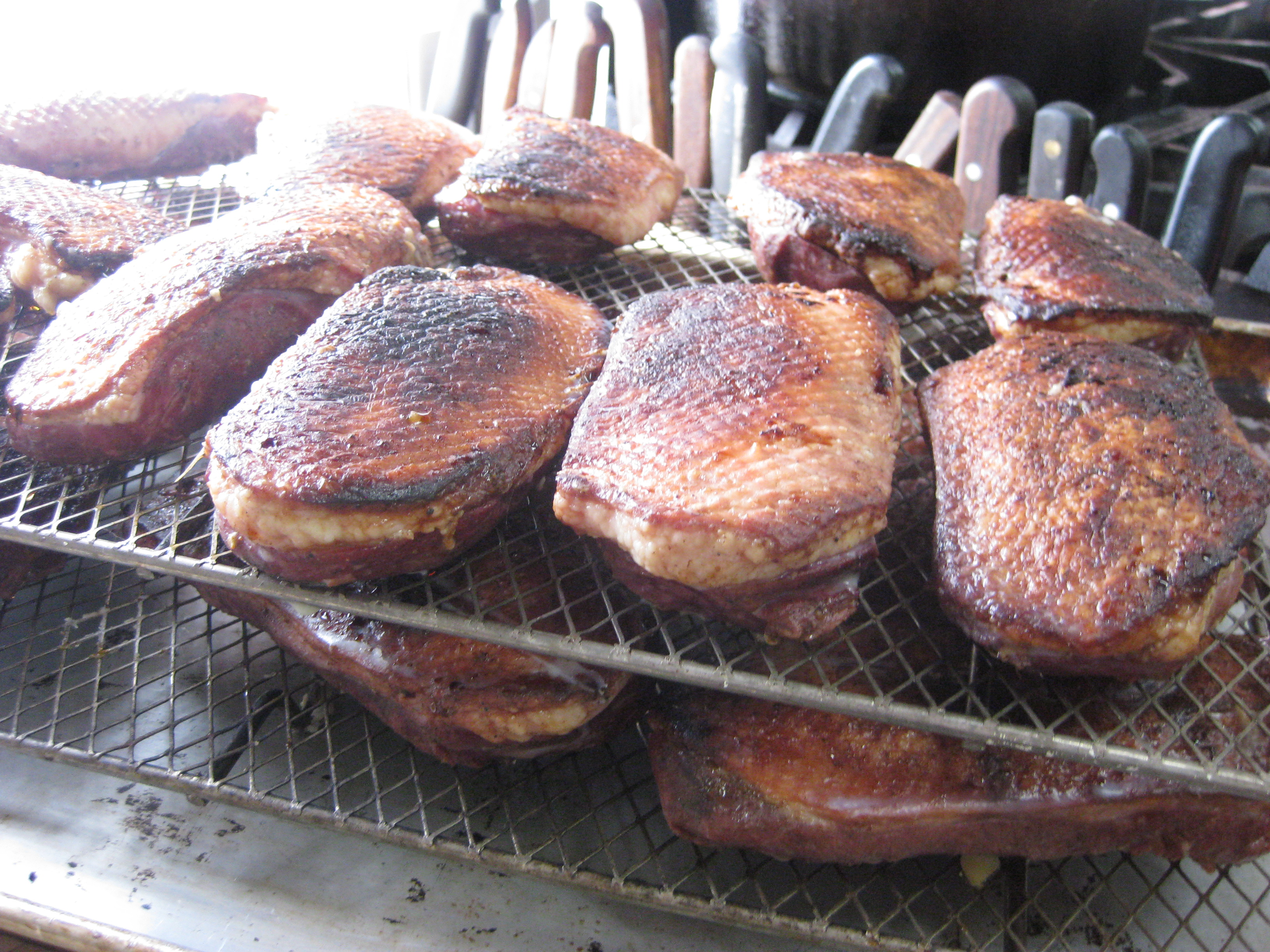 smoked duck my way, cooked not raw
smoked duck my way, cooked not raw
Soup wise, I can’t help but feel the need to go with a consommé, which is pure essence of duck. Duck broth is my base of choice (instead of chicken) year round and makes a great creamy soup or vegetable purée type as well, but I just love consommé; the extra steps are worth it. I clarify the duck stock with more duck (ground) and duck egg whites(keeping the yolks for the garnish or dessert, adding aromates of choice to the clarification raft. This time around it will be surprise, surprise – wild mushrooms!
 duck consommé with duck egg and sea spinach, sumac
duck consommé with duck egg and sea spinach, sumac
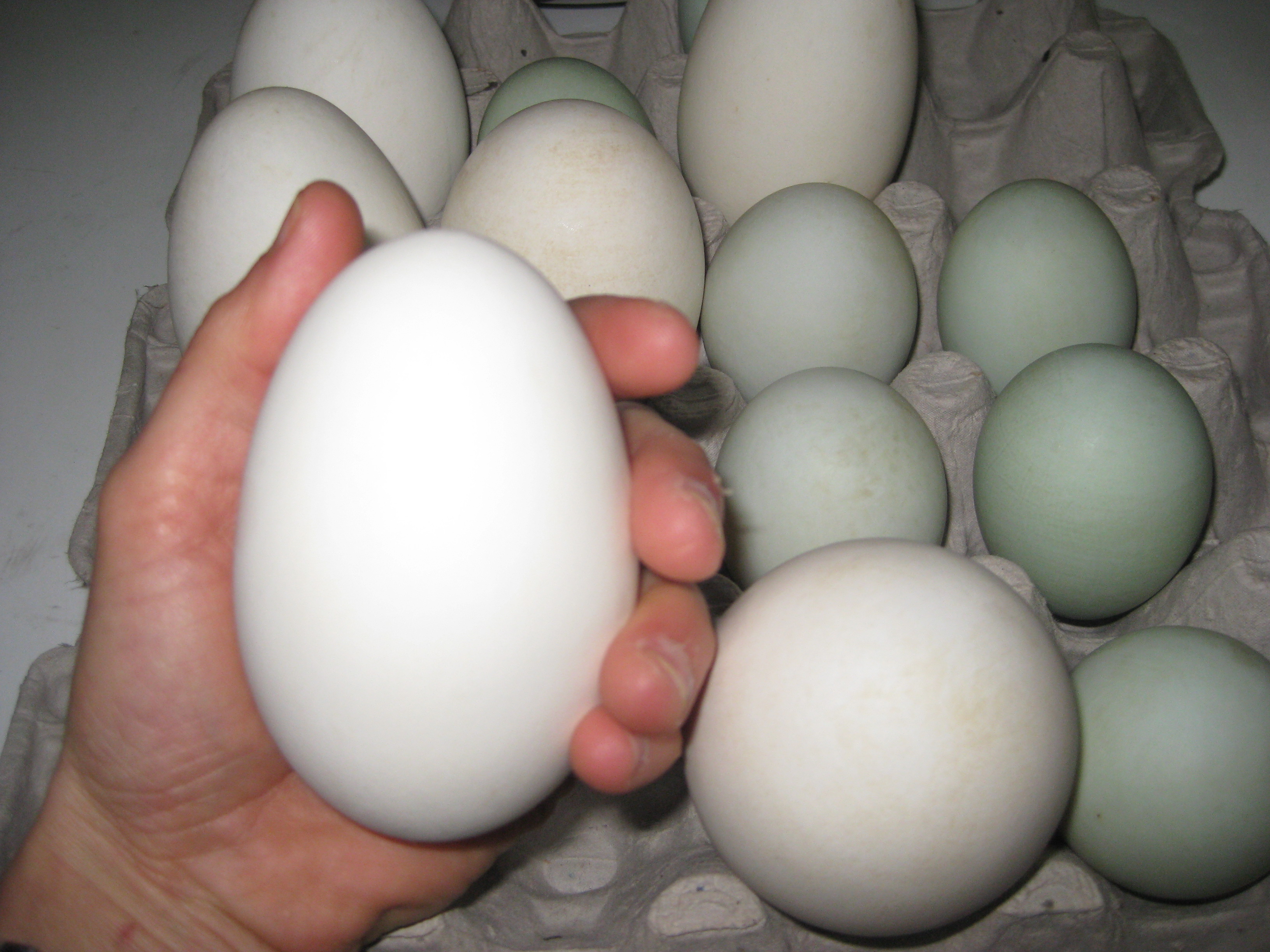 duck eggs
duck eggs
I used to put a whole duck egg on the menu as a second or third entrée - shirred, baked or poached - so delicious and appreciated by most customers but it is a bit much at 80-100g, like 2 chicken eggs.. In the last few years, I have favoured using egg as a component, going with a frittata, tortilla, egg crepe or an egg garnish.. This way the poor customer has a better chance of making it to the end. This year’s egg ‘noodle’ originated from a kind of accident turned experiment. One day, I had an excess of egg yolks so froze them and saw that they turned opaque, almost half cooked. Intrigued by this egg paste, I incorporated some fat and flavour (easily emulsified) and cooked up the cake sousvide/in a bain marie and loved the silky terrine results. A myriad of possibilities opened up: carpaccio, sheets, terrine, skin, slivers, and noodles!
Obviously, there has to be a ducky salad of some kind on any night, as close to a signature I get in my relentless motion. A classic at the restaurant anytime of year is the duck heart and gizzard salad, but it was time to give it a rest. François loves Caesar. If the rest of the menu isn’t too heavy, I can swing it, replacing bacon with my house smoked duck, using some of the duck yolks from before in the dressing, kick it up with crinkleroot and cook the croutons in duck fat.. switch up the capers for pickled daisy buds.
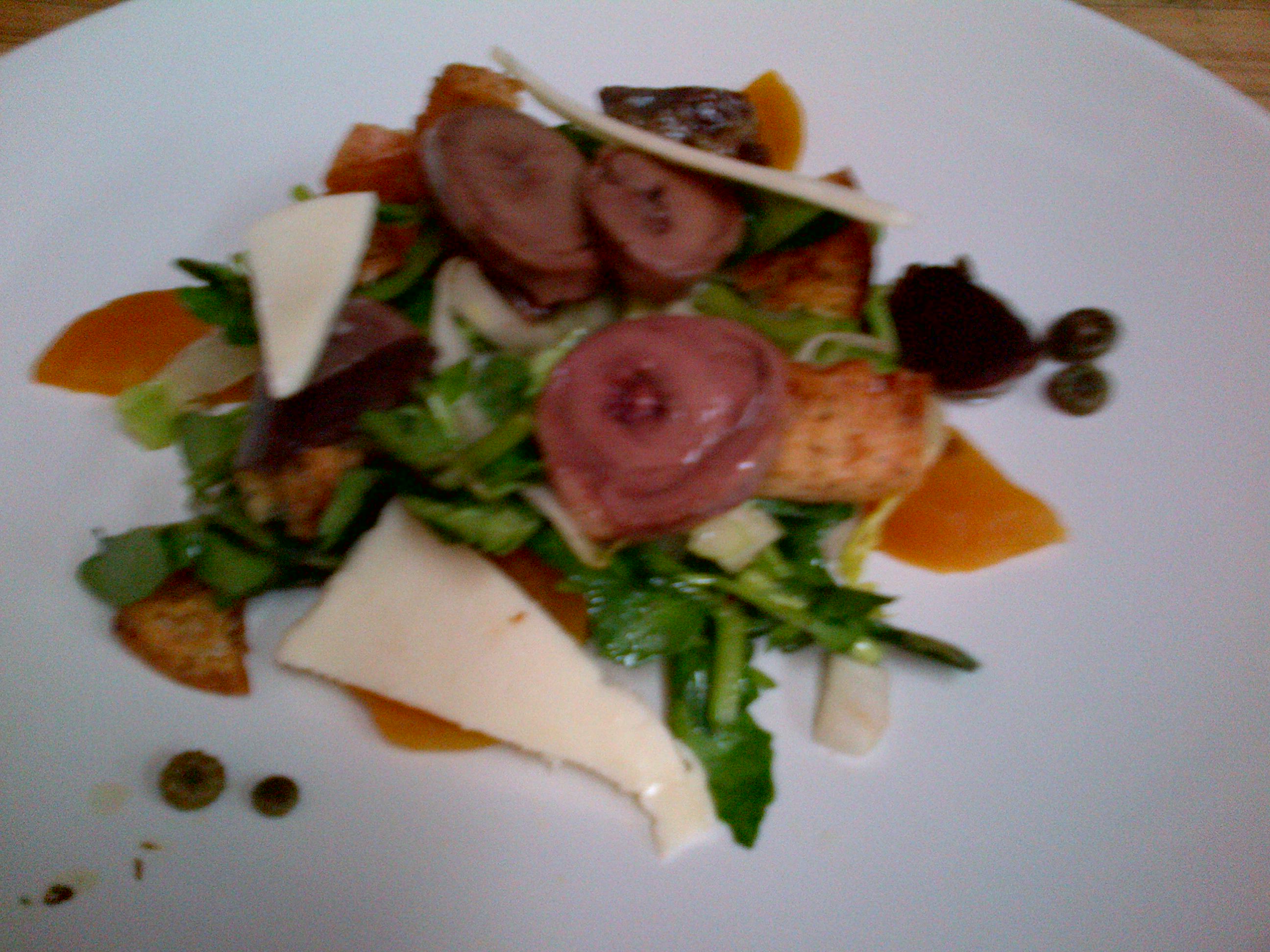
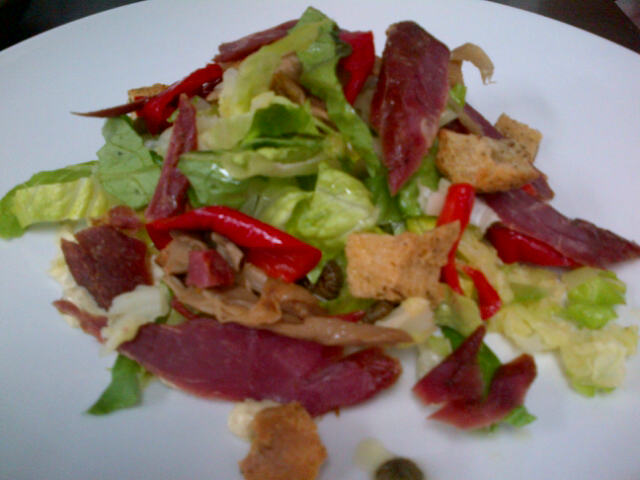
I’m done with cassoulet for a while, but now choucroute is my coup de Coeur of ducky winter dishes, including the incontournable confit and homemade duck sausage. Besides, I love cabbage and I’m into fermentation ever since my killer green beans from two summers ago.. As with proscuito, fermenting things is more conveniently a winter project when the room temp is easier to control and I have time to be patient and play around.. I haven’t had much success yet with cabbage, but I’ll get there..
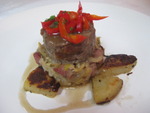 mini choucroute: confit, saucisse maison de canard, choux & genièvre
mini choucroute: confit, saucisse maison de canard, choux & genièvre
I felt like doing a fried chicken type of entrée for a change, or maybe something like ‘General Tao’ -any thing fried being a crowd pleaser. I’m constantly looking for novel ways beyond jerky to put the filets that I remove from the breast.to good use. And since duck is such a natural with ‘asian’ flavourings like soy, ginger, anise etc, there needs to be at least one course that goes in that direction. The duck fingers with wild ginger sauce below (or nuggets as Melinda coined them) was the result – and a staff favourite so far..
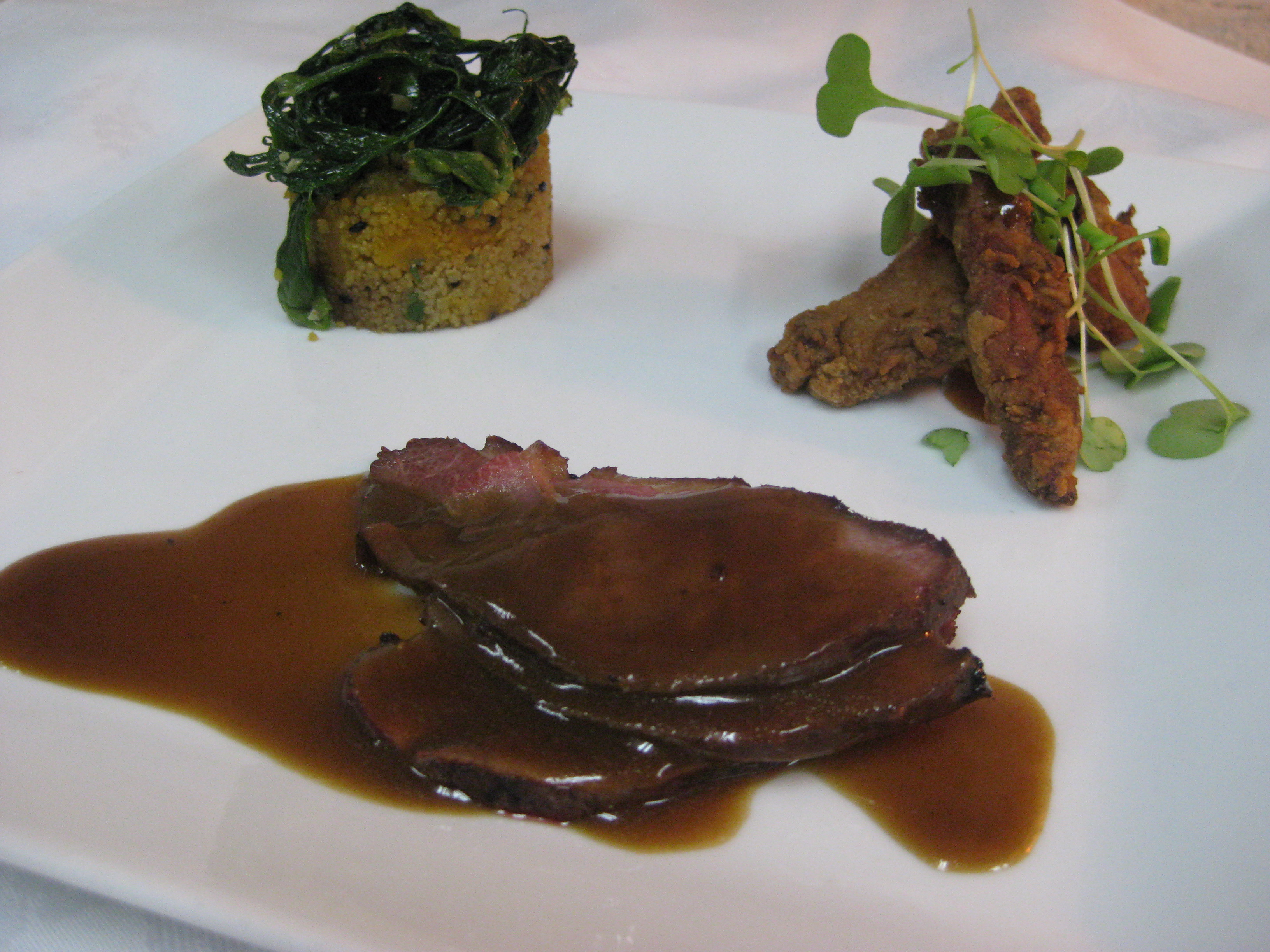 Muscovy duck supreme and fried duck fingers with wild ginger sauce, salsfis sprouts and sesame couscous
Muscovy duck supreme and fried duck fingers with wild ginger sauce, salsfis sprouts and sesame couscous
Besides a Ferme Morgan’s supreme pan-roasted with a fruity-spicy sauce of some sort, definite musts on the menu, too decadent and delicious to pass on, are duck fat potatoes and the cracklings made from the skin. I once served these as an amuse with the aperitif, bad idea! Everyone ate way too many of them. That’s another preferred snack among the waitresses that I have to keep an eye on, ‘Ca goutte le ciel, as Julie says.
To wind down the feast, there are inevitably duck egg desserts; one using the luxurious yolks, the other riffing on the springy whites. Watch out, these protein-rich whites make a surprisingly airy meringue!


As you can see, the possibilities with duck are endless. And with this cold weather, duck is just what the doctor ordered.
Here are some easy recipes (below) in case you are inspired to cook up some of this local-heart healthy meat over the winter.
Now that many duck products are quite widely available – duck stock, duck fat, confit duck, smoked duck etc.., there is no need for you to get into tricky stuff like charcuterie, making consommé, rendering fat even how to confit duck legs or making stock to enjoy a gourmet meal. It’s ok if you leave that time-consuming, messy stuff to us - the producers, chefs and butchers, the duck store (Le Canard Libéré on St-Laurent)..
Of course, you can always go all out and treat yourself to the ultimate ‘duck’ experience at Les Jardins Sauvages! Until February 3rd..
Duck recipes
Duck confit salad with ‘chimichurri’
6 p
Ingredients
3L wild/mixed greens (or romaine, watercress, endive)
400g cooked confit duck gizzards and hearts (or confit duck leg meat)
100g smoked duck magret, julienne
300g (1) potato (cubes)
250ml duck fat
120ml vinaigrette ‘chimichurri’ sauvage (spicy garlic and wild herb vinaigrette)*
100ml pickled mushrooms
2 scallions, chopped
au goût mushroom salt (or sea salt) & pepper
Method :
Heat duck fat in sturdy pot and add potato; cook gently on stovetop or in oven for 30min. Drain, season and finish in oven on baking sheet to crisp up.
Prepare greens (wash and dry, tear or chop).
Reheat the gizzards in some duck fat gently, or if in a vacuum pack, by submerging it in hot water 5min.
Toss the greens with scallions and half the vinaigrette, adding more vinaigrette and seasoning to taste.
Serve warm gizzards and potatoes on top. Garnish with smoked duck and pickled mushrooms.
*A garlicky red wine vinaigrette I make (and we sell) with wild garlic, chilli and a bunch of wild herbs (sea parsley, lovage, crinkleroot, garlic mustard leaf, bee balm..); could be replaced with any punchy vinaigrette that is sharp and slightly sweet with added herbs and garlic.
Duck Caesar salad with crinkleroot
6 p
Ingredients
3L wild/mixed greens (romaine, endive, watercress)
100g smoked duck magret, julienne
2c day old bread (cubes)
60ml duck fat
wild herb salt (or sea salt)
chopped herbs of choice
100g Capra or aged cheese of choice (that grates well)
2 scallions, chopped
20ml pickled daisy buds or capers
Crinkleroot Caesar dressing:
2tsp each minced garlic and crinkleroot
50ml minced anchovy (3-4)
3 egg yolks
1tsp crinkleroot mustard or Dijon
30ml white wine vinegar/lemon juice
30ml pickled daisy buds
60ml grapeseed oil
60ml EVO
salt, pepper
Tabasco, Worchestershire
Extra lemon to taste
Make croutons by tossing bread in rendered duck fat, season with salt and dried herbs, cook in oven at 350F for 15-20min or until golden and crunchy.
Make vinaigrette by mixing ingredients in a blender. Or combine yolks, garlic and mustard, half of lemon juice and slowly whisk in grapeseed oil. Add rest of lemon juice and continue with olive oil. Thin with a touch of oil or water to desired consistency. Season to taste.
Toss greens with half of vinaigrette, some of the cheese, s&p; adding more vinaigrette to taste. Plate salad and top with smoked duck, croutons and remaining cheese. Sprinkle extra daisy buds around.
Pan-seared duck supreme with elderberry/flower sauce
6 p
Ingredients
2 (1kg) duck supremes, skin side scored; filets kept for another use (Terrine, Jerky or Fried duck)
2 shallots, thinly sliced
thyme, peppercorn
20g butter
100ml honeywine or cider
500ml duck stock
250ml elderberries (or fruit/berry of choice, fresh or frozen)
10g (2Tbsp) elderflower (or peppercorn, juniper or rosemary)
s&p
cornstarch slurry
* In a sauce for duck, I like to combine something fruity and something spicy/herbal added later; instead of elderberry/flower combo, could be apple (1c chopped whole) and rosemary 2-3 sprigs, blackberry and juniper or raspberry and peppercorn...
Method:
Make sauce base: In a medium sauce pot, slowly caramelise shallots in a bit of butter/oil, add thyme and peppercorn and deglaze with wine, reduce down. Add duck stock and elderberries (or berry of choice). Simmer for at least 20min, allowing to reduce slowly. Add elderflower (or rosemary/juniper/herbs of choice) and let sit 5min. Strain.
Trim excess fat of duck supremes if necessary. With Muscovy, it isn’t necessary, but with Moulard or Pekin sometimes; you don’t want more than ½-1 cm/1/4”. So that there is some crispy but not too much flabby fat at end. Scoring with a knife helps the fat render/even cooking.
Heat sauté pan to med-high heat. Season duck supremes and add to pan skin side down (with no added fat). Once you start to see color, turn down to med or lower and cook for 8-10min. You want a slow caramelisation while rendering as much excess fat as possible. Pour off rendered fat a few times during the cooking. Flip and cook for 2-3min. Ideal is medium-rare. Rest in a warm place for 10min before slicing.
Degrease pan and pour in sauce base. Bring to a simmer season to taste, thicken to desired consistency with cornstarch slurry if desired (maybe 1Tbsp), swirl in butter.
Slice duck breast as thinly as possible against the grain of the meat, serve with sauce. Suggested accompaniments: Root vegetables, mushrooms, wild rice..
Duck jerky
6 p
Ingredients
8 (450g) duck filets (tenderloin) or one duck breast fat removed, sliced in 6x1.5cm thick strips
20g (1 Tbsp) brown sugar
5g (scant tsp) coarse salt
1g ea (generous pinch) pepper, smoked paprika, steak spice
.5g ea (small pinch) cumin, thyme, oregano
big squirt ea soy sauce/tamari
small squirt worchestershire
Method:
Toss with seasonings. Refrigerate overnight. Pat dry and put in a 200F on a rack in oven for 2hrs or until desired texture (dry and chewy, still sliceable).
Eat as a snack as is or slice up to garnish a salad, sandwich or canapé. Keep in fridge.
Baked duck egg with mushroom, smoked duck and tomato
6 p
Ingredients
6 duck eggs
30ml olive oil
200g wild mushrooms (or cultivated), chopped
2 french shallots, minced
15ml butter
s&p
drops lemon juice or cider vinegar/sherry vinegar
100ml heavy cream
5ml mushroom oil (and/or a few drops of truffle oil)
s&p
60g smoked duck, julienne
200ml chopped tomato
50ml chopped chives and/or parsley
pinch sugar, s&p, hot sauce
Method:
Sauté mushrooms in olive oil over medium-high heat for a couple of minutes; add butter and shallots, turn down to med/low and stew for 10 minutes; season.
Mix cream with mushroom oil (and/or a few drops of truffle oil), season.
Into buttered individual ramekins (4oz), divide mushroom mixture to cover bottom. Crack an egg into each one. Top with a tablespoon or two of cream mixture to cover.
Cook in a 325F oven for 15-20min until just set but still giggly.
Meanwhile prepare tomato salsa garnish. Add a pinch of sugar, salt and pepper to chopped tomato with fresh herbs and a bit of olive oil or mushroom oil, hot sauce to taste.
Serve ramekins of egg topped with salsa and smoked duck julienne.
Fried duck fingers with wild ginger sauce
6 p
Ingredients
12 duck filets
1/2c pastry flour (or half flour and cornstarch)
50ml plain yogurt
Marinade:
50ml soy sauce
50ml maple syrup
30ml lime juice
30ml wild ginger mustard
5ml toasted sesame oil
1tsp ea curry, five spice
hot pepper sauce (Sambal or Siracha)
Sauce:
2 shallots, thinly sliced
1tsp ea minced garlic, wild ginger
2c duck stock
2 sprigs thyme
1Tbsp± cornstarch slurry
30ml butter
Method:
Cut duck filets into 1” thick slivers (in 3).
Mix together marinade ingredients. Use half to season the duck filets, tossing to coat evenly with the yogurt.
Set aside for at least 20 min (or in the fridge hours or overnight).
Make sauce: slowly caramelise shallots in some butter. Add garlic and ginger, sauté a few minutes and add the rest of marinade. Deglaze with stock, reduce down by 1/3. Add thyme and coriander. Keep reducing another 5min to approximately half, tasting along the way. Rectify seasoning, use a little cornstarch slurry to thicken to desired consistency. To finish sauce, strain and swirl in butter off heat. Keep warm.
Pull duck from marinade, pat dry and coat with pastry flour. Fry duck by either deep frying at 350F for 2-3min or by pan-frying in a skillet with a good slick of hot vegetable or peanut oil for 3-4min (1-2 min each side). Remove onto paper towels, and serve with sauce. You can always coat the fried duck in sauce General Tao style but I prefer it separate.
Suggested accompaniments: rice, sautéed mushrooms and mustard greens, or rice noodles, lettuce, red pepper, bean sprouts, coriander and mint.. Could be finger food too!
Summer to Fall, Mother Nature and Mushrooms
Although there is no doubt that we’re still riding peak season at Les Jardins Sauvages, I guess it’s time to admit that the 'summer of summers' is now officially over..
 now, less of this
now, less of this  And more of this: cleaning & cooking mushrooms
And more of this: cleaning & cooking mushrooms
The season change notably creeps in before we’re ready, and the calendar date passes while we’re still in summer mode. It only feels real a week or two later.. When my soups get heartier and a hot app naturally replaces a salad on my menu. When bread making becomes more manageable and my chef jacket is a welcome layer on top of my camisole. When fresh wild flowers become hard to find for the table tops.. When there is more brown than green hitting my pantry. When my favourite spot outside the kitchen moves from the river (or terrasse) to next to fireside. Yup, time to shift modes, bundle up and focus on the mushrooms, maybe chop some wood.
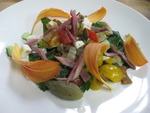 less of this: salad with wild greens and flower petals
less of this: salad with wild greens and flower petals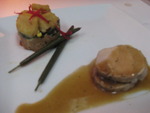 more of this: Piglet two ways, wilted wild greens and mushroom jus I do adore the seasons. I’m nonetheless always sorry to see one close, simultaneously feeling excited about the next one moving in, with all its novel spendour and contrasts, familiar comforts and certain surprises in store.
more of this: Piglet two ways, wilted wild greens and mushroom jus I do adore the seasons. I’m nonetheless always sorry to see one close, simultaneously feeling excited about the next one moving in, with all its novel spendour and contrasts, familiar comforts and certain surprises in store.
Looking back, summer 2012 was indeed beautiful, but! For sure, the lamest for wild edibles I’ve seen since I embarked on this adventure with François. No problem if you have all day/week and are foraging for your family dinner alone.. It was a struggle for anything green, not much better for the tasty toadstools. Only the tomatoes and peaches seemed to flourish. The non-wild revelation of the summer: these micro tomatoes François planted in our garden! (one of the original heirloom varieties from Mexico)
Thankfully, in certain regions like the Gaspesie and further north, there was enough rain and alternate sunny weather for decent wild harvests. It's a good thing that François has built a network of pickers across the province over the years, people he met on his travels and trained, or others - knowledgable kindred spirits he formed a partnership with.. To think back to the day when he had to be everywhere or miss out, living out of his truck and tent, picking everything himself!
In his primary foraging/family territory - the Outaouis and here in the Lanaudière, the blackberries dried before ripening, blueberries, and raspberries the same; the mushrooms were sparse. This was definitely not a chanterelle year, for instance. Normally, I cross the bridge and see mushrooms everywhere, not this year. We had to hunt far and wide. And when found, they were often piqué (worm infested) before anyone could get to them in numbers. The BC and foreign suppliers certainly did well on the Quebec market this year. Those seeking out local mushrooms were all over François and his team at Marché Jean Talon; we couldn’t keep up. Which also means I hardly got my fair share of summer varieties at the resto/workshop.
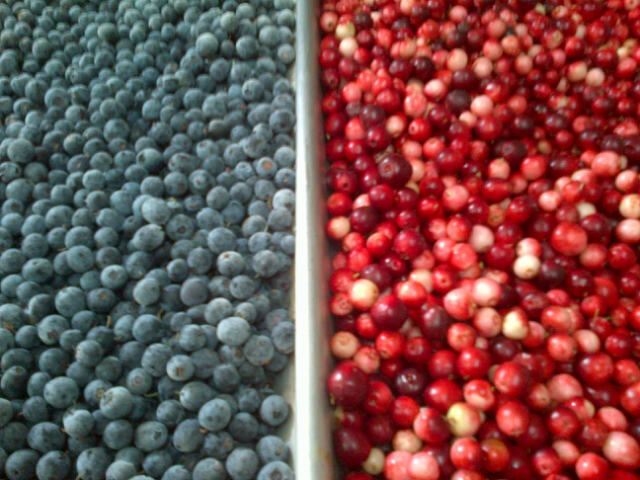 airelles de marécage/airelles (cote nord)
airelles de marécage/airelles (cote nord)
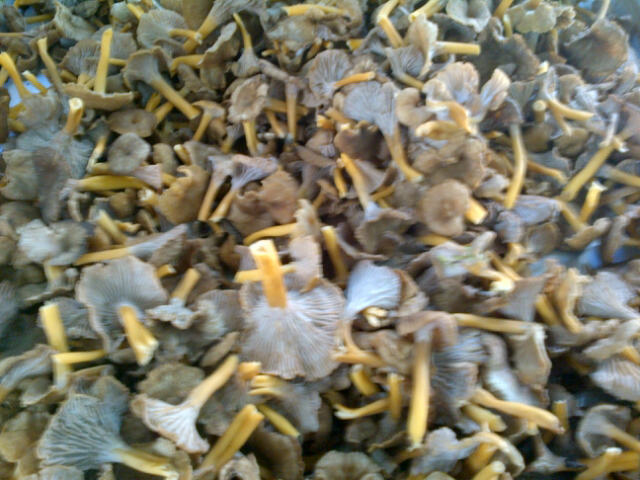 chanterelles en tubes/yellowfoot chanterelle beauties
chanterelles en tubes/yellowfoot chanterelle beauties  polypore soufré/chicken mushroom
polypore soufré/chicken mushroom
So, a thousand pounds in maybe, not counting what François sold at market. Last year, I had processed over a ton by now, 2 tons by Oct - be it cleaned and dehydrated, with a first cooking and sous-vide, or pickled, put up somehow. I’ve had an easy summer, hence the tan. Only working 50-60hr weeks on average, mother nature didn’t make as many of her extraordinary demands with regular relentless abundance in short spurts, less cross over. I got to deal with a couple of weeds/berries/greens at a time, usually keeping up despite my meagre staffing. We nailed all our basics from the pickled buds, cattails in all forms, sea parsely pesto and sousvide sea spinach, all the flowers/greens for the tisane and sirops, just enough berries for my jams/coulis/vinaigrettes etc. I managed to do quite a bit of preserves with the cultivated stuff too (peas, corn, tomatoes in many forms - ketchup, hot sauce, ratatouille..)
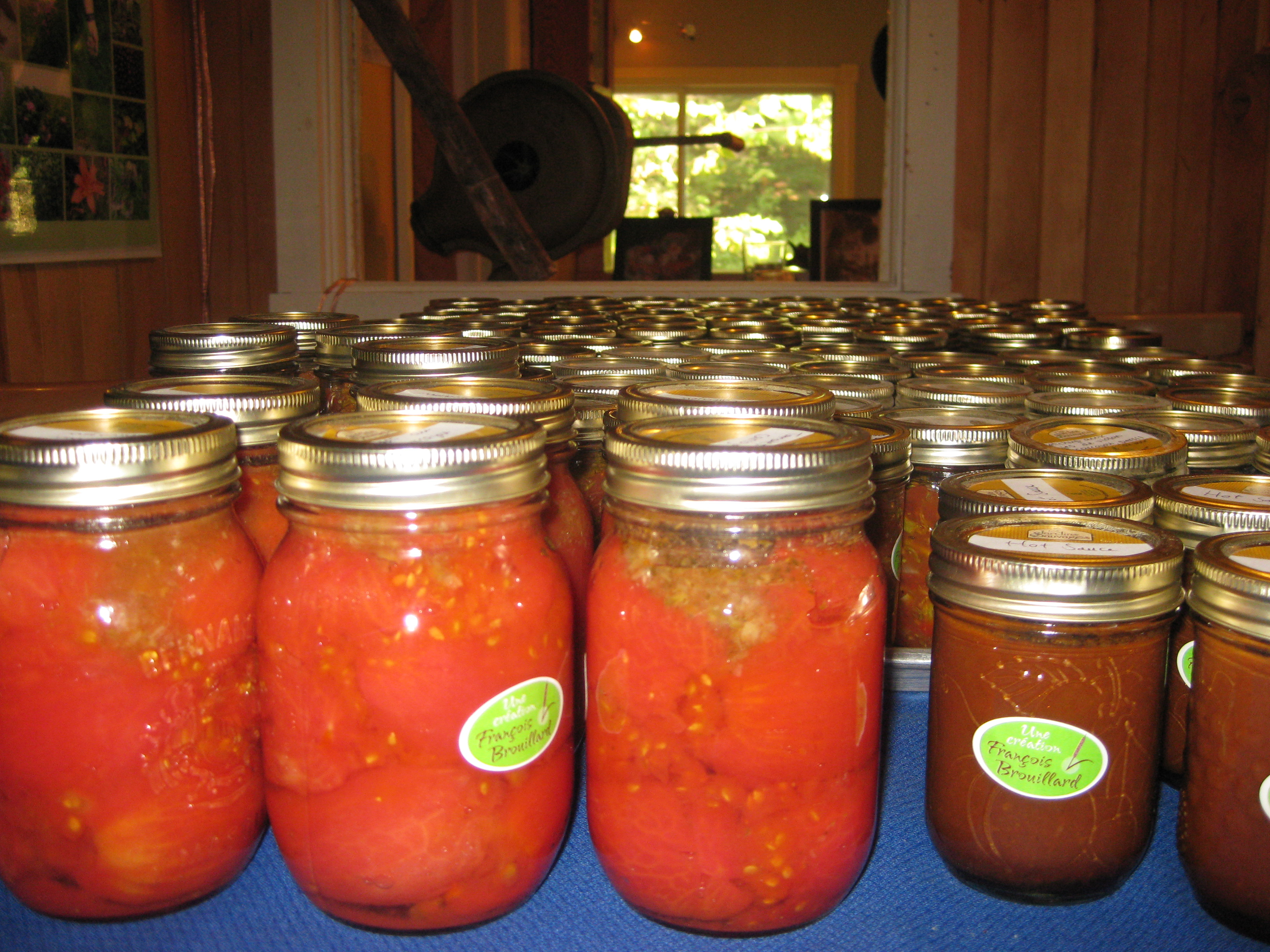
Not quite the mushroom nirvana I’ve grown accustomed to thanks to my forager of foragers, I couldn’t help but spend the last leg of the summer worrying.. Would I have enough for our monster mushroom festival and for all our products year-round? A constant juggling game, I would certainly have to regroup and make do with what I have, reconfigure our products, ditch label inventory $$, oh the joys of the wild life in business..
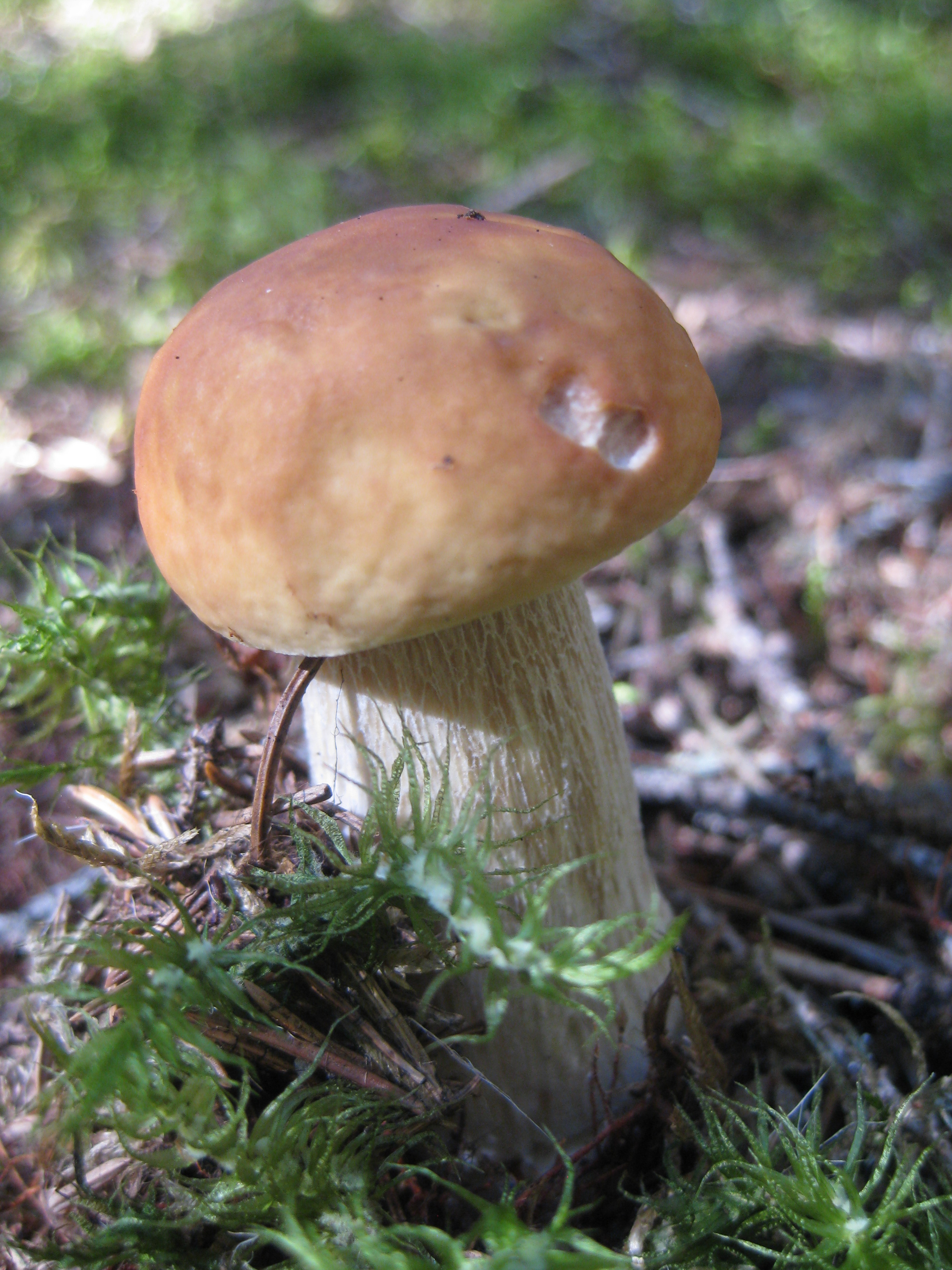 cepe
cepe 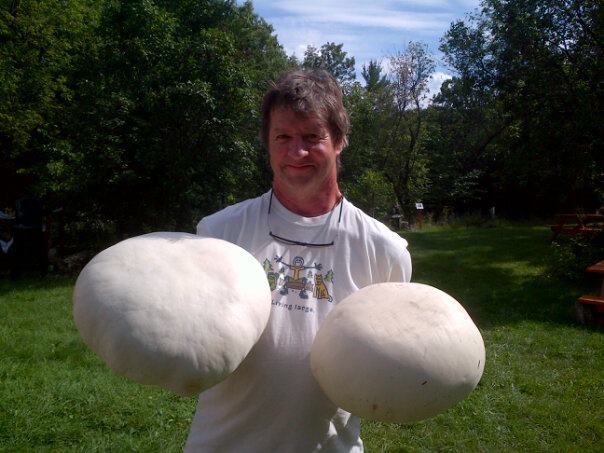
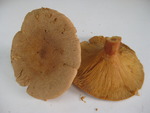 Lactaire à l'odeur d'érable/Maple scented lactarius
Lactaire à l'odeur d'érable/Maple scented lactarius
Then there was the most welcome surprise - a formidable harvest of Amanite des Césars, the king of mushrooms and a rarity here. Even in France, where it is prized above all varieties, it is a rare treat to see more than a pound, especially like these.. François definitely impressed some mushroom snobs this year in a bad mushroom year no less.. For our tenth anniversary, we will have this noble shroom on our mushroom menu for the first time.
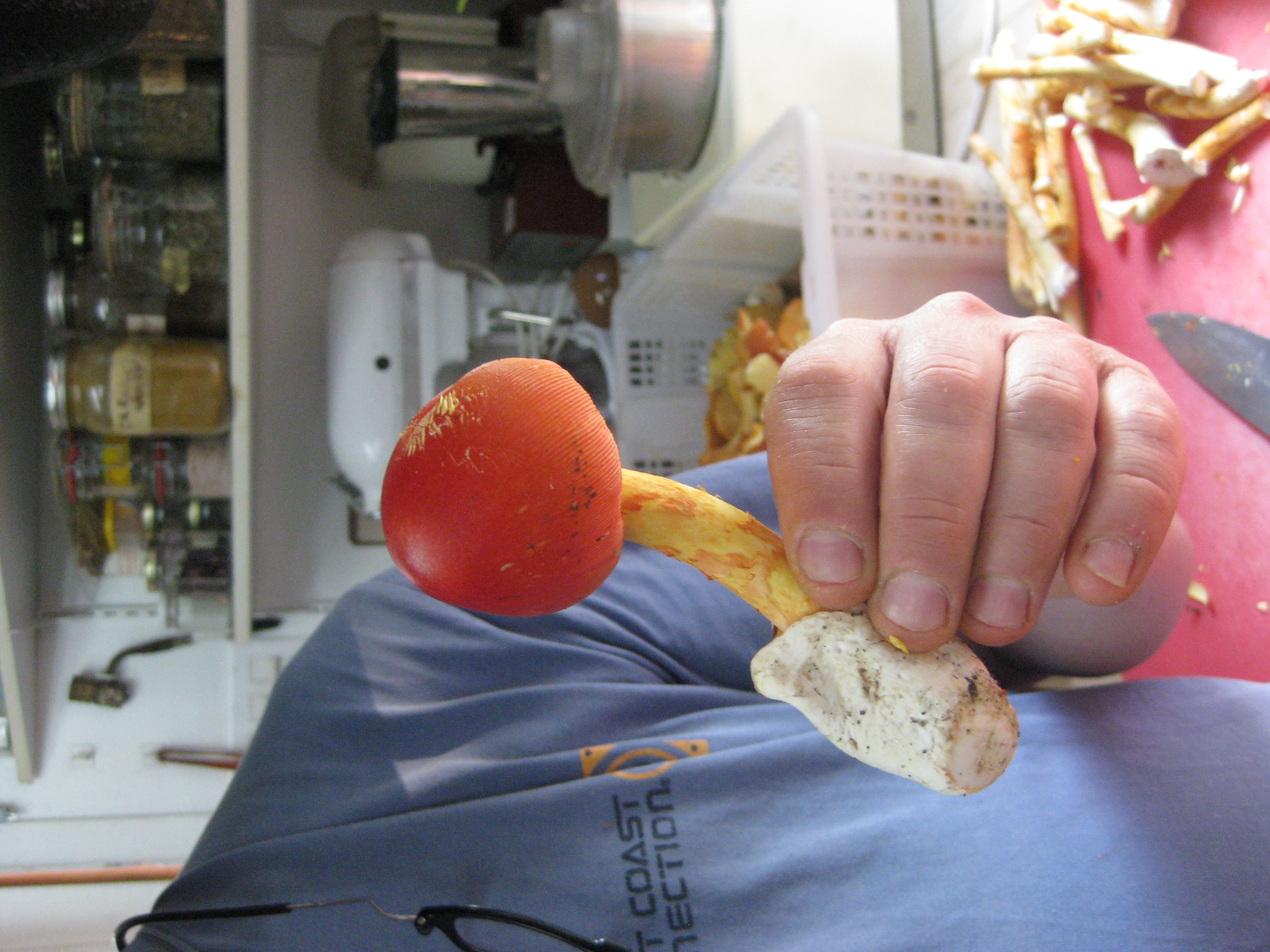 bebe amanite des césars
bebe amanite des césars
And there is hope yet across the board - this past week was fantastic, the best of the year yet. Cepes & Lactaires Délicieux are sprouting in the backyard. The shrooms are coming in from all our pickers at a faster pace by the day and I’m managing to cover with less staff than in prior years. We processed 200lb this weekend alone and there is a major line up for the dehydrator and my time. Gorgeous yellowfoot chanterelles and hedgehogs! Came across a good amount of a variety of small hedgehog (pied de mouton ombeliqué) that is a fun novelty. A pretty stellar year for that rare maple scented Lactarius too, probably not enough to sell but sufficient for my restaurant needs. A trickle of armilaires and matsutake, hoping for more.. Lactaires Delicieux, Puffballs and autumn cepes, slippery jacks and Larch boletes showing up on schedule here, weehoo. Some beefsteak polypore a bonus! The autumn oysters, smooth lepiota and shaggy mane will be next, fingers crossed.
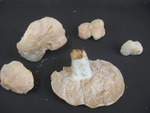 pied de mouton/hedgehog, nice harvest from Gaspesie getting better by the day
pied de mouton/hedgehog, nice harvest from Gaspesie getting better by the day
 pied de mouton ombeliqué
pied de mouton ombeliqué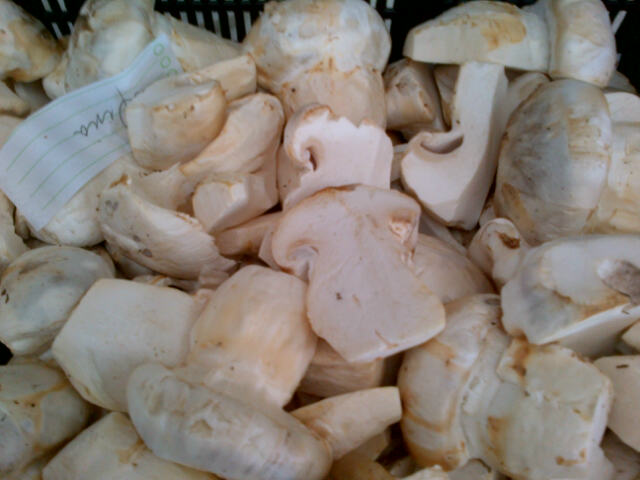 armillaire ventru/swollen stalked cat
armillaire ventru/swollen stalked cat
She just might catch up that tricky dame nature. And I will have no choice but to follow.. Which is fine; I am now used to responding to her whims, and it so happens that cooks looking for work appear to be coming out of the woodwork as they magically do in fall. Forever grateful even if I have to scramble and go into overdrive this autumn season. Let a new set of games begin! Countdown to our mushroom festival Oct 12-28!
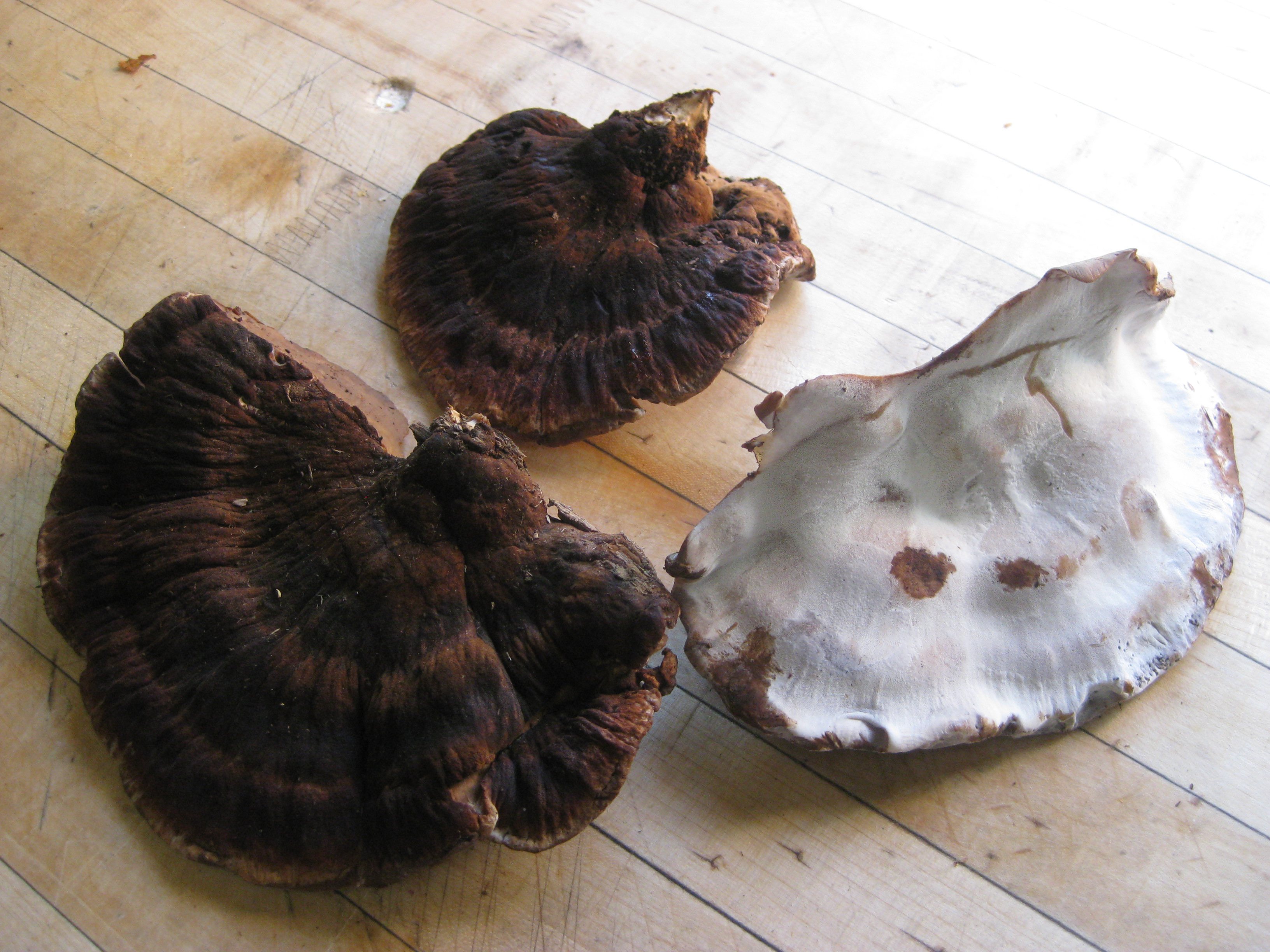 Beefsteak Polypore
Beefsteak Polypore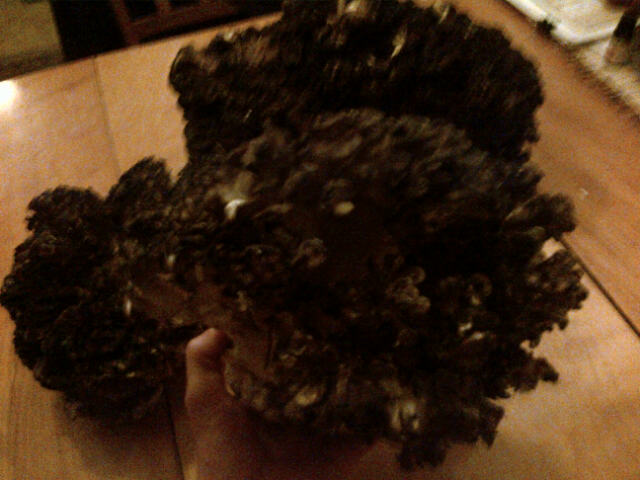 Hen of the woods, a favourite for a braise or to pickle
Hen of the woods, a favourite for a braise or to pickle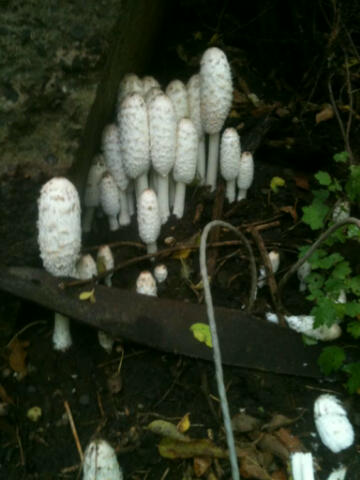 shaggy mane; best when young (same day), no dark color - in soup
shaggy mane; best when young (same day), no dark color - in soup  autumn oyster (or elm oyster; although it grows on maple)
autumn oyster (or elm oyster; although it grows on maple)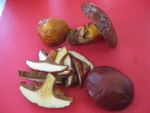 another slimy/hard to work bolet that pays off in the dehydrator
another slimy/hard to work bolet that pays off in the dehydrator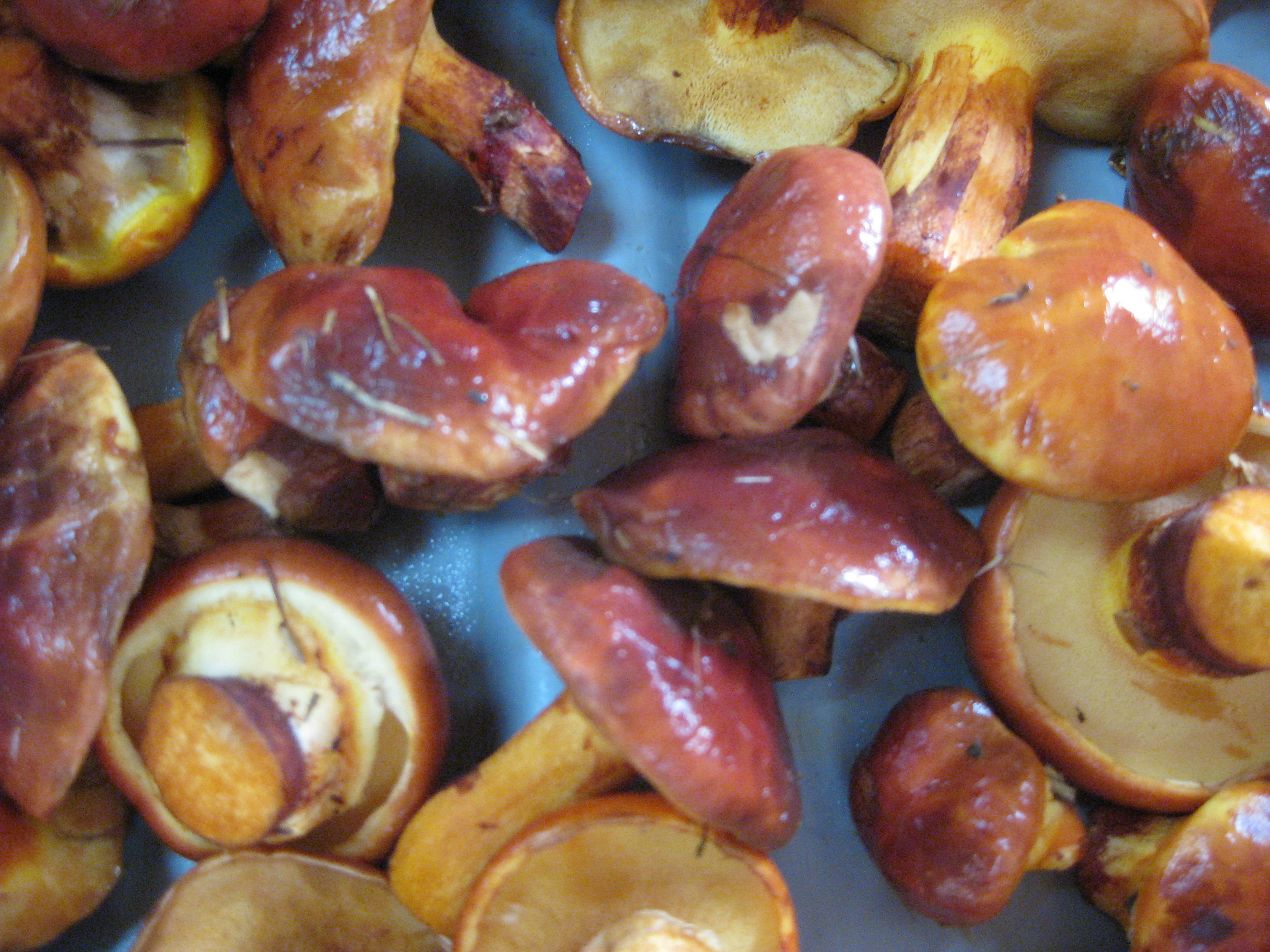 Larch bolete - one of the best flavourwise but it's a pain to clean (and expensive with 5% yield after drying).
Larch bolete - one of the best flavourwise but it's a pain to clean (and expensive with 5% yield after drying).
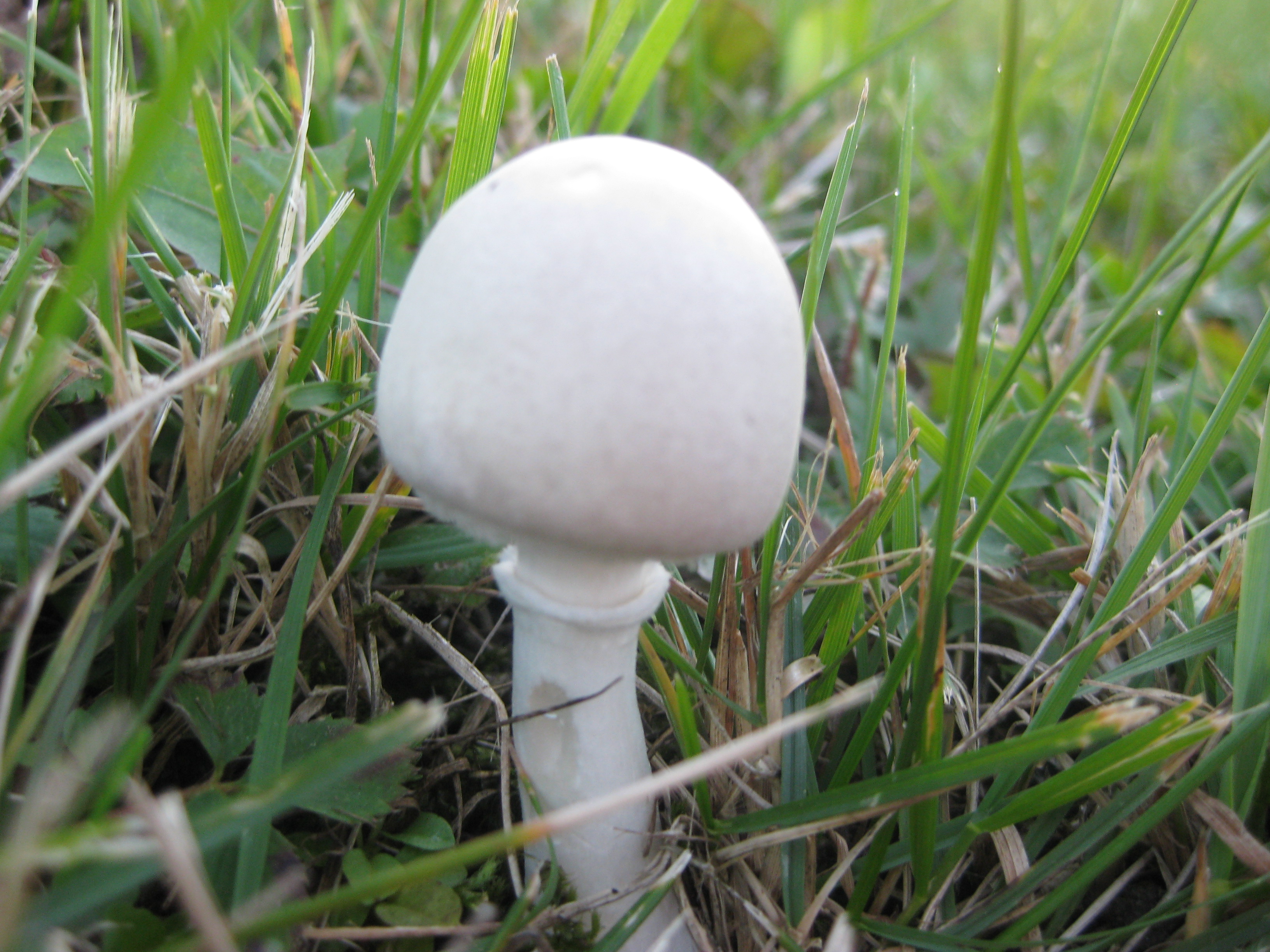 Smooth Lepiota - to be picked with caution because it looks a lot like dangerous varieties like 'the destroying angel'
Smooth Lepiota - to be picked with caution because it looks a lot like dangerous varieties like 'the destroying angel'


